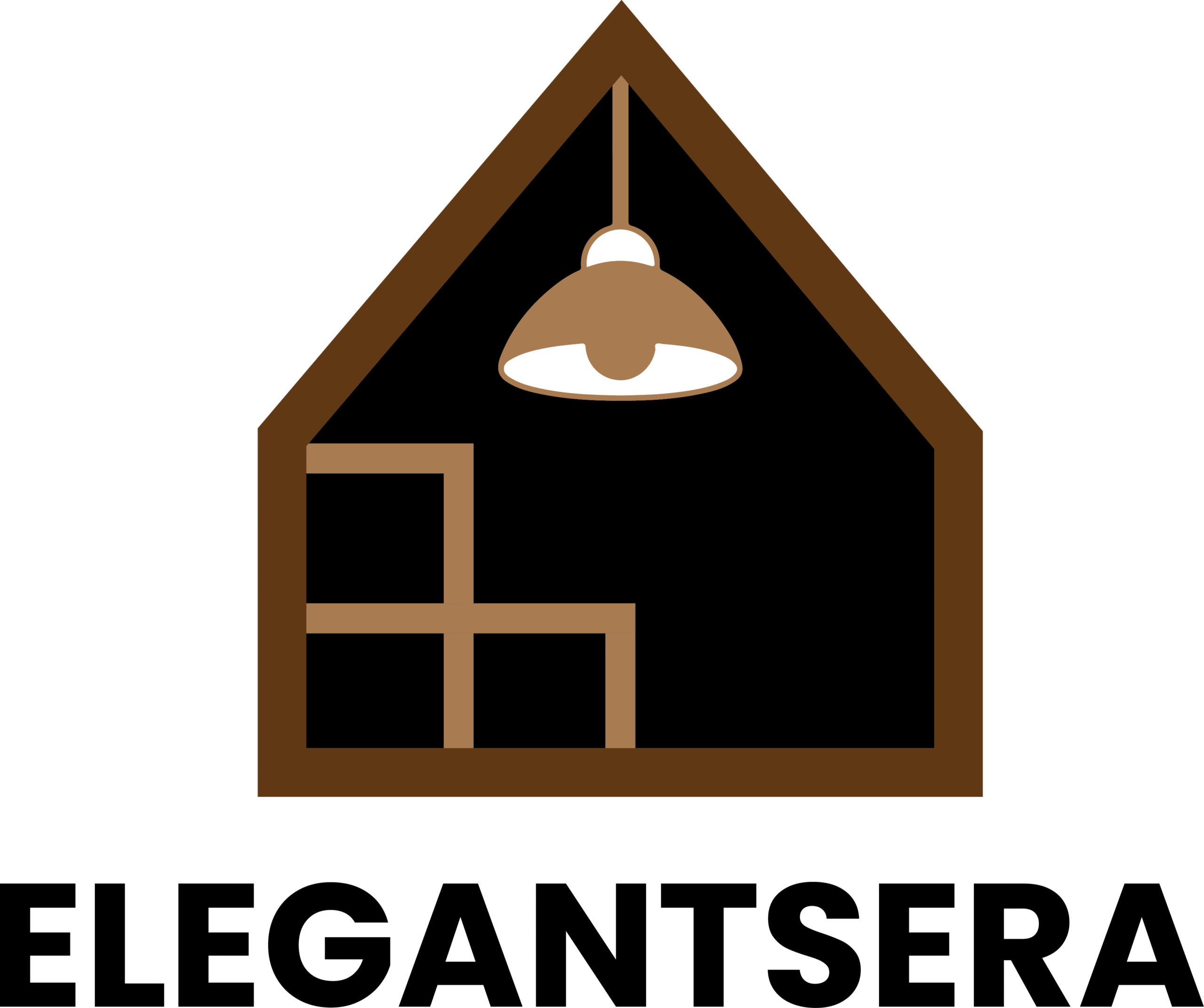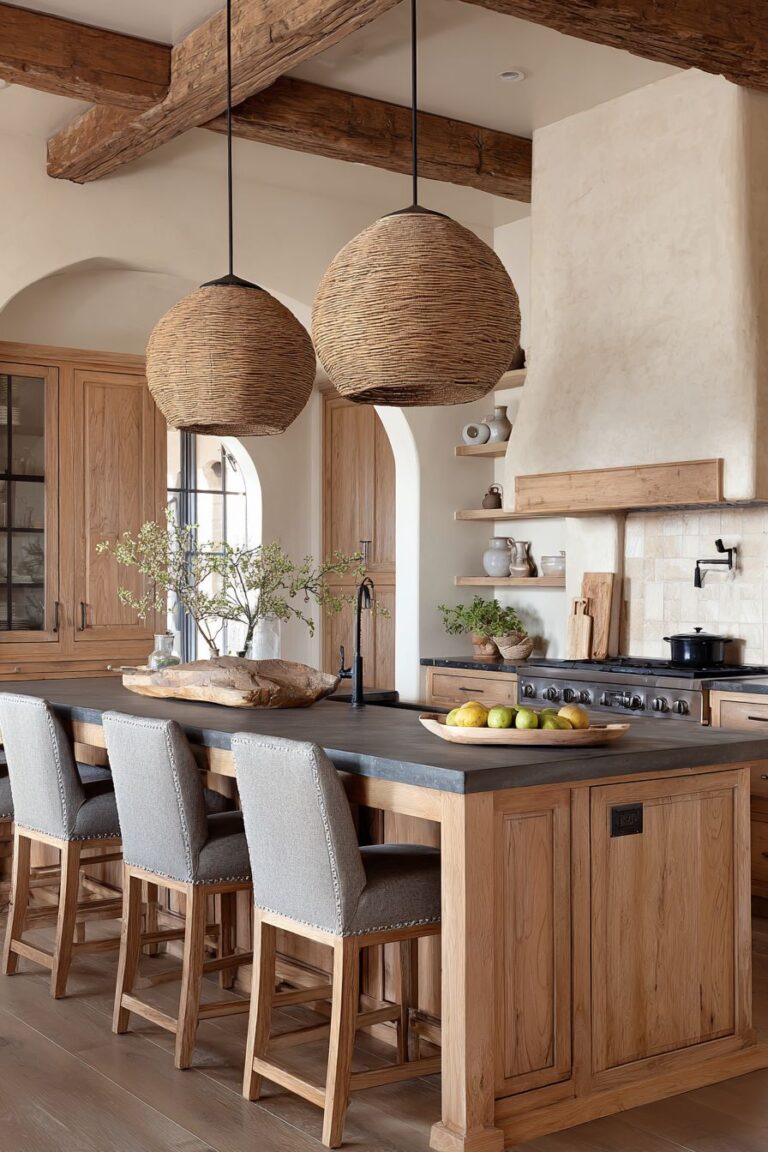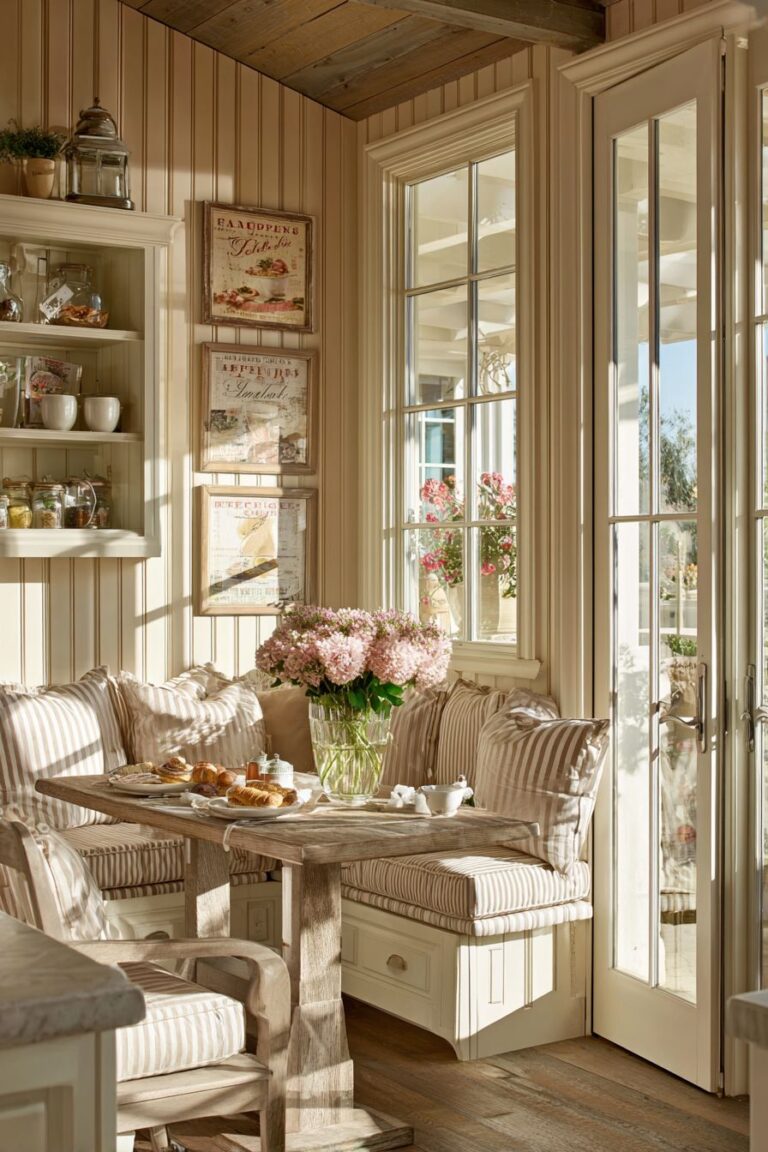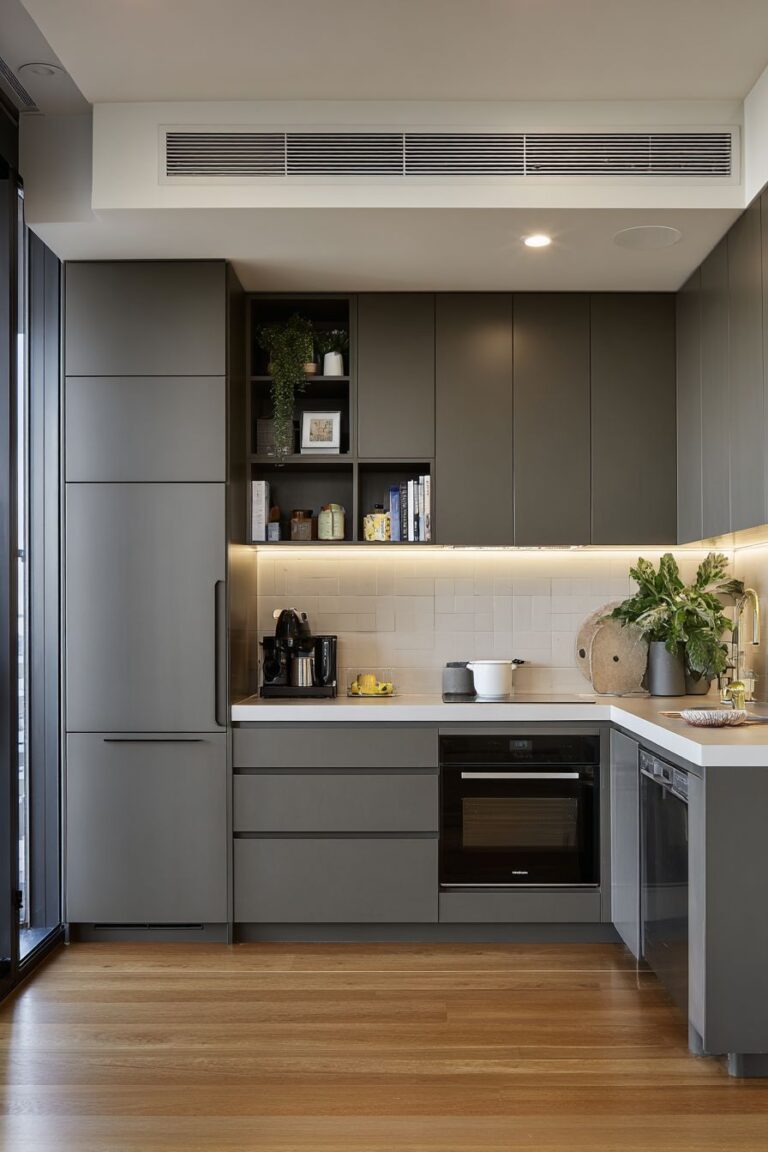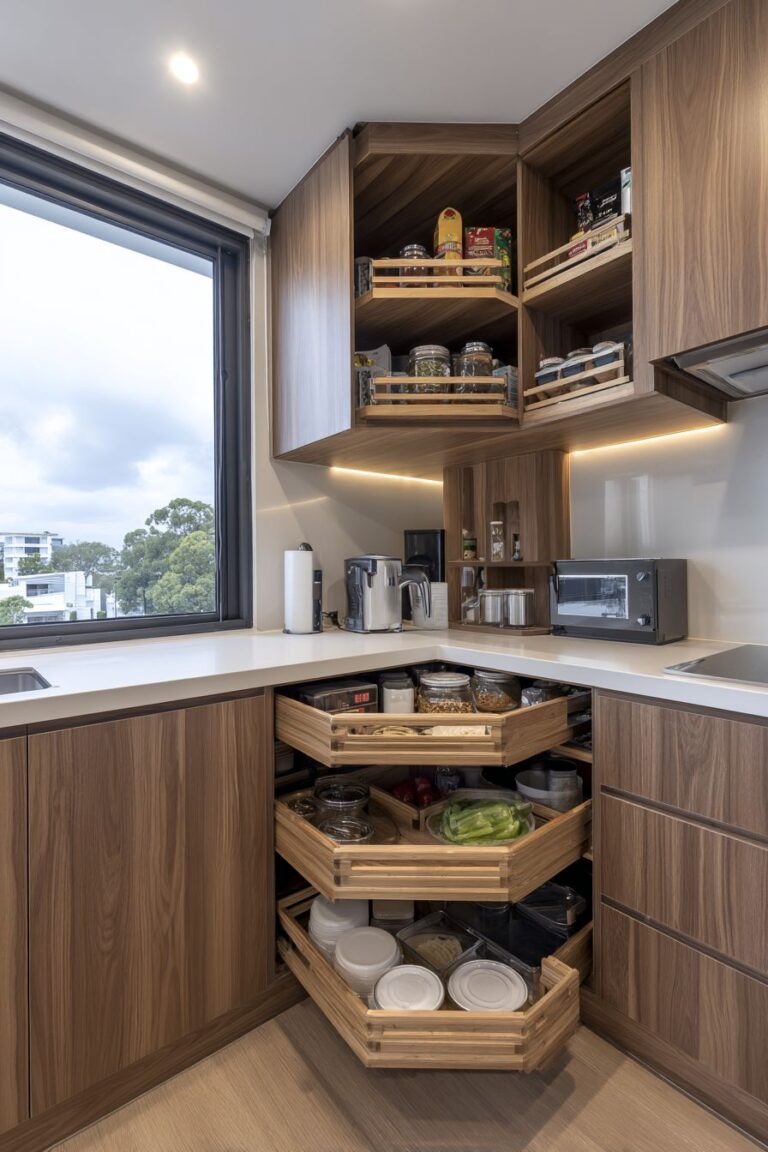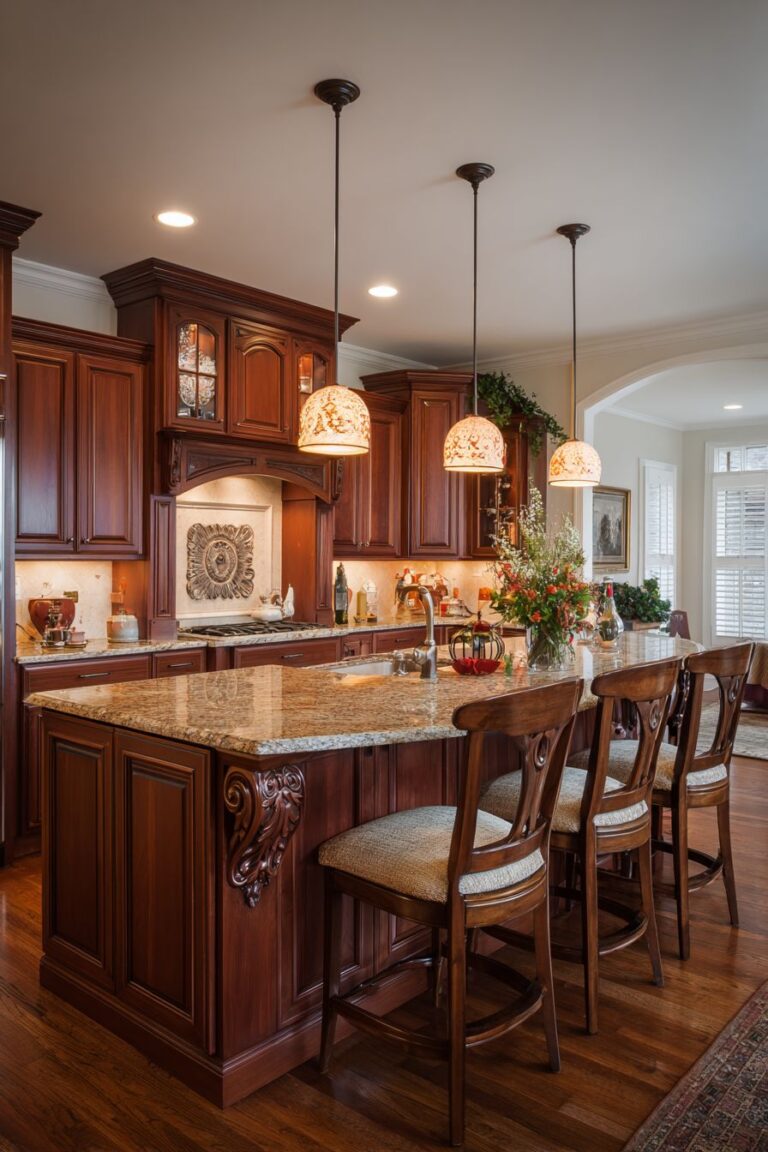20 Unique Kitchen Sink Design Ideas: Transform Your Culinary Space
The kitchen sink stands as one of the most essential and frequently used elements in any home, yet it’s often overlooked when planning interior design schemes. A thoughtfully chosen sink design can dramatically transform not only the functionality of your kitchen workspace but also serve as a stunning focal point that reflects your personal style and enhances the overall aesthetic appeal of your culinary sanctuary. From sleek contemporary installations to rustic farmhouse classics, the right sink design bridges the gap between practical necessity and beautiful artistry.
Modern homeowners are increasingly recognizing that kitchen sinks offer tremendous opportunities for creative expression while maintaining peak functionality. Whether you’re drawn to the timeless elegance of traditional materials, the cutting-edge appeal of smart technology integration, or the sustainable beauty of eco-friendly options, today’s sink designs cater to every lifestyle and design preference. The variety of materials, configurations, and styles available allows for unprecedented customization that can complement any architectural style or personal taste.
This comprehensive guide explores twenty distinctive kitchen sink design concepts that showcase the incredible diversity and innovation available in today’s market. Each design represents a unique approach to combining form and function, demonstrating how the right sink choice can elevate your entire kitchen experience while reflecting your individual design sensibilities and practical needs.
1. Modern Single-Basin Undermount Excellence
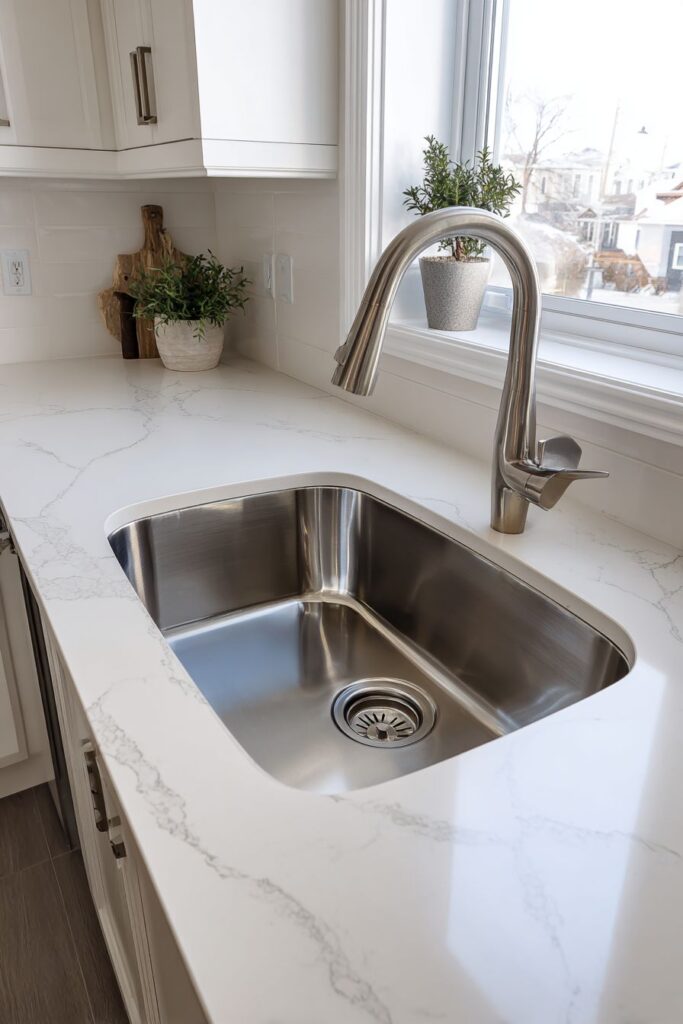
The epitome of contemporary kitchen design reveals itself through the sophisticated simplicity of a large single-basin undermount stainless steel sink with gracefully curved bottom contours. This design philosophy embraces the principle that form follows function, creating a workspace that flows seamlessly into the surrounding white quartz countertops adorned with subtle grey veining that adds visual interest without overwhelming the clean aesthetic. The undermount installation technique creates an uninterrupted surface that extends from counter to sink, eliminating the traditional rim that can harbor bacteria and debris.
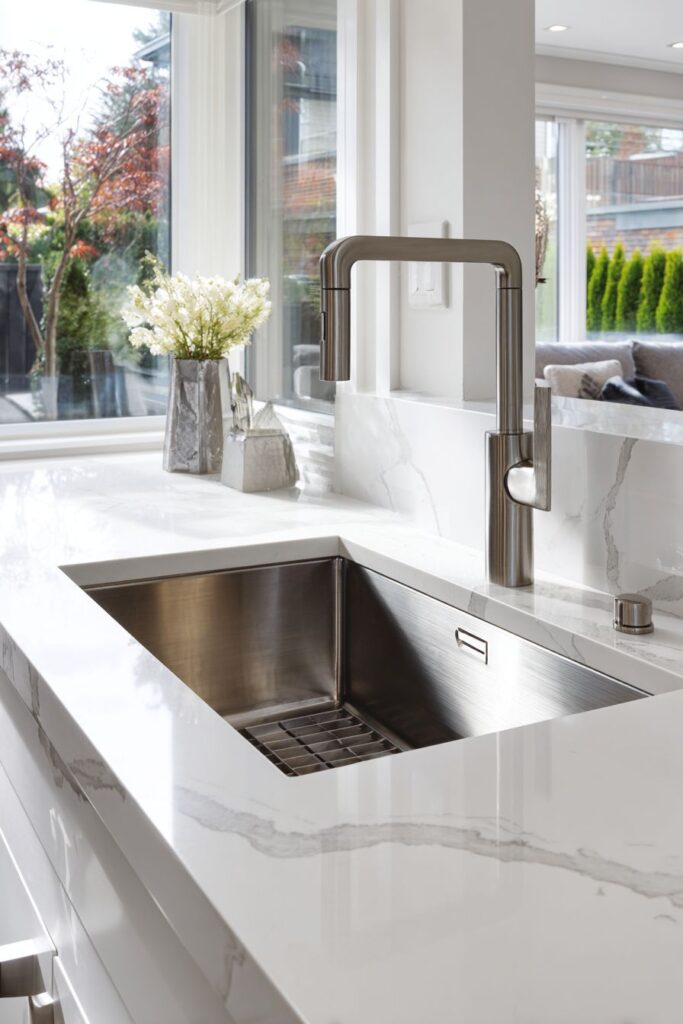
The curved bottom design represents a thoughtful engineering solution that facilitates effortless cleaning while preventing water from pooling in corners where traditional square-bottom sinks often struggle. This innovative approach transforms the daily routine of kitchen maintenance into a more efficient and pleasant experience. The brushed stainless steel finish provides durability that withstands the rigors of daily use while maintaining its lustrous appearance for years to come.
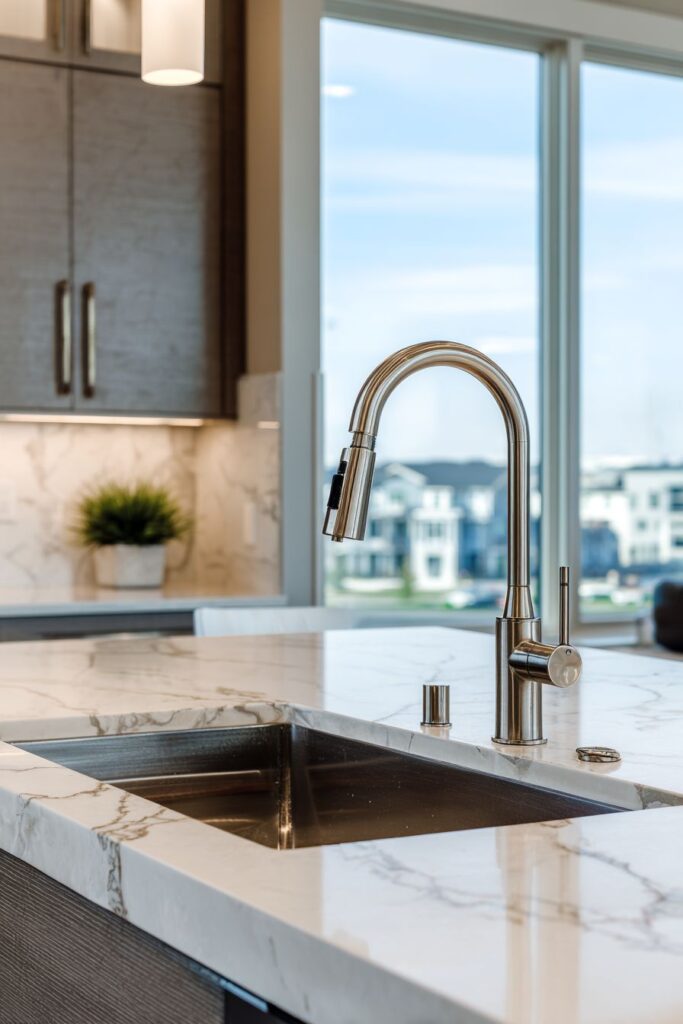
Natural light streaming through nearby windows creates dynamic reflections across the polished surfaces, highlighting the precision of the installation and the quality of the materials. The sleek pull-down faucet in brushed nickel finish complements the contemporary aesthetic while providing the flexibility needed for various kitchen tasks, from filling large pots to delicate vegetable washing.
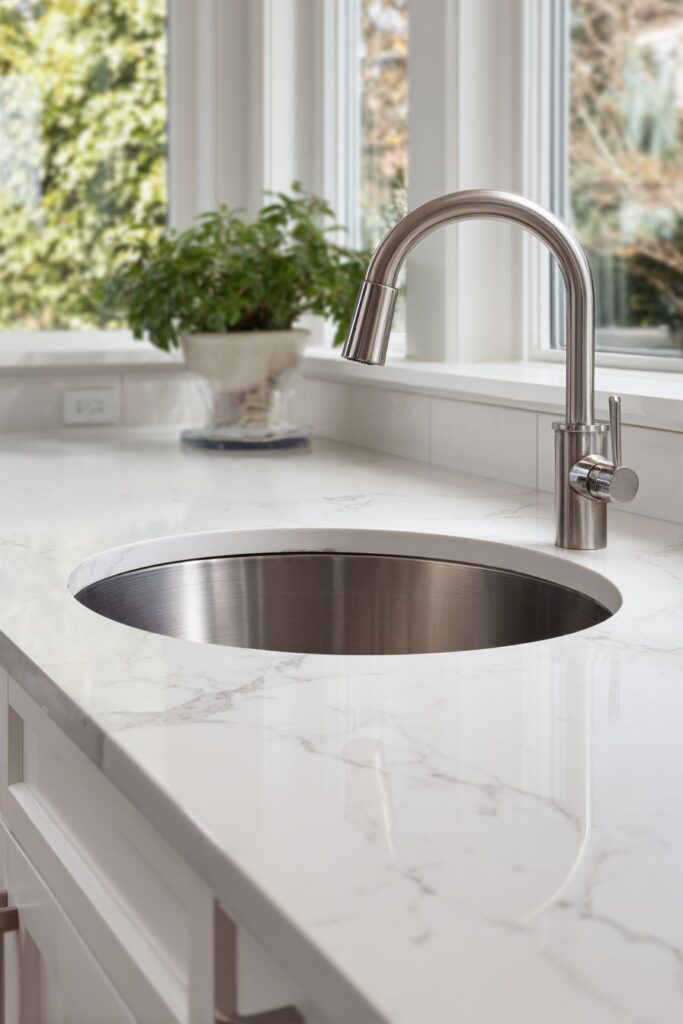
Key Design Tips:
- Choose undermount installation for seamless integration with countertops and easier cleanup
- Opt for curved bottom designs to eliminate hard-to-clean corners and improve water drainage
- Select brushed finishes over polished ones to minimize visible water spots and fingerprints
- Position near natural light sources to enhance the reflective qualities of stainless steel surfaces
- Coordinate faucet finishes with sink materials for cohesive design appeal
2. Farmhouse Apron-Front Ceramic Tradition
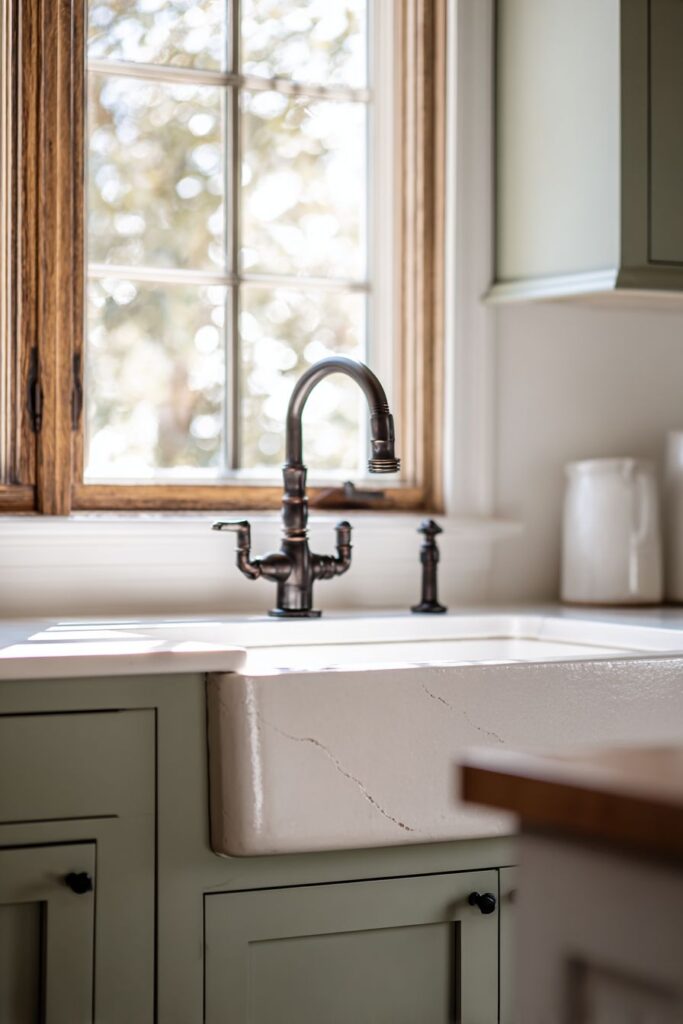
The enduring appeal of farmhouse kitchen design finds perfect expression in the substantial presence of a deep apron-front ceramic sink that commands attention through its generous proportions and authentic craftsmanship details. This classic white ceramic vessel showcases subtle variations in the glazed finish that speak to traditional pottery techniques, creating a surface that feels both refined and charmingly imperfect. The visible texture adds tactile interest that invites touch while providing practical benefits through improved grip when handling wet dishes and cookware.

Positioned beneath a window framed with natural wood trim, this sink design creates a connection between indoor and outdoor spaces that defines the farmhouse aesthetic. The sage green shaker-style cabinetry provides a sophisticated backdrop that allows the white sink to shine as the focal point while maintaining harmony with the overall color palette. The substantial depth of the basin accommodates everything from oversized roasting pans to delicate hand-washing requirements.
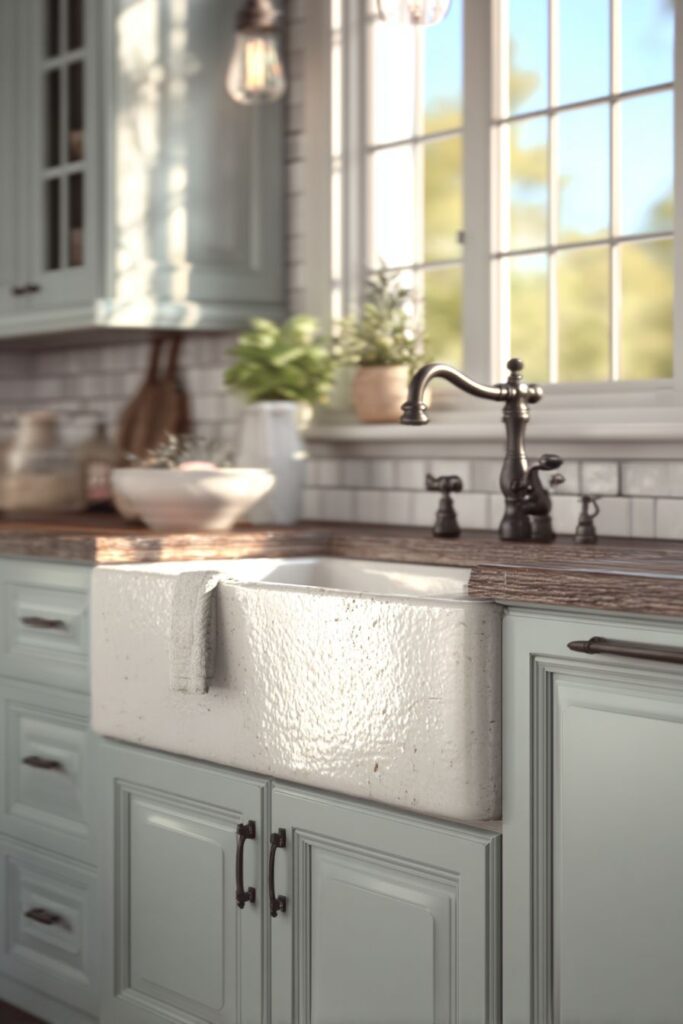
The vintage-inspired bridge faucet in oil-rubbed bronze introduces authentic period character that enhances the traditional appeal while providing modern functionality. The rich bronze finish develops a natural patina over time, adding to the authentic aged appearance that farmhouse enthusiasts cherish. Soft natural lighting creates gentle shadows that emphasize the sink’s impressive scale and the quality of traditional craftsmanship evident in every detail.
The apron-front design serves both aesthetic and practical purposes, reducing the reach required when working at the sink while creating a beautiful architectural element that extends the design vocabulary beyond mere function. This style choice reflects a commitment to time-tested design principles that prioritize both beauty and ergonomic comfort.
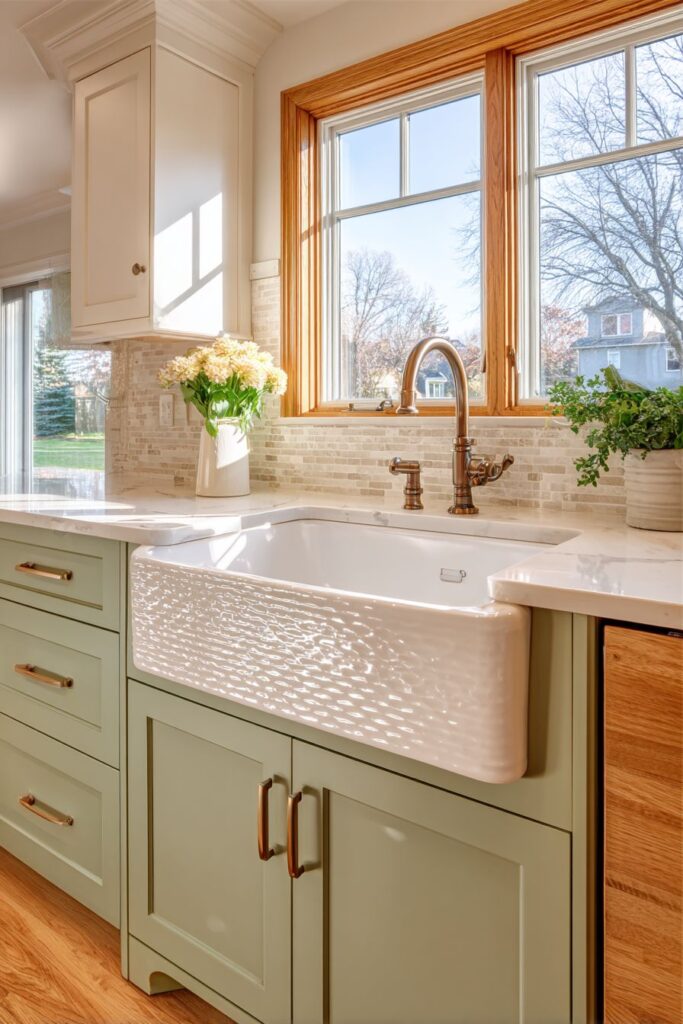
Key Design Tips:
- Select substantial depth for apron-front sinks to accommodate large cookware and serving pieces
- Choose authentic materials like ceramic or fireclay for traditional farmhouse appeal
- Coordinate cabinet colors with sink undertones for harmonious color relationships
- Install beneath windows when possible to create connection with outdoor spaces
- Embrace imperfections in glazed finishes as authentic character-building elements
3. Compact Corner-Mounted Space Optimization
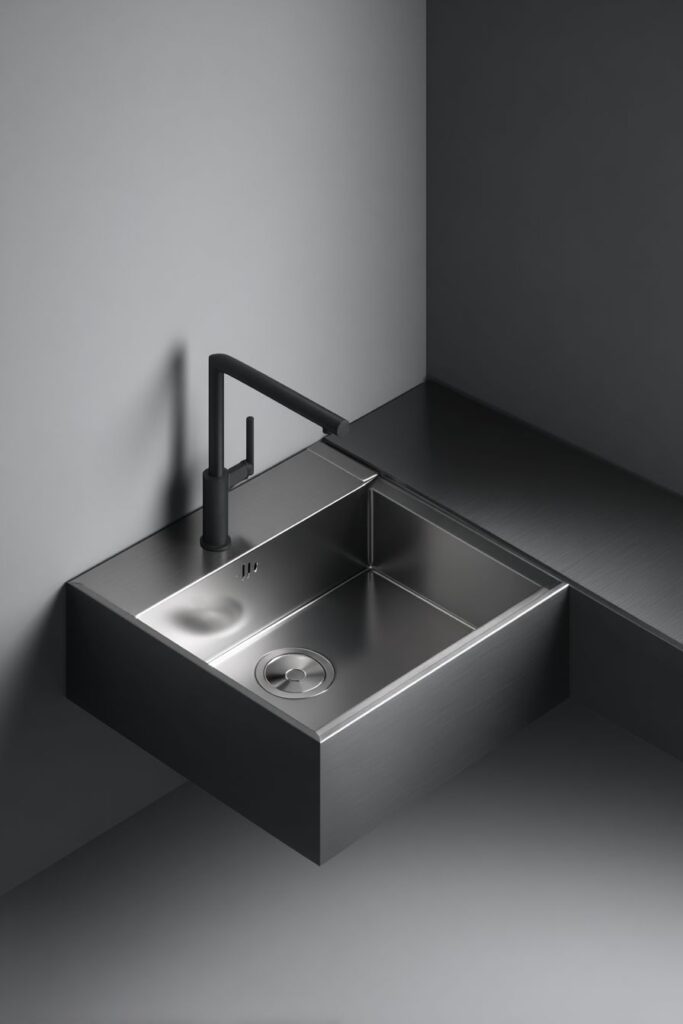
Small kitchen spaces demand creative solutions that maximize functionality without sacrificing style, and the corner-mounted dual-basin design represents the pinnacle of spatial efficiency. This ingenious stainless steel configuration features two basins of different sizes strategically positioned to make optimal use of corner areas that might otherwise go underutilized. The angular design philosophy transforms what could be wasted space into a highly functional workspace that serves multiple purposes simultaneously.
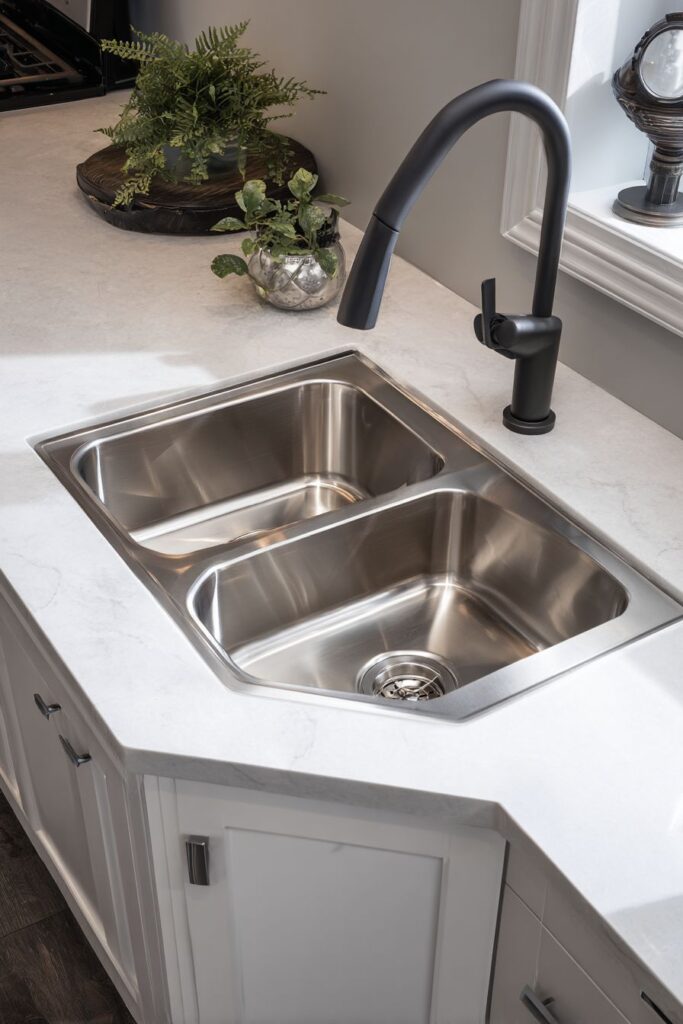
The larger basin handles primary washing duties while the smaller companion basin excels at food preparation tasks, creating a natural workflow that enhances kitchen efficiency. The different basin sizes acknowledge that kitchen tasks vary in scale and requirements, providing appropriate spaces for everything from washing large stockpots to rinsing small quantities of herbs or berries.
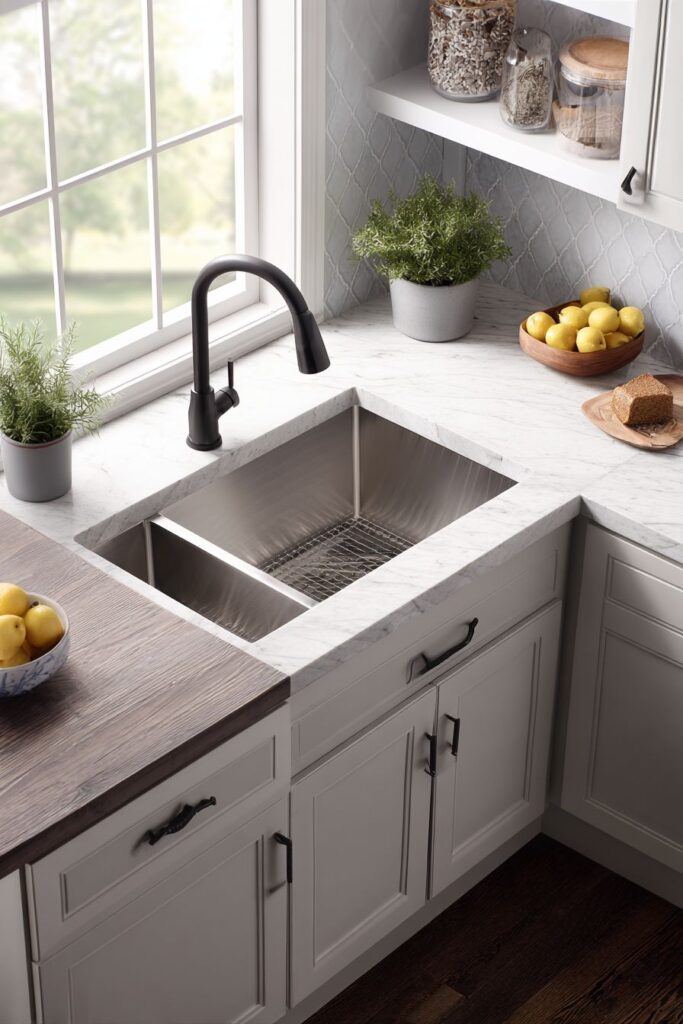
The modern geometric faucet in matte black finish creates a striking visual contrast against the stainless steel surfaces while introducing contemporary design elements that prevent the compact installation from feeling cramped or utilitarian. The bold color choice demonstrates how strategic accent elements can transform practical solutions into design statements that enhance rather than compromise the overall aesthetic appeal.
This corner-mounted approach proves that spatial constraints can inspire innovative design solutions that actually improve functionality compared to traditional installations. The angular configuration follows the natural lines of corner cabinetry, creating seamless integration that makes the most efficient use of available space while maintaining easy access for daily use.
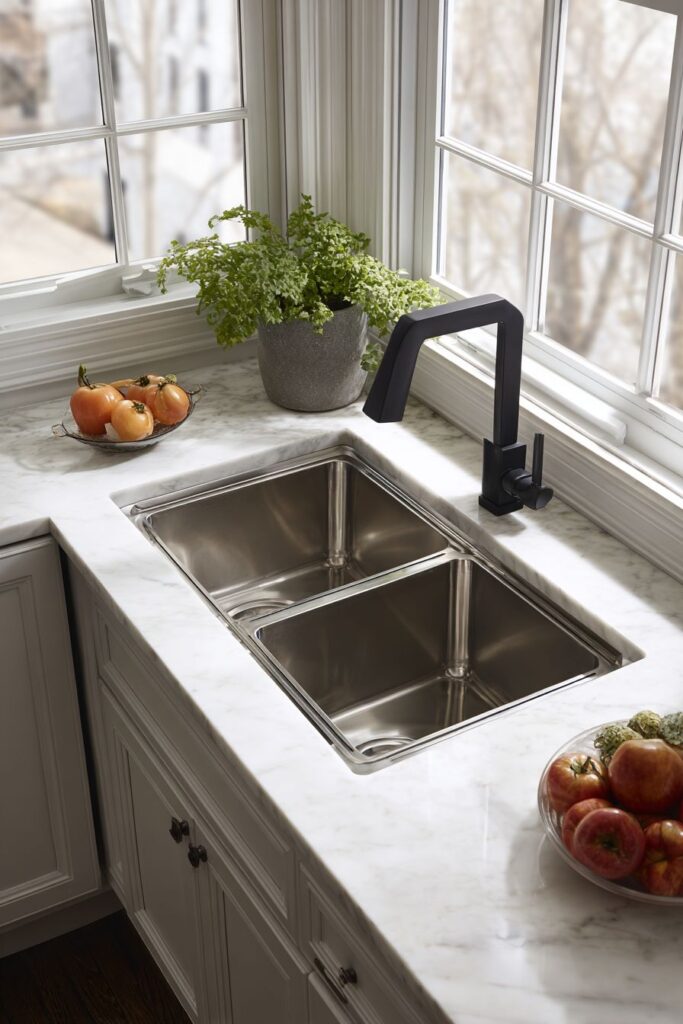
Key Design Tips:
- Utilize corner spaces with specially designed angular sink configurations
- Choose different basin sizes to accommodate varied kitchen tasks efficiently
- Add contrast with bold faucet finishes to create visual interest in compact spaces
- Plan workflow patterns to ensure easy access from multiple angles
- Consider swivel faucets for increased flexibility in corner installations
4. Industrial Commercial-Grade Functionality
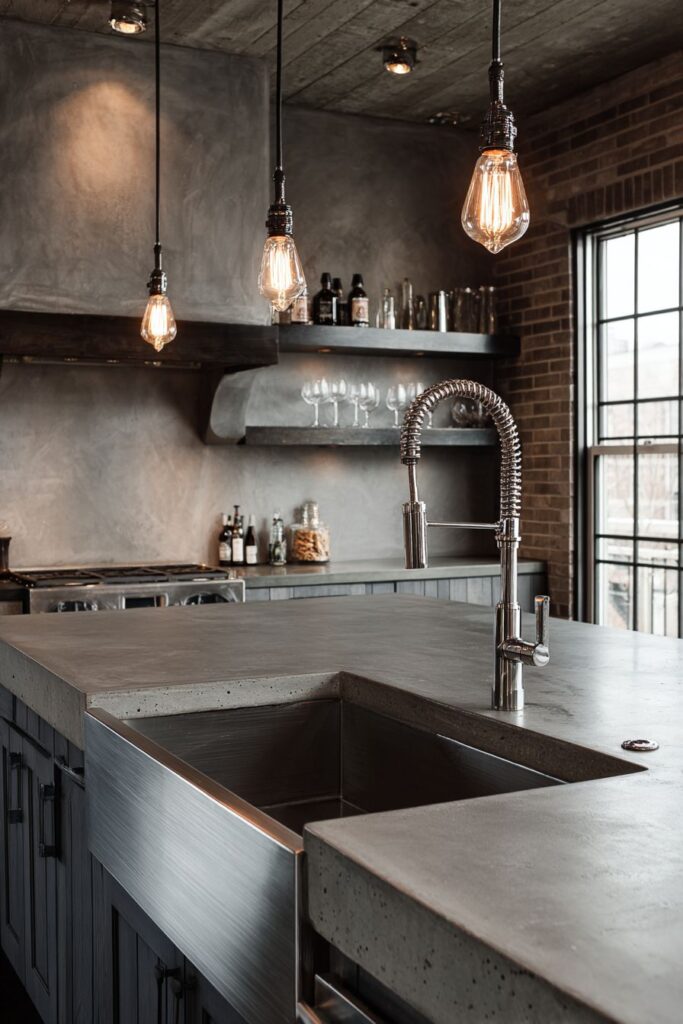
The raw beauty of industrial design principles transforms the kitchen sink into a statement of serious culinary intent through the substantial presence of a deep stainless steel basin with visible brushed texture that celebrates rather than conceals its commercial origins. This professional-grade installation embraces the aesthetic of working kitchens where form follows function in the most direct and honest manner possible. The commercial-style edges provide structural integrity while creating visual interest through their bold, uncompromising geometry.
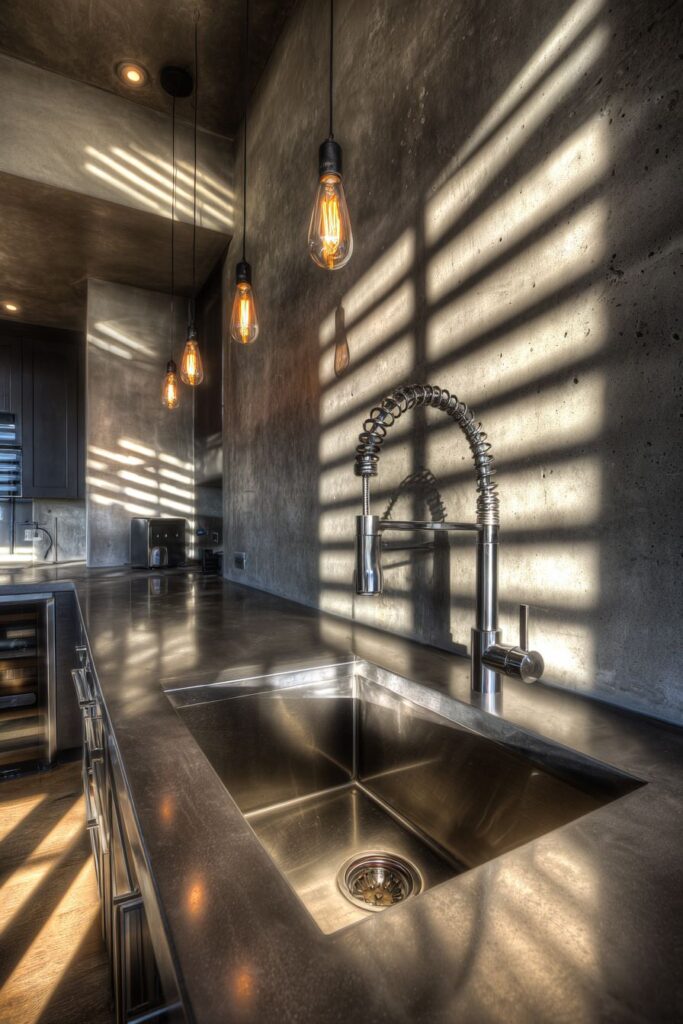
Mounted beneath exposed concrete countertops with natural aggregate visible throughout the surface, this design approach celebrates authentic materials in their most elemental forms. The concrete’s inherent variations and occasional air bubbles become design features rather than flaws, creating a surface that tells the story of its creation while providing the durability required for serious cooking endeavors. The cool grey tones provide a neutral backdrop that allows the stainless steel sink to command attention through its impressive scale and professional detailing.
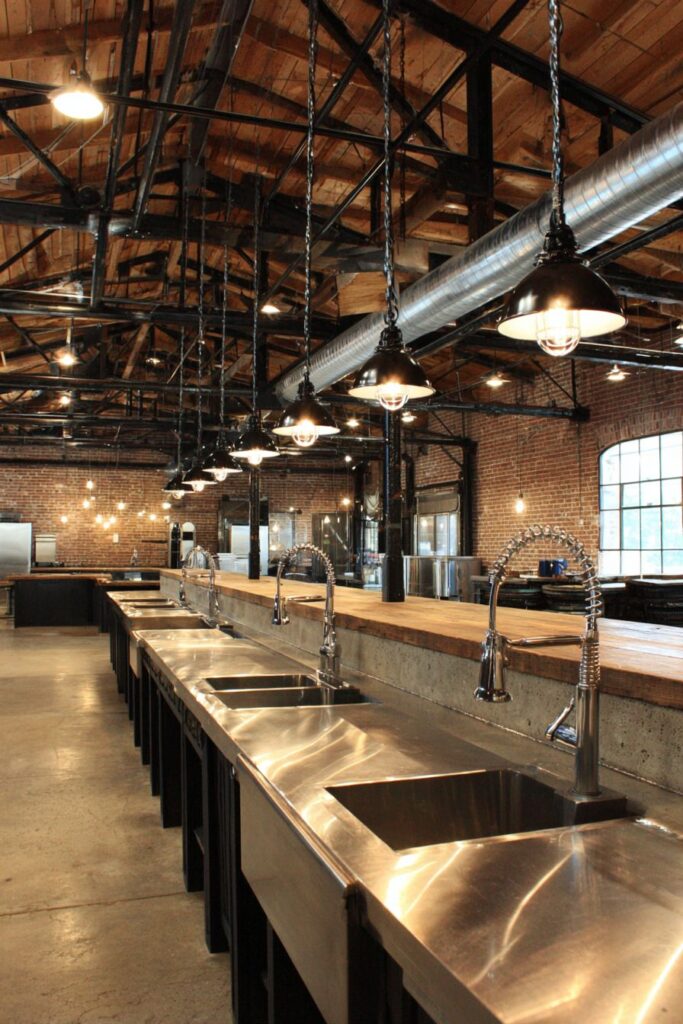
The spring coil faucet design introduces genuine commercial functionality that can handle the demands of serious home cooks who prepare large quantities of food or frequently entertain guests. The flexible design allows for precise control over water direction and pressure, making it easier to clean large pots or rinse bulky ingredients that might challenge conventional residential faucets.
Edison bulb pendant lighting creates dramatic shadows that highlight the interplay between smooth stainless steel surfaces and the rough texture of exposed concrete, emphasizing the intentional contrast between refined and raw materials. This lighting choice reinforces the industrial theme while providing practical task illumination for food preparation activities.
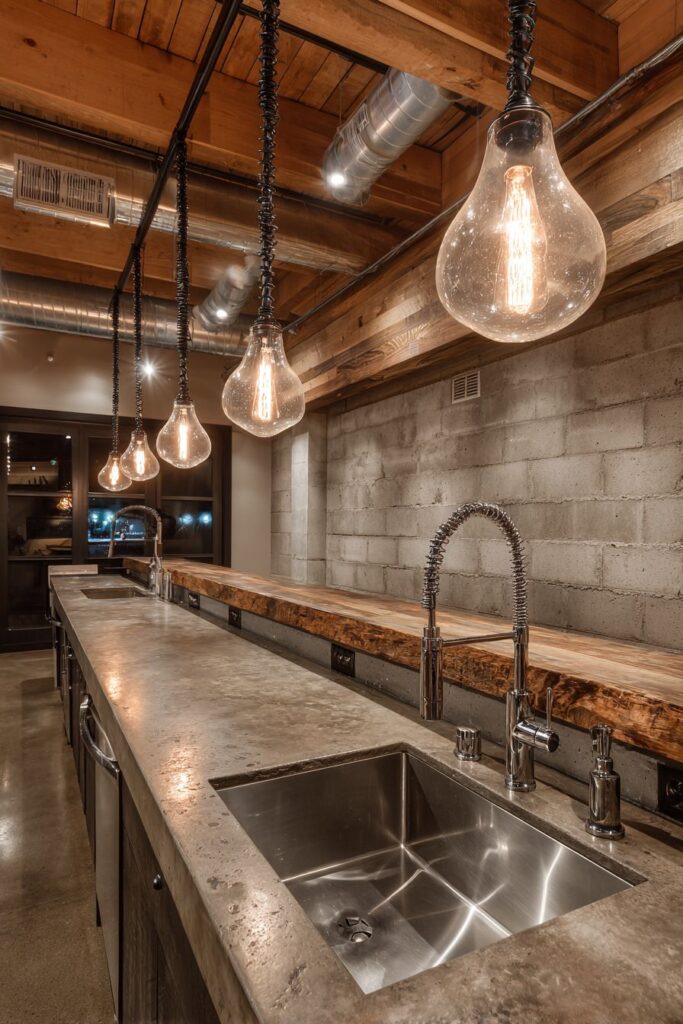
Key Design Tips:
- Embrace visible textures in brushed stainless steel for authentic industrial appeal
- Pair with raw materials like exposed concrete for honest material relationships
- Choose commercial-grade fixtures for enhanced durability and professional functionality
- Add dramatic lighting to highlight material contrasts and create atmosphere
- Plan for heavy-duty use with reinforced mounting systems for professional-grade sinks
5. Luxury Hand-Hammered Copper Artistry
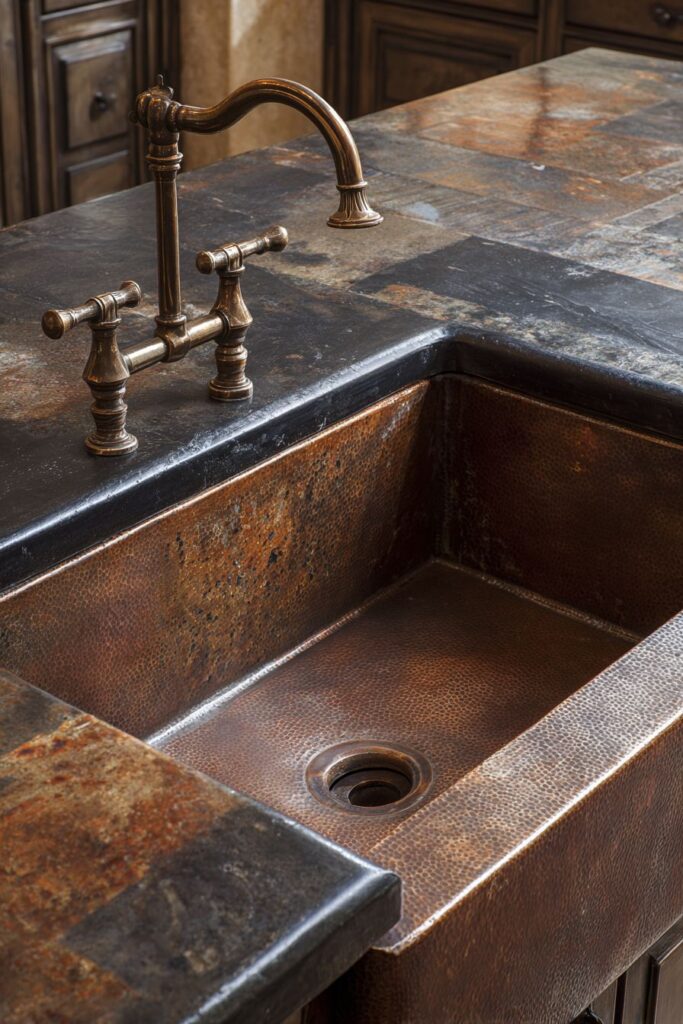
The ultimate expression of artisanal luxury reveals itself through the warm glow of a hand-hammered copper sink where every surface tells the story of skilled craftsmanship and centuries-old metalworking traditions. Each hammer mark represents an individual moment in the creation process, resulting in a surface texture that cannot be replicated by machine manufacturing. The natural patina development adds layers of visual complexity that evolve over time, creating a living finish that becomes more beautiful with age and use.
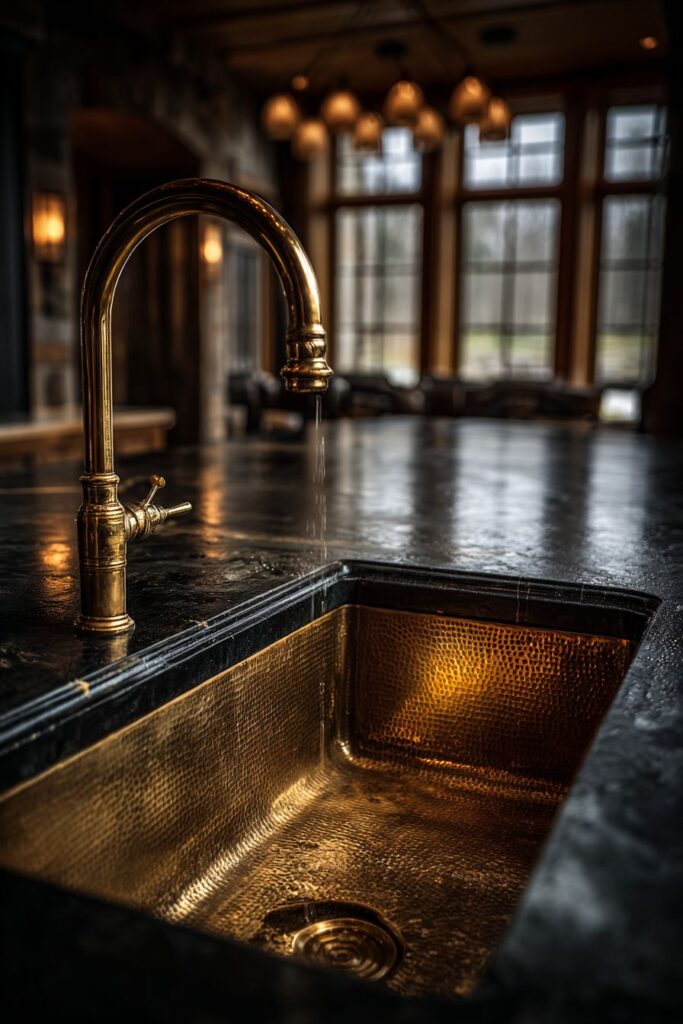
Integrated into honed black granite countertops with a leather finish, this design pairing creates a sophisticated material dialogue between warm and cool tones that elevates the entire kitchen aesthetic. The granite’s matte surface provides the perfect backdrop for the copper’s lustrous variations while the leather finish adds tactile appeal that invites touch. This material combination represents a masterful balance between opposing elements that complement rather than compete with each other.
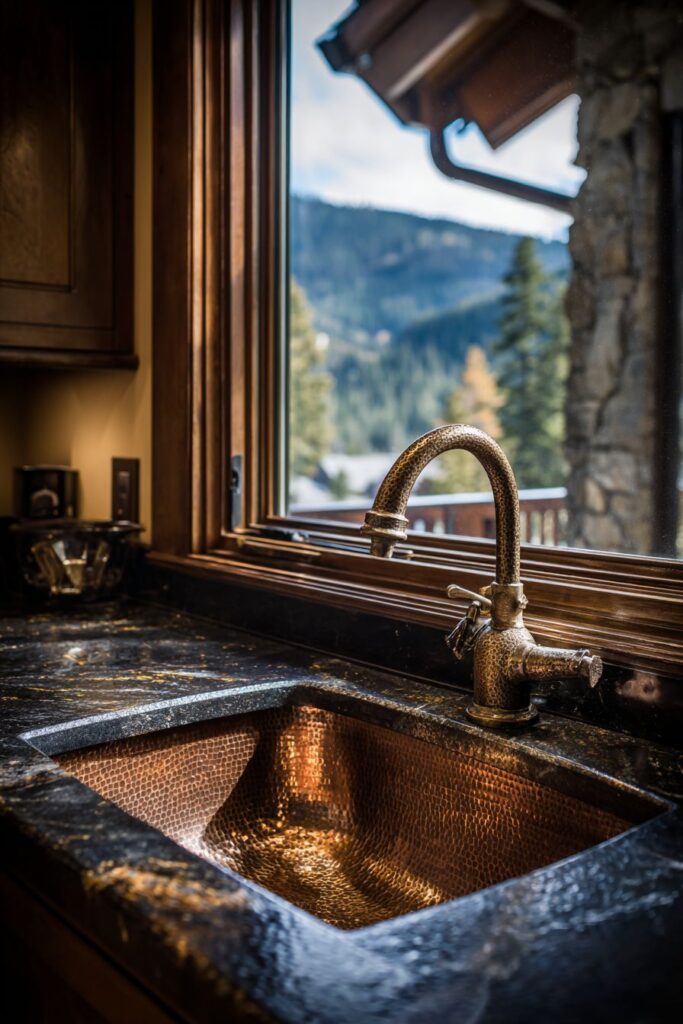
The elegant bridge faucet in antique brass maintains the warm metal theme while introducing traditional design elements that enhance the overall sense of luxury and craftsmanship. The antique brass finish develops its own patina over time, creating a harmonious aging process that unifies all metal elements in the design. The bridge design adds architectural interest while providing the clearance needed for large cookware and serving pieces.
Natural lighting from clerestory windows creates subtle highlights that dance across the copper’s hammered surface, revealing the depth and complexity of the artisan’s work while providing practical illumination for kitchen tasks. The elevated window placement ensures privacy while flooding the workspace with beautiful natural light throughout the day.
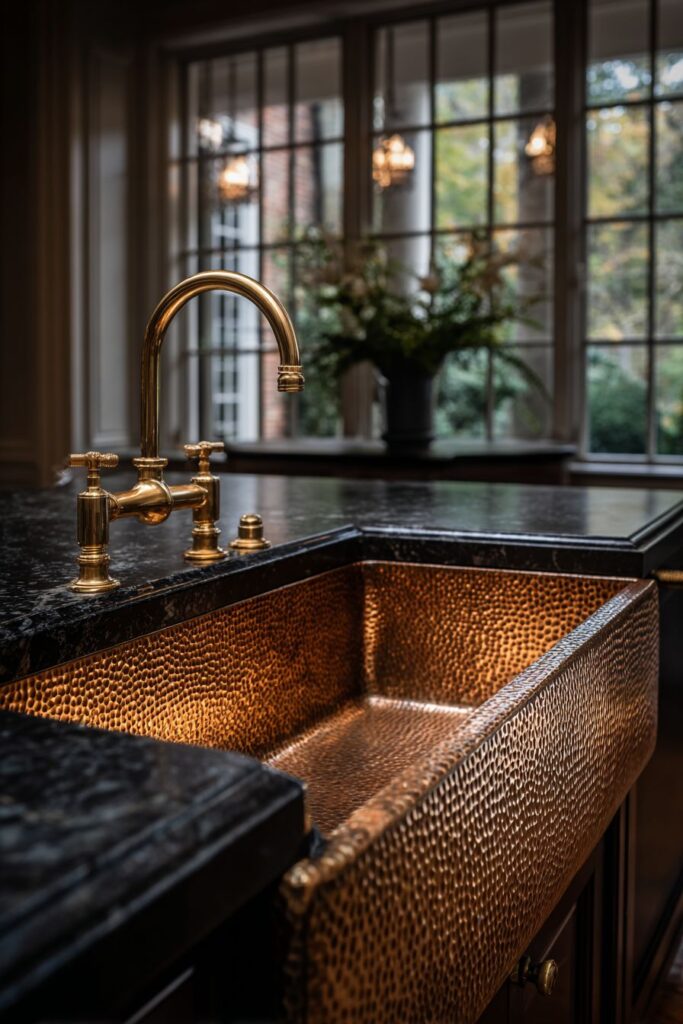
Key Design Tips:
- Celebrate artisanal details in hand-hammered surfaces as unique design elements
- Pair warm metals with cool stone surfaces for sophisticated material contrasts
- Plan for patina development as part of the design evolution over time
- Choose complementary finishes in all metal elements for cohesive luxury appeal
- Position for optimal lighting to showcase the beauty of hammered textures
6. Scandinavian Minimalist Serenity
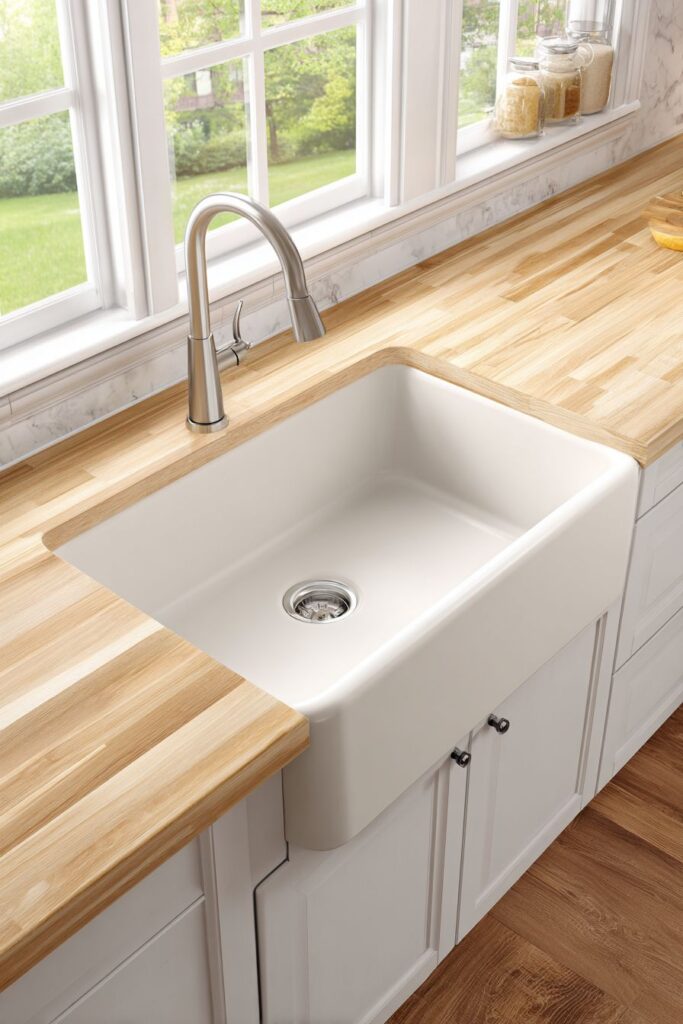
The peaceful essence of Scandinavian design philosophy finds perfect expression in the clean-lined rectangular ceramic sink with soft rounded corners that embody the concept of functional beauty through thoughtful simplicity. The matte white finish creates a sense of purity and calm that serves as a meditation on the beauty of unadorned surfaces and honest materials. This design approach proves that luxury can be found in restraint rather than excess, creating spaces that feel both sophisticated and approachable.
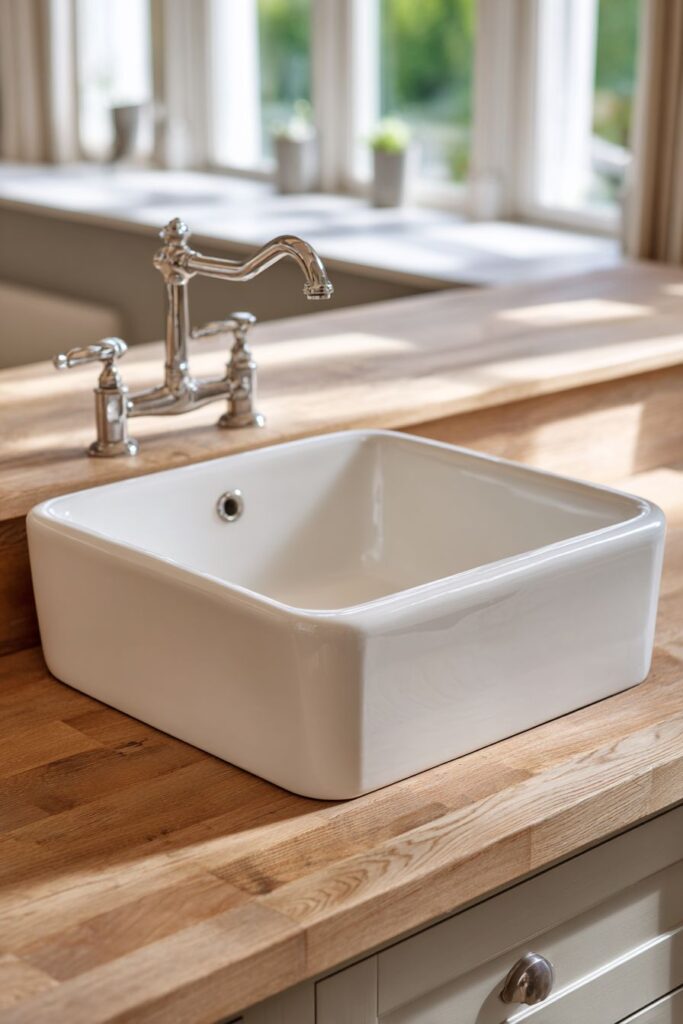
Light oak butcher block countertops showcase natural grain patterns that introduce warmth and organic texture without disrupting the serene color palette. The wood’s natural variations tell the story of the tree’s growth while providing a sustainable and renewable surface that improves with age and proper care. The combination of white ceramic and natural oak creates a material relationship that feels both timeless and contemporary, avoiding trend-driven choices in favor of enduring beauty.
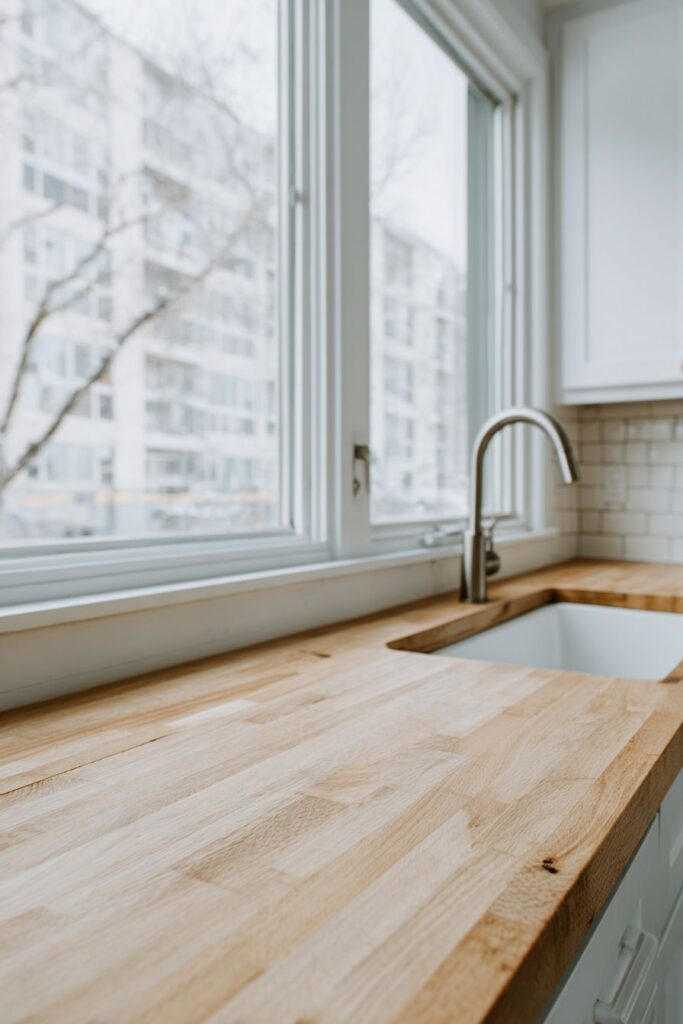
The simple single-handle faucet in brushed stainless steel maintains the understated aesthetic while providing modern functionality that supports efficient kitchen workflows. The minimal design language extends to every detail, from the absence of unnecessary decorative elements to the careful consideration of proportions that create visual harmony throughout the space.
Abundant natural light creates a bright, airy atmosphere that emphasizes the connection to outdoor environments that Scandinavian design traditionally celebrates. The emphasis on natural illumination reduces dependence on artificial lighting while creating dynamic shadows that highlight the subtle textures present in both the ceramic sink and wooden countertops.
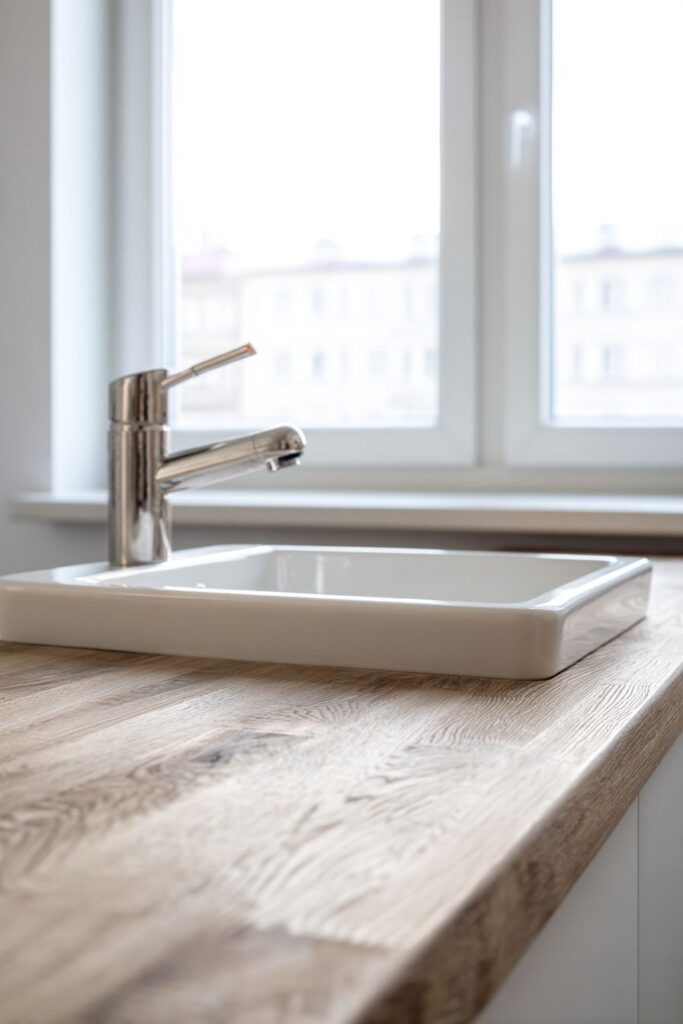
Key Design Tips:
- Embrace soft geometric forms with rounded corners for approachable minimalism
- Combine white ceramics with natural wood for classic Scandinavian material relationships
- Maximize natural light to create the bright, airy atmosphere characteristic of Nordic design
- Choose matte finishes to reduce visual noise and maintain serene surface qualities
- Focus on proportion rather than decoration for sophisticated simplicity
7. Mediterranean Hand-Painted Ceramic Charm
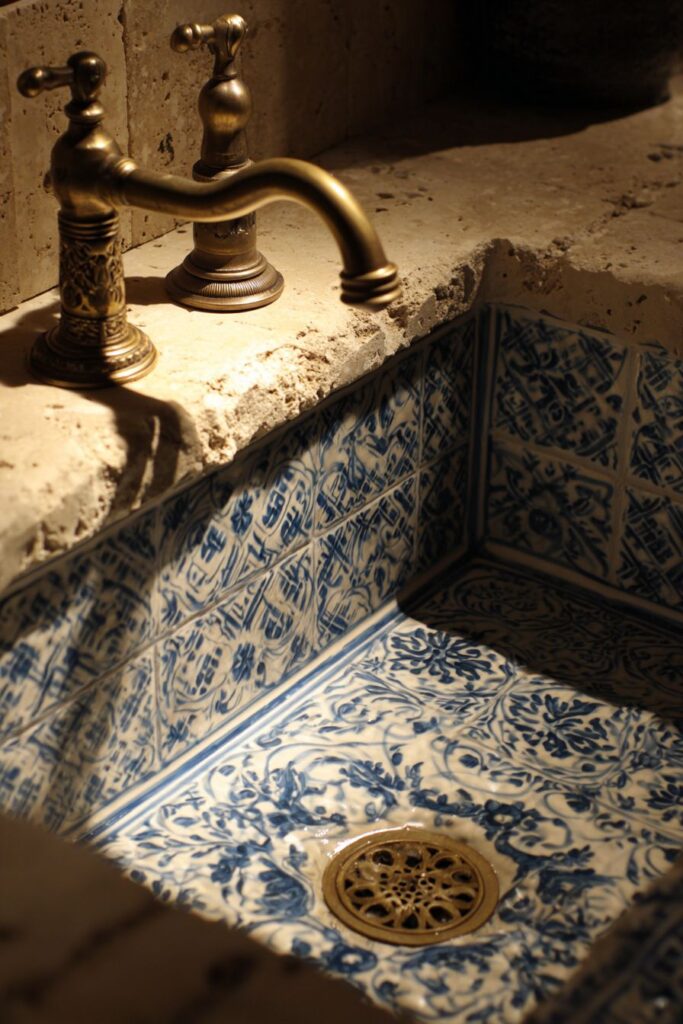
The vibrant spirit of Mediterranean design comes alive through the artistic beauty of a decorative ceramic sink adorned with hand-painted blue and white tile patterns that echo the traditional pottery techniques of coastal European villages. Each brushstroke represents a connection to generations of artisans who perfected these decorative techniques, creating patterns that feel both ancient and eternally fresh. The blue and white color combination evokes memories of seaside terraces and sun-drenched courtyards where life moves at a more relaxed pace.
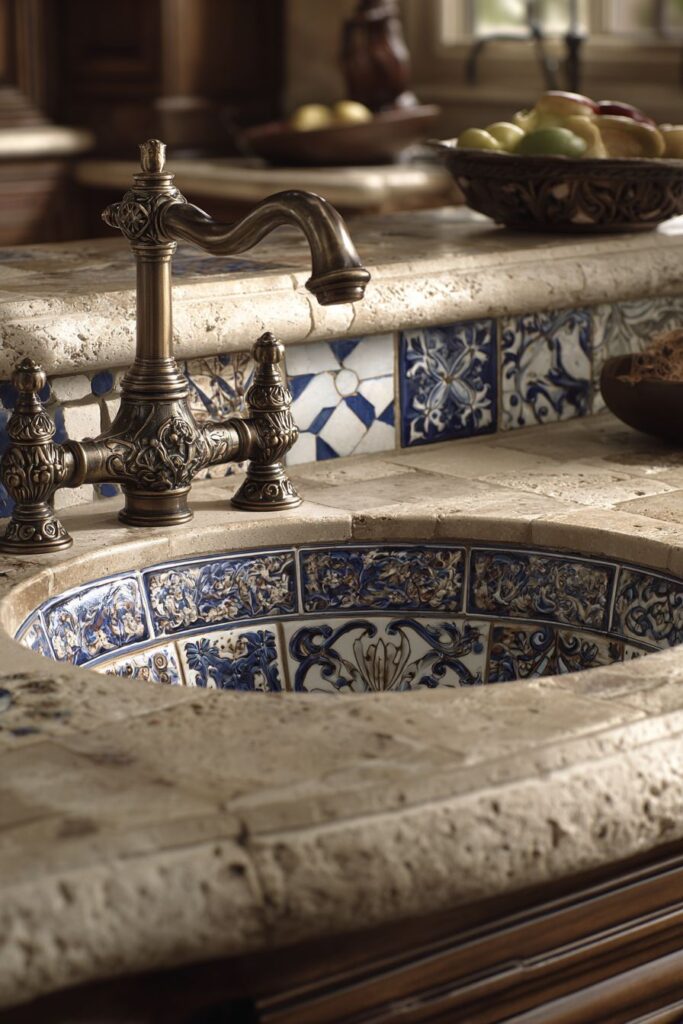
Surrounded by tumbled travertine countertops with natural edge variations, this design celebrates the beauty of imperfection and the authentic character that comes from natural stone formation processes. The travertine’s warm beige tones provide the perfect neutral backdrop for the vibrant ceramic patterns while adding their own textural interest through the stone’s naturally occurring holes and surface variations. This material combination creates a sense of authenticity that cannot be achieved through manufactured alternatives.
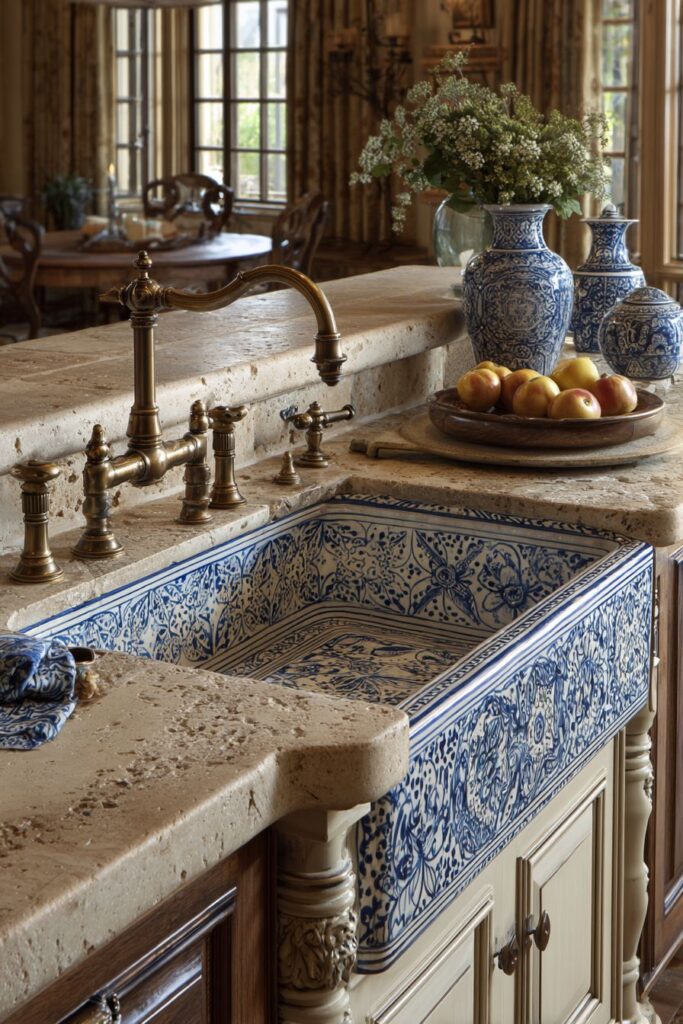
The ornate faucet in aged brass features decorative detailing that complements the artistic sink while maintaining the Mediterranean theme through its warm metallic finish and traditional design elements. The aged brass develops a natural patina that enhances the authentic feel while providing durability that can withstand the coastal moisture that often characterizes Mediterranean climates.
Warm ambient lighting creates inviting shadows that highlight the dimensional quality of both the painted ceramic patterns and the natural stone textures, transforming the sink area into a focal point that draws the eye and invites closer inspection. This lighting approach emphasizes the artisanal quality of all materials while creating an atmosphere that encourages lingering and social interaction.
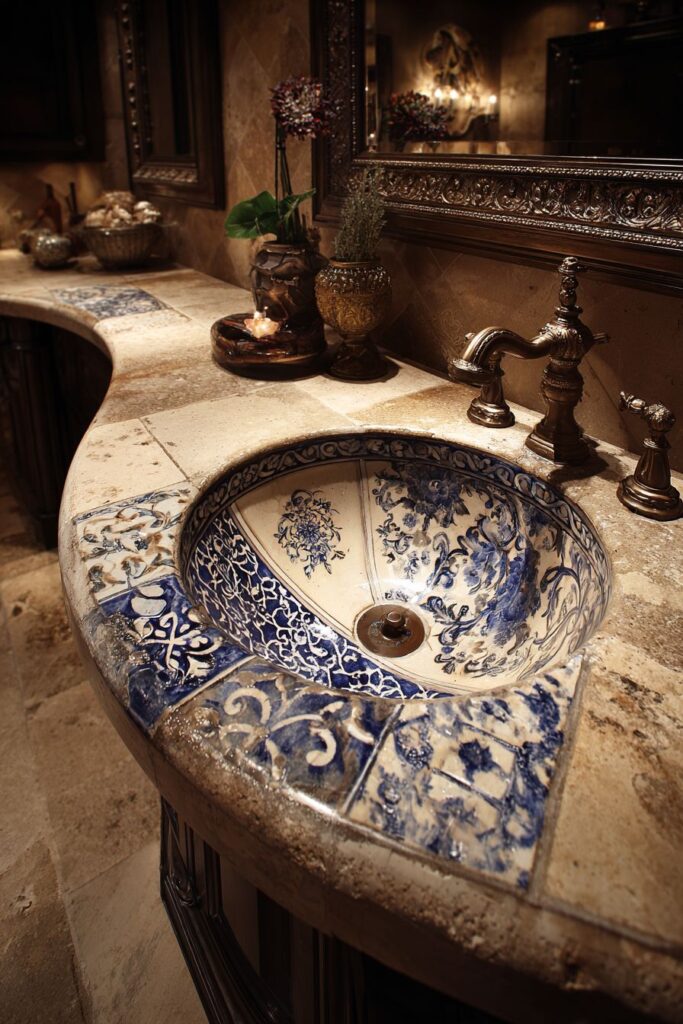
Key Design Tips:
- Celebrate hand-painted details as artistic focal points worthy of featured placement
- Choose complementary stone textures that enhance rather than compete with decorative elements
- Warm lighting enhances the dimensional quality of both painted and natural textures
- Embrace imperfections in natural materials as authentic character elements
- Create pattern relationships between ceramic designs and surrounding material textures
8. Contemporary Monochromatic Drama
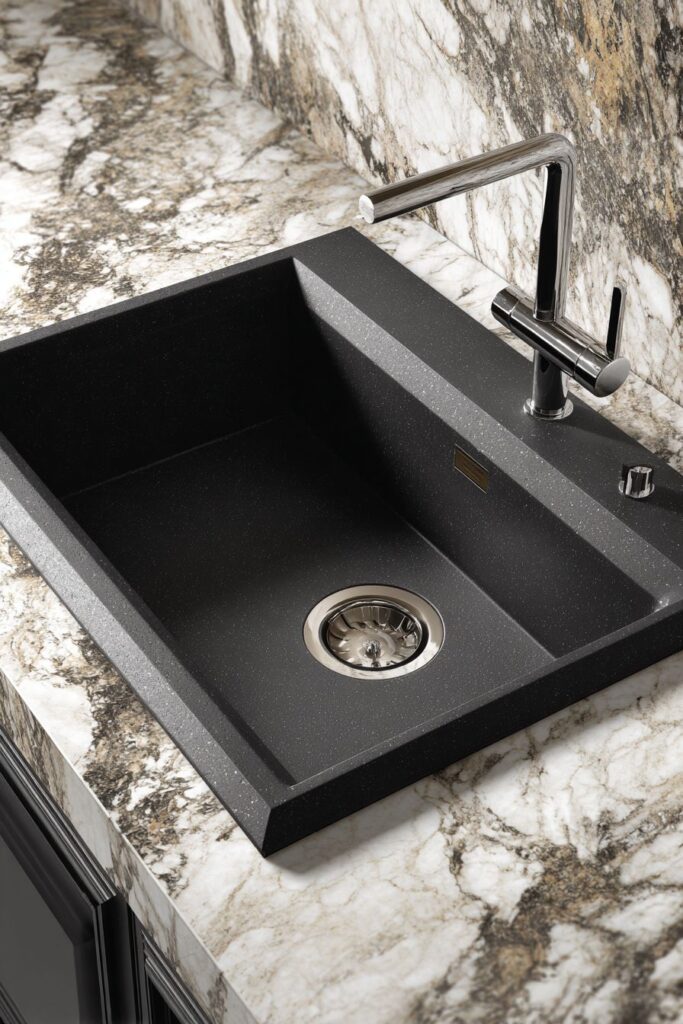
The bold sophistication of contemporary design reaches its zenith through the striking presence of a sleek black granite composite sink with smooth matte finish that creates dramatic contrast against pristine white marble countertops featuring bold veining patterns. This monochromatic approach demonstrates how the strategic use of opposing tones can create visual tension that energizes the entire space while maintaining an underlying sense of sophisticated restraint.
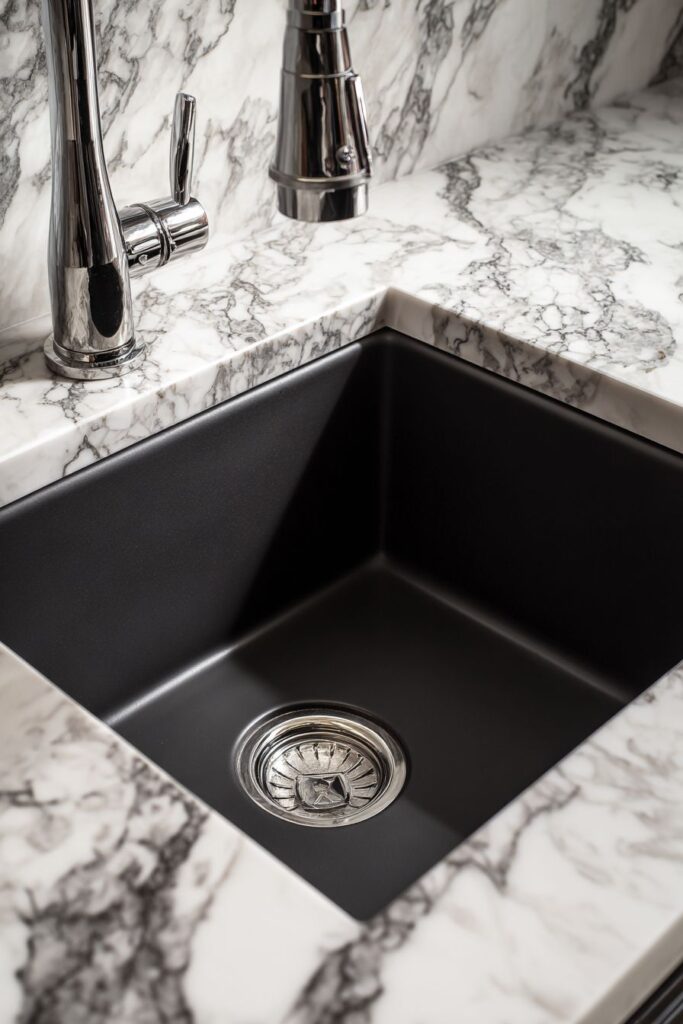
The granite composite material offers exceptional durability while providing the deep, rich color saturation that makes this design approach so visually compelling. The matte finish eliminates distracting reflections while creating a surface that feels substantial and permanent. The precise geometric lines of the sink design reinforce the contemporary aesthetic while providing practical benefits through easy cleaning and maintenance.
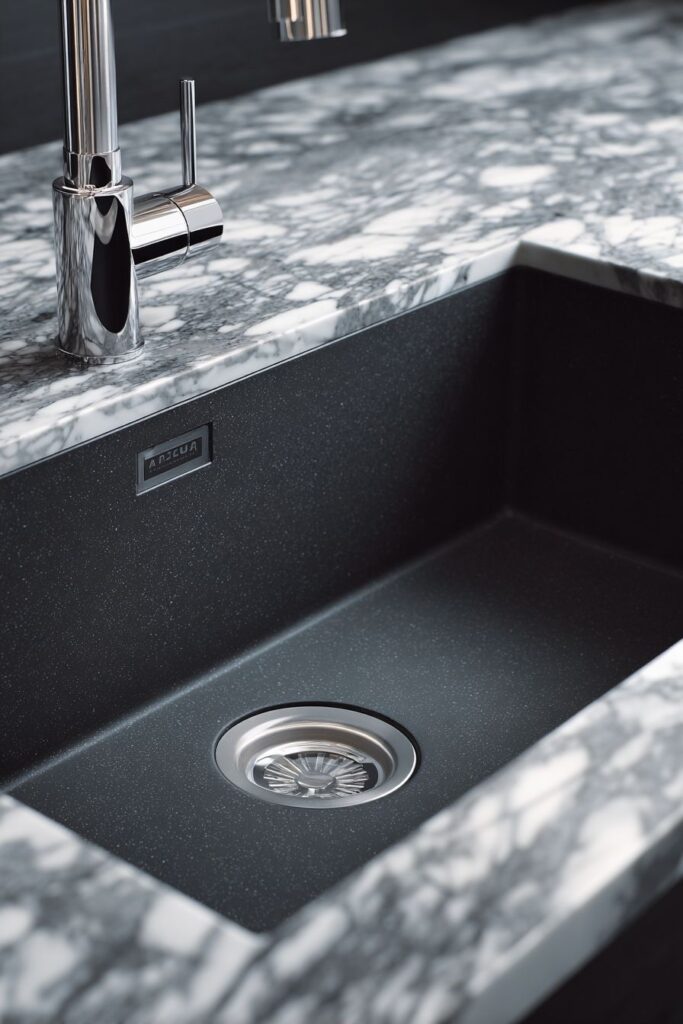
The white marble countertops with dramatic veining provide a luxurious backdrop that elevates the entire installation while creating visual movement that prevents the monochromatic scheme from feeling static. Each vein pattern tells a geological story spanning millions of years, adding depth and complexity to what might otherwise be a simple color relationship.
The modern touchless faucet in polished chrome introduces cutting-edge technology while maintaining the clean aesthetic lines that define contemporary design. The touchless activation provides practical benefits for busy cooks while the polished chrome finish creates brilliant reflections that add sparkle to the monochromatic palette.
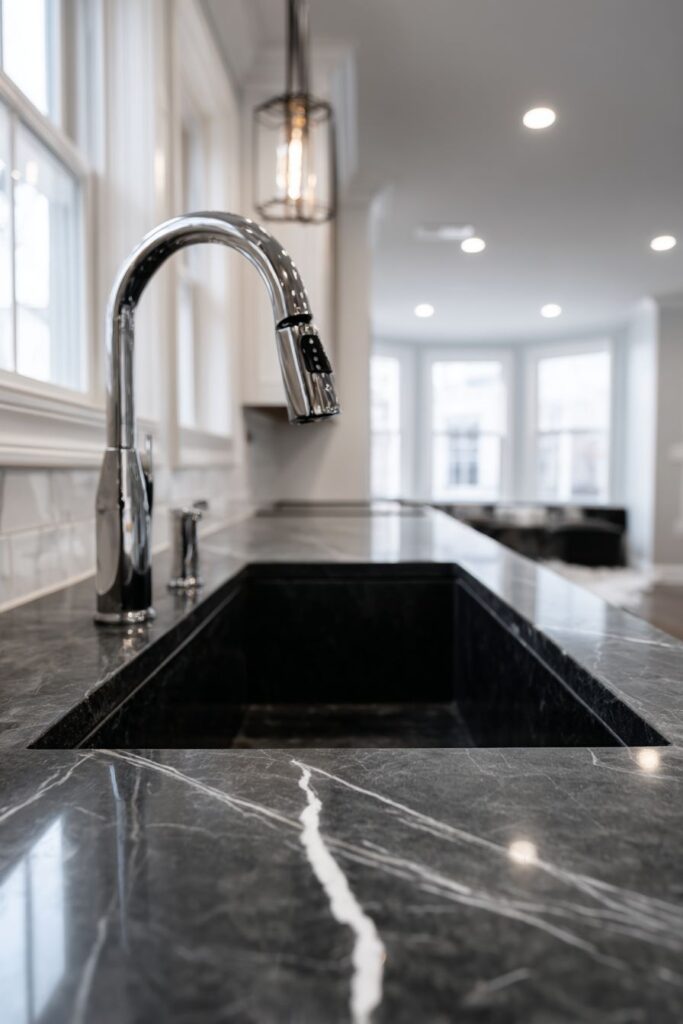
Key Design Tips:
- Create bold contrast with opposing light and dark materials for maximum visual impact
- Choose matte finishes on dark surfaces to avoid overwhelming reflections
- Embrace dramatic veining in marble as natural artwork within the design
- Add technological elements that enhance functionality without disrupting clean lines
- Balance proportions carefully when working with high-contrast color relationships
9. Rustic Natural Stone Authenticity
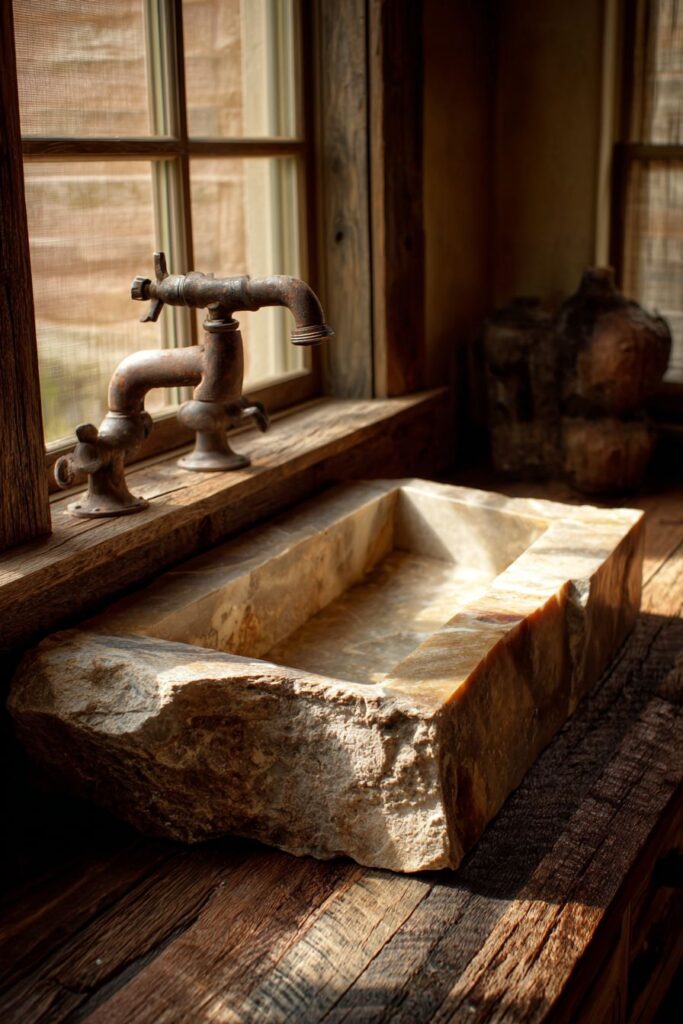
The timeless appeal of natural materials reaches its most authentic expression through a sink carved from a single piece of limestone showcasing visible fossil inclusions and natural texture variations that speak to millions of years of geological formation. This organic approach celebrates the inherent beauty found in nature’s own design processes, creating a focal point that feels both ancient and eternally relevant. Each fossil inclusion tells a story of prehistoric life while adding visual interest that cannot be replicated through artificial means.
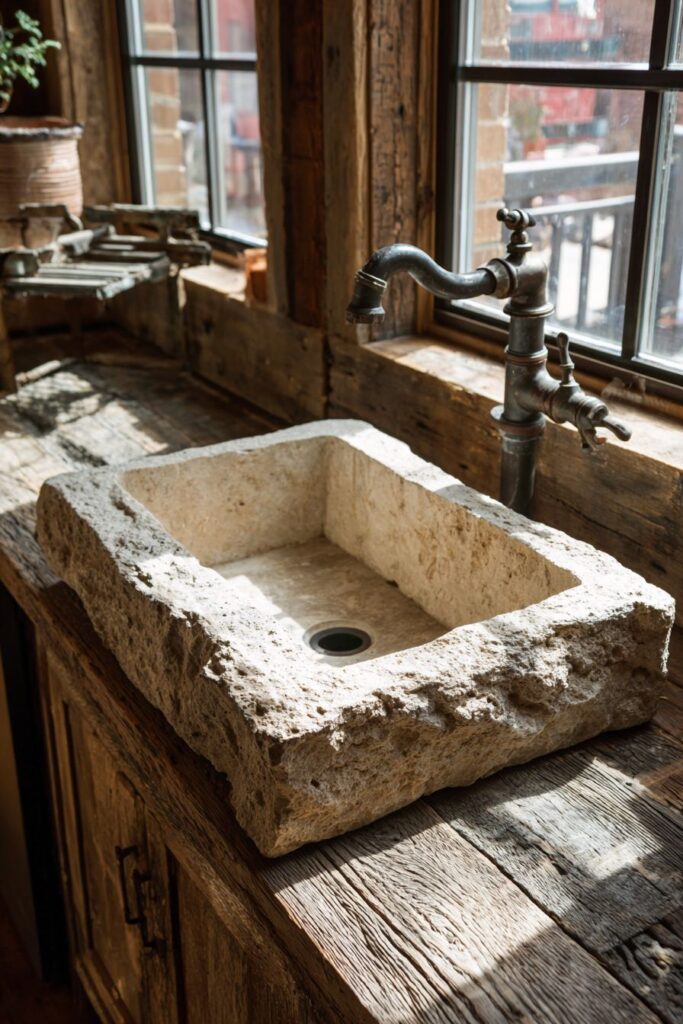
The organic form follows the natural structure of the stone rather than imposing geometric constraints, resulting in a shape that feels both purposeful and effortlessly integrated into its surroundings. This approach requires skilled craftsmanship to balance functional requirements with respect for the material’s natural characteristics, creating a piece that functions as both practical workspace and sculptural element.
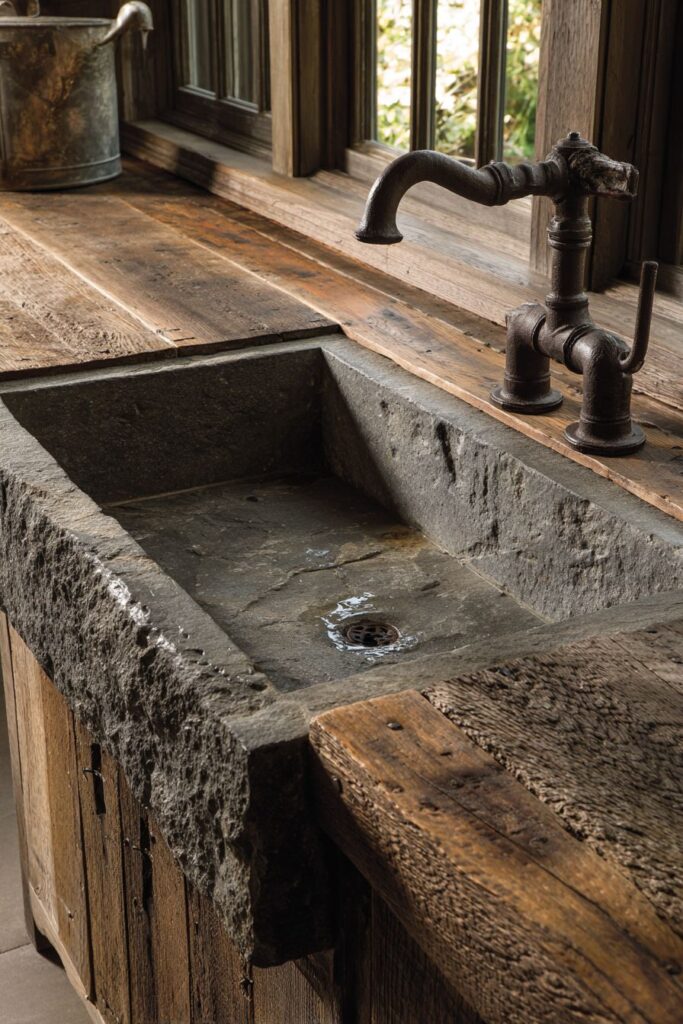
Reclaimed wood countertops showing authentic weathering and nail holes provide the perfect complement to the stone sink while maintaining the commitment to authentic materials with genuine history. The wood’s weathered surface tells stories of previous uses while providing a warm, organic texture that feels comfortable under hand. The visible nail holes and weathering marks become design features rather than flaws, celebrating the beauty of imperfection and authentic aging.
The traditional pump-style faucet in weathered iron maintains the historical aesthetic while providing functional water delivery that suits the rustic theme. The weathered finish coordinates with the aged appearance of the reclaimed wood while introducing period-appropriate hardware that enhances the overall authenticity of the design approach.
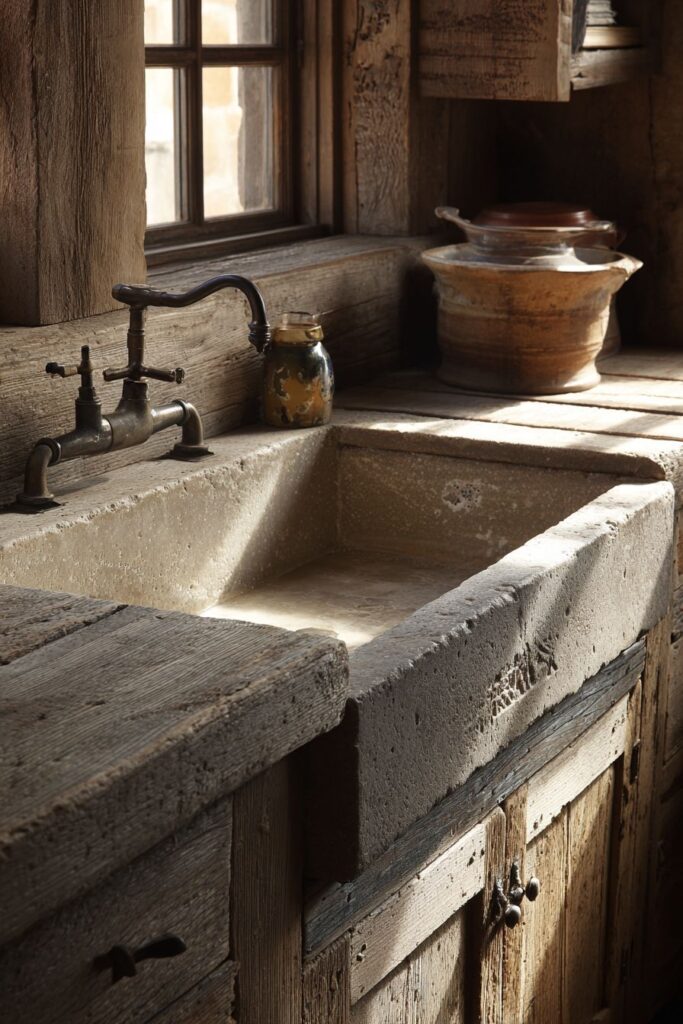
Key Design Tips:
- Celebrate natural imperfections as unique character elements that cannot be replicated
- Choose materials with history to add authentic aging and weathering patterns
- Embrace organic forms that follow natural material characteristics rather than imposed geometry
- Coordinate weathered finishes across all hardware elements for authentic aging relationships
- Highlight geological features like fossils as natural artwork within functional designs
10. Dual-Basin Workflow Optimization
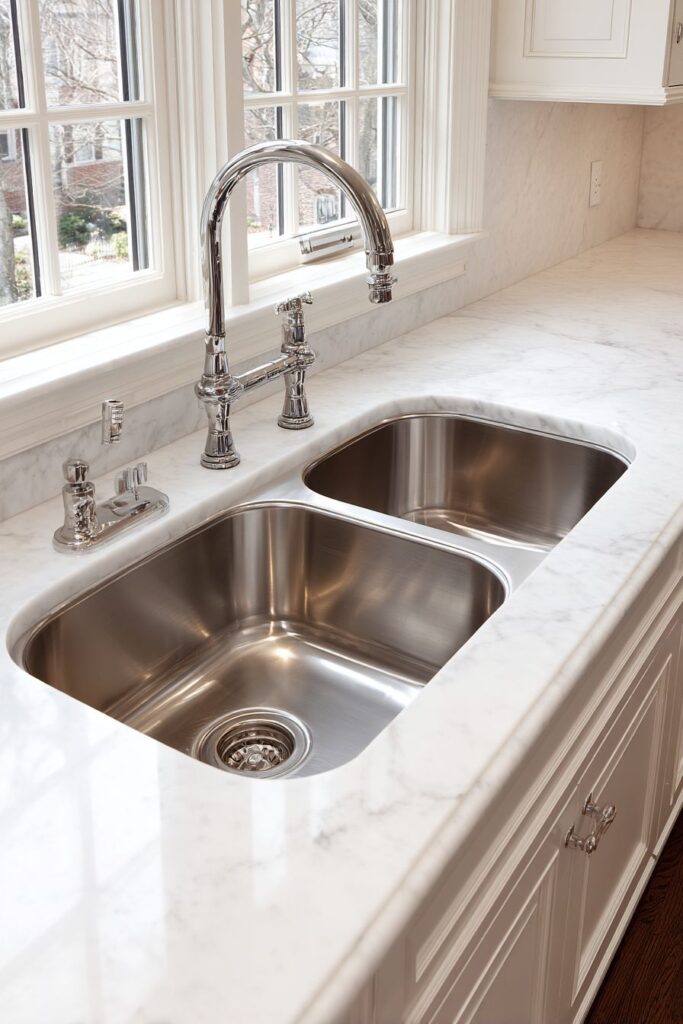
The pinnacle of kitchen efficiency reveals itself through the thoughtful design of twin undermount basins in strategically different sizes that acknowledge the varied nature of kitchen tasks while maximizing workspace functionality. The larger basin handles primary washing duties for cookware and dishes while the smaller basin excels at food preparation tasks like washing vegetables or thawing ingredients, creating a natural workflow that reduces unnecessary movement and increases overall efficiency.
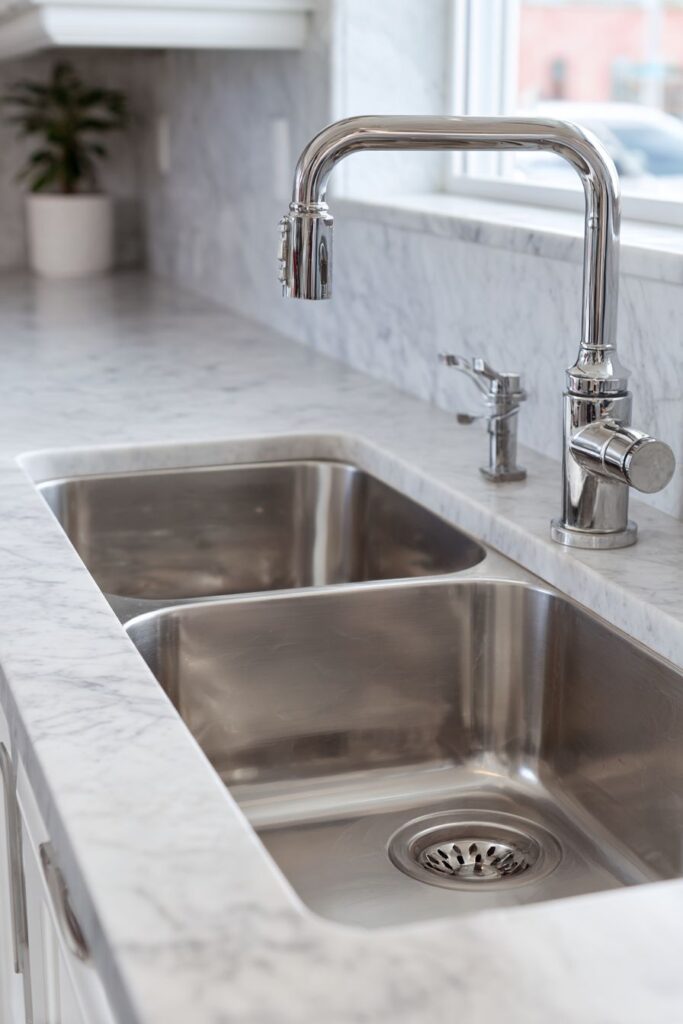
This dual-basin approach recognizes that modern cooking often requires multiple simultaneous activities, allowing home cooks to wash dishes in one basin while preparing ingredients in the other without cross-contamination or workflow interruption. The size differential ensures that each basin serves its intended purpose optimally rather than forcing compromise solutions that satisfy neither function completely.
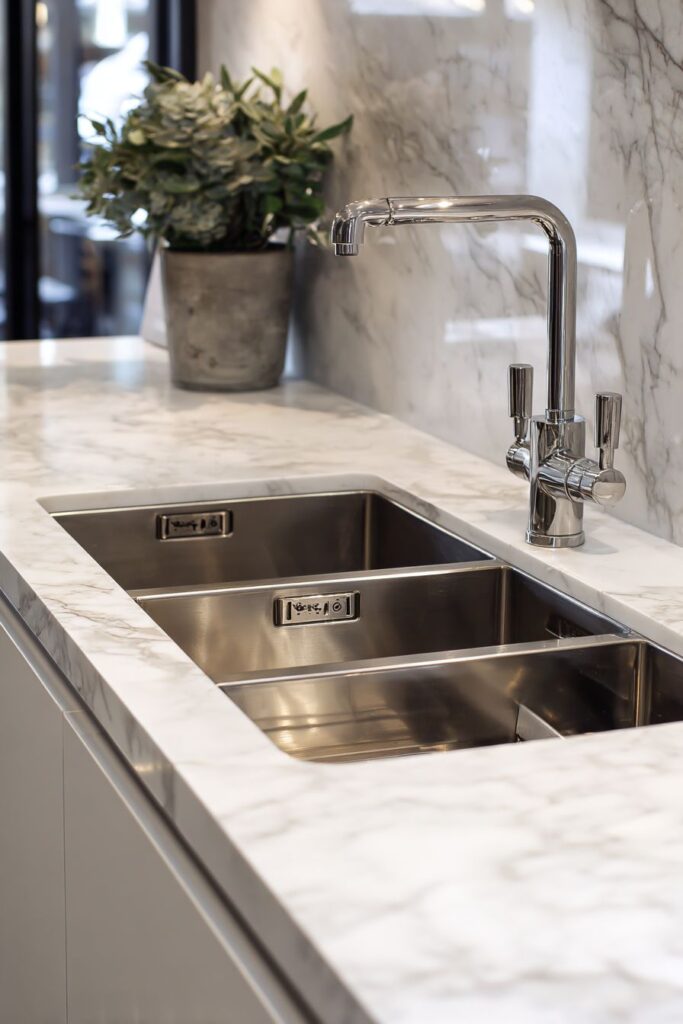
The seamless integration into white Carrara marble countertops creates an elegant backdrop that allows the functional brilliance of the design to take center stage. The classic beauty of Carrara marble provides timeless appeal while the white color maintains a clean, sanitary appearance that professional chefs appreciate. The undermount installation eliminates the rim that could interrupt workflow while creating smooth surfaces that facilitate easy cleanup.
The professional faucet with side spray attachment maximizes efficiency by providing multiple water delivery options without requiring separate installations. The side spray handles detailed cleaning tasks while the main faucet provides high-volume water delivery for filling large pots or general washing duties.
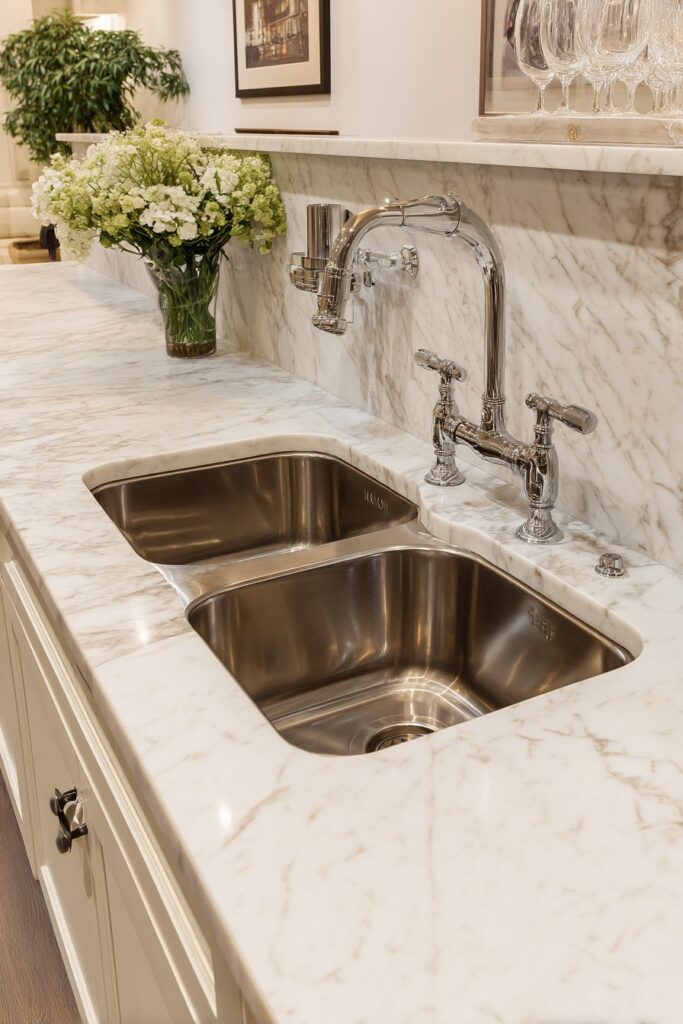
Key Design Tips:
- Size basins differently to optimize each for specific kitchen tasks and workflows
- Position strategically to minimize movement between food prep and cleanup activities
- Choose undermount installation for seamless workflow and easy maintenance
- Add professional features like side sprays for enhanced functionality
- Plan drain placement to prevent workflow interruptions during simultaneous use
11. Integrated Solid Surface Innovation
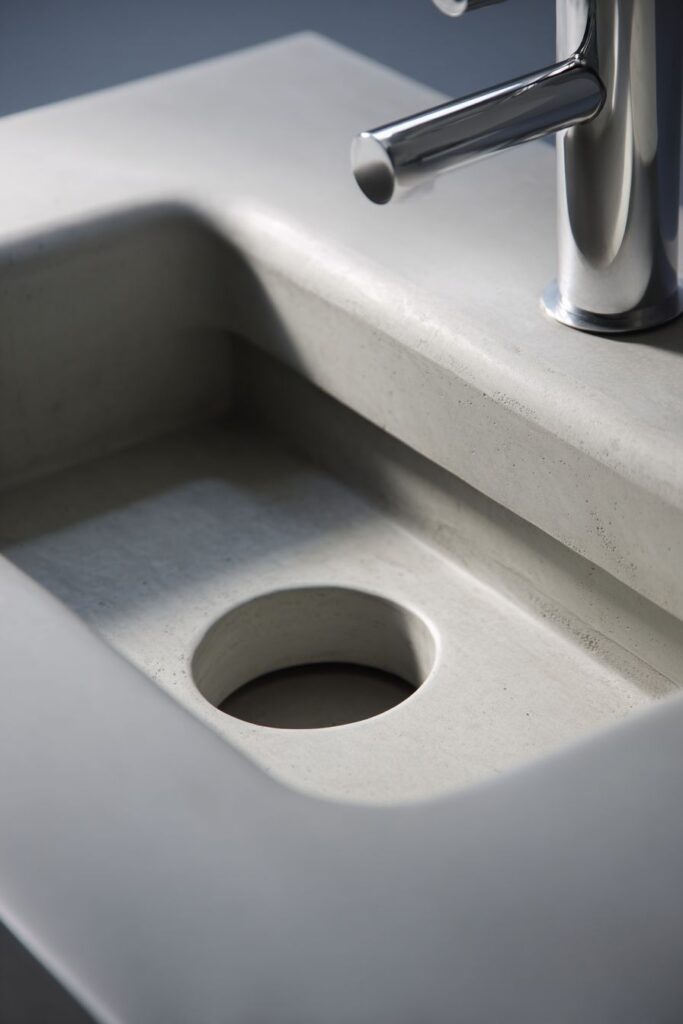
The future of kitchen design reveals itself through the sophisticated engineering of integrated sink and countertop fabrication from a single piece of solid surface material in soft grey that eliminates visible joints while creating fluid, continuous surfaces that redefine our expectations of kitchen workspace design. This seamless approach represents a fundamental shift away from assembled components toward unified construction that prioritizes both aesthetic cohesion and practical maintenance benefits.
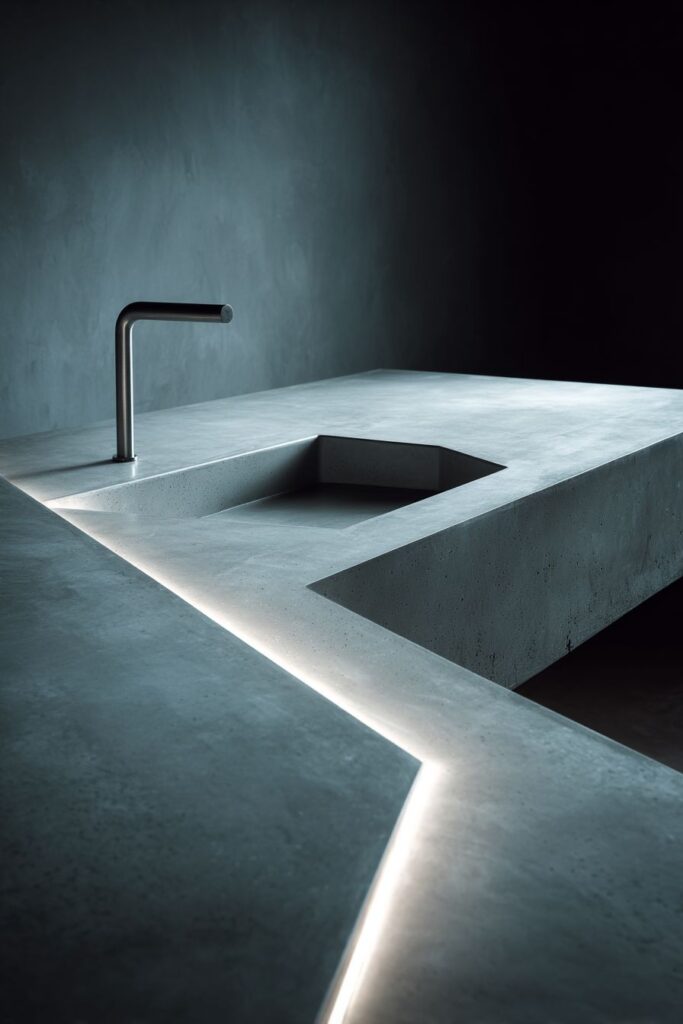
The absence of seams eliminates potential harboring places for bacteria while creating visual continuity that makes the entire workspace feel larger and more cohesive. The solid surface material allows for custom shaping that accommodates specific workflow requirements while maintaining the integrity of the seamless design approach. This technology enables curves and transitions that would be impossible with traditional assembled construction methods.
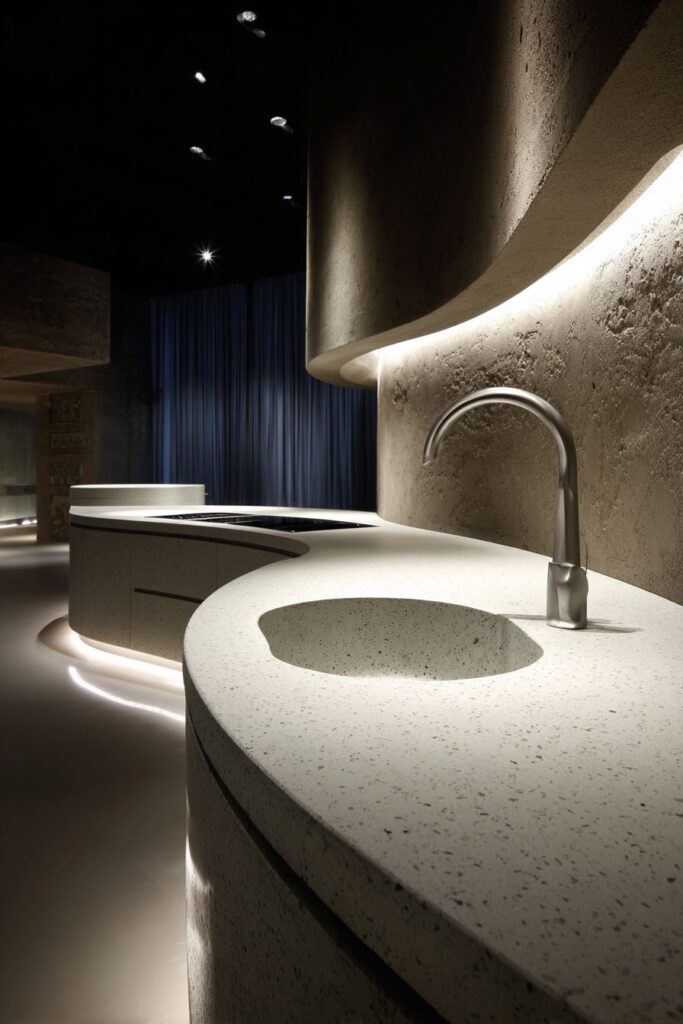
The minimalist faucet emerging from the counter surface itself represents the ultimate integration of form and function, eliminating the traditional faucet mounting system in favor of a design approach that treats the water delivery system as an integral part of the workspace design. This approach requires sophisticated engineering to ensure proper function while maintaining the clean aesthetic that defines the integrated concept.
Clean architectural lighting highlights the fluid surfaces while providing practical task illumination that eliminates shadows in the workspace. The lighting design reinforces the sophisticated construction while ensuring that the practical benefits of the seamless surface can be fully appreciated during daily use.
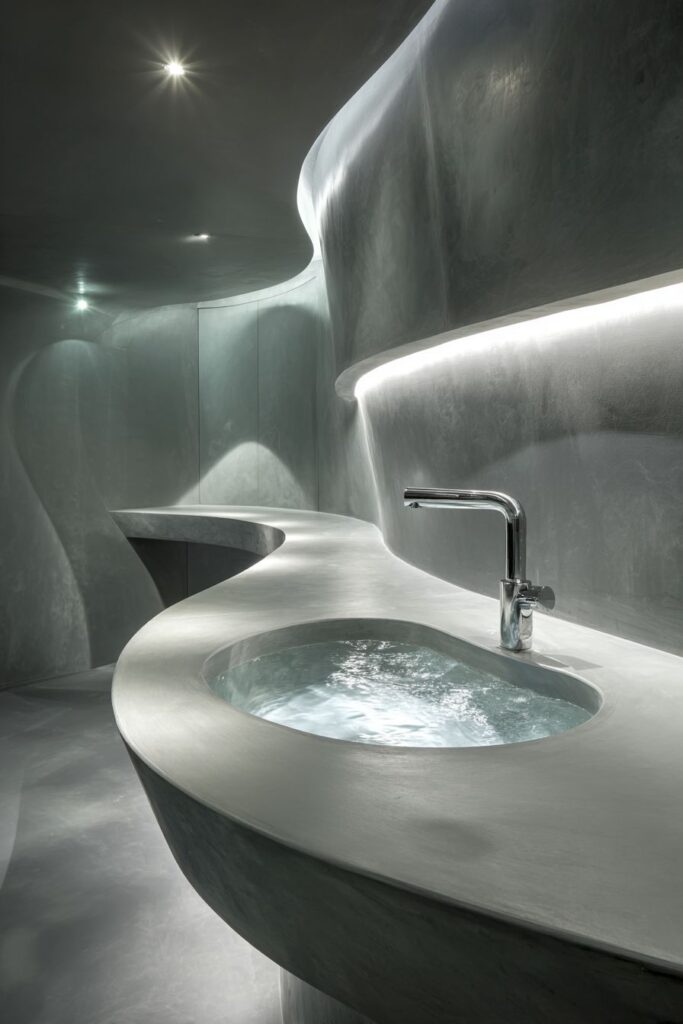
Key Design Tips:
- Eliminate seams wherever possible for both aesthetic and sanitary benefits
- Choose neutral colors that won’t become dated as design trends evolve
- Integrate fixtures into the surface design rather than treating them as separate elements
- Plan for custom fabrication to optimize workspace functionality within seamless design
- Emphasize continuity in lighting and material choices to support the unified concept
12. Vintage Cast Iron Restoration Beauty
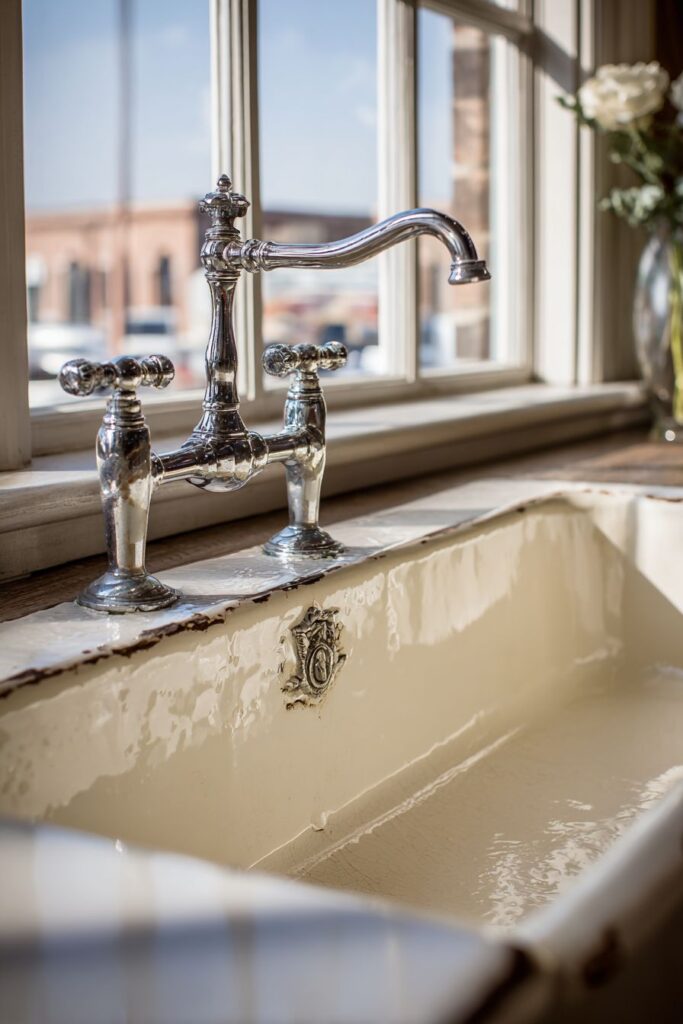
The enduring charm of authentic vintage design finds perfect expression through a carefully restored cast iron sink with original porcelain coating that showcases gentle crazing patterns adding character without compromising functionality. This restoration approach celebrates the superior construction quality of historical fixtures while adapting them for modern use requirements. The gentle crazing in the porcelain surface tells the story of decades of faithful service while creating subtle textural interest that machine-made reproductions cannot replicate.
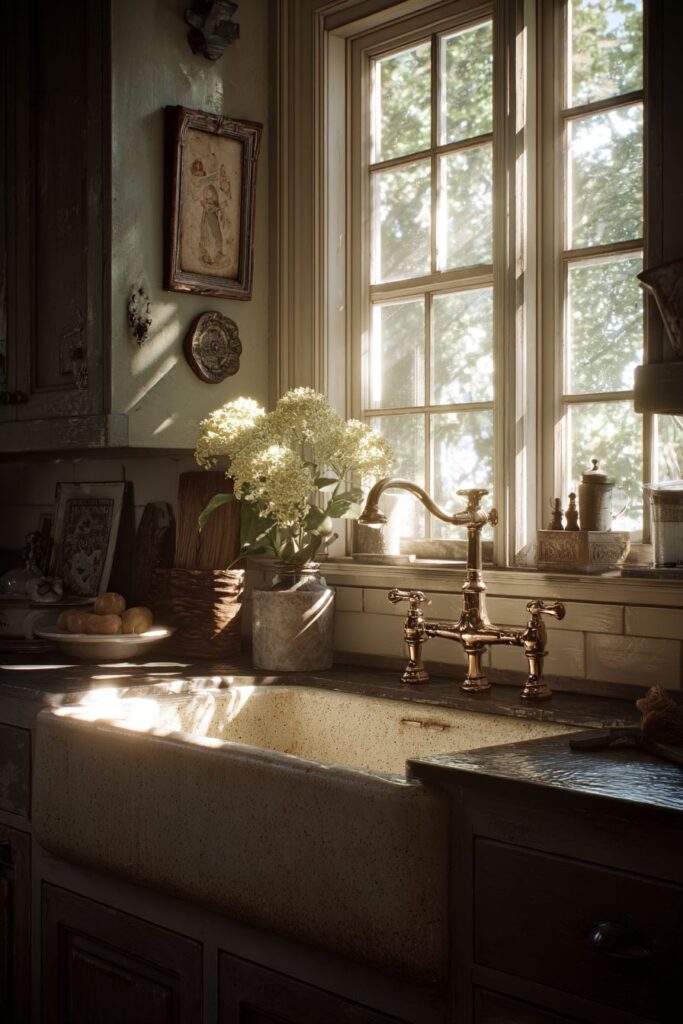
The sink’s positioning on exposed apron legs with decorative brackets creates an architectural statement that transforms a functional element into a piece of furniture that contributes to the overall room design. This approach requires careful planning to ensure proper support while creating visual interest through the exposure of structural elements that are typically hidden in contemporary installations.
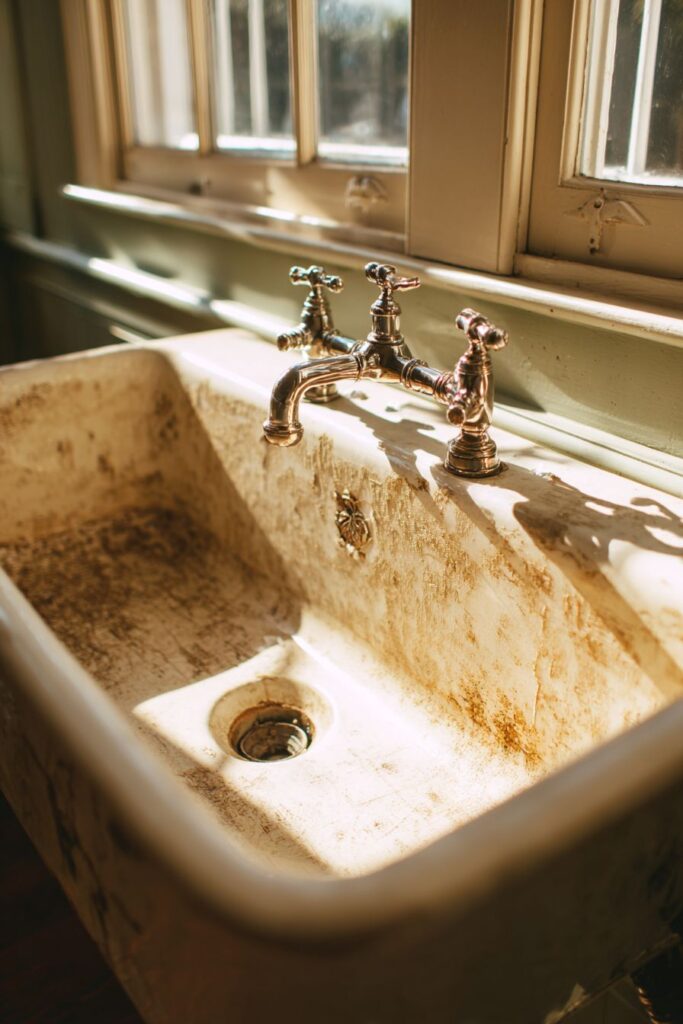
The restored bridge faucet with separate hot and cold handles maintains period accuracy while providing reliable water delivery that meets modern expectations. The restoration process requires attention to both aesthetic and functional details, ensuring that historical charm doesn’t come at the expense of practical performance. The separate handle design reflects the plumbing technology of earlier eras while providing precise temperature control that contemporary users appreciate.
Natural window light creates atmospheric shadows that highlight the authentic details while providing the illumination needed for practical kitchen tasks. The interplay of light and shadow emphasizes the three-dimensional quality of the decorative elements while creating an atmosphere that feels both nostalgic and timeless.
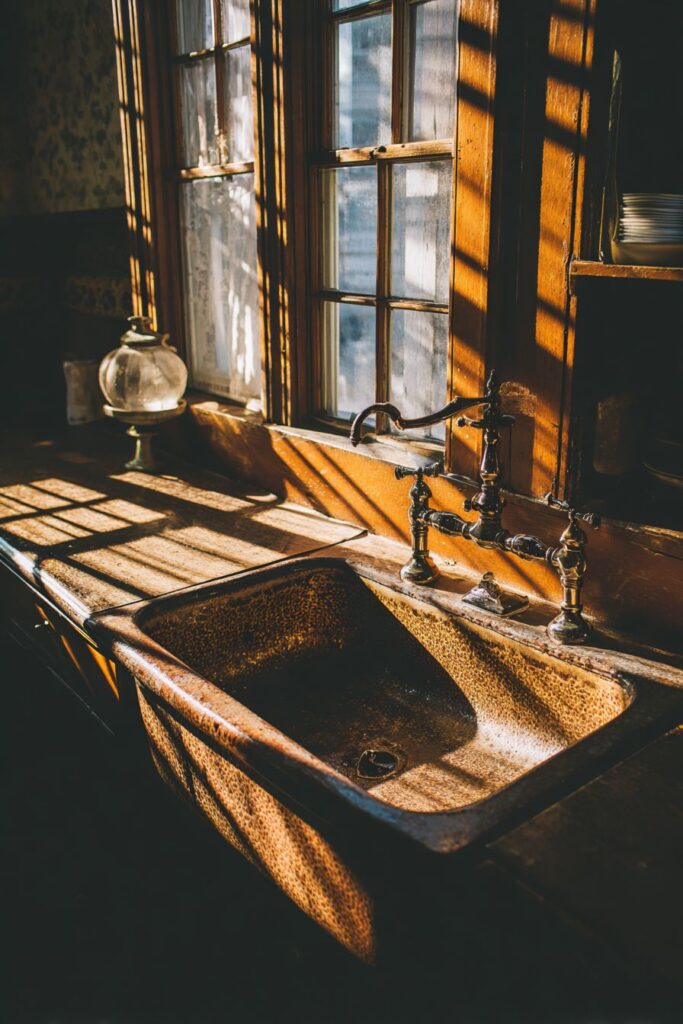
Key Design Tips:
- Preserve authentic details during restoration to maintain historical integrity
- Expose structural elements as architectural features when period-appropriate
- Maintain original functionality while updating for modern plumbing requirements
- Celebrate aging patterns as evidence of authentic history rather than wear to be concealed
- Position for optimal lighting to highlight architectural and decorative details
13. Workstation Sink Integration Innovation
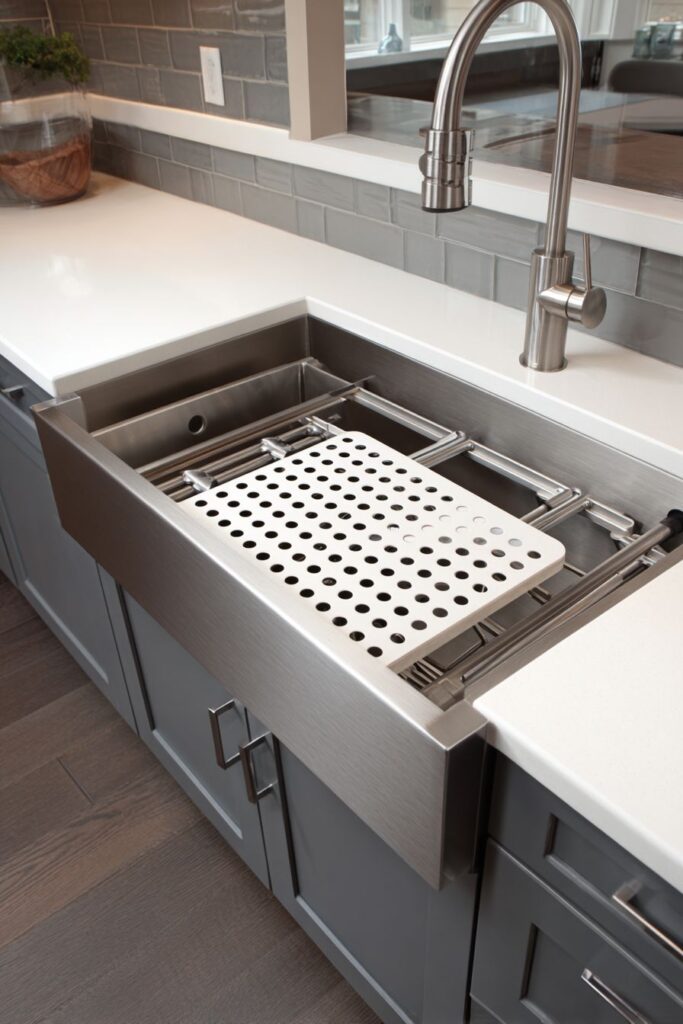
The evolution of kitchen efficiency reaches new heights through the innovative design of a workstation sink featuring integrated accessories including cutting board, colander, and drying rack that slide along built-in rails within the basin itself. This approach transforms the traditional sink from a simple washing station into a complete food preparation center that maximizes functionality within a compact footprint while maintaining the flexibility to adapt to changing task requirements.
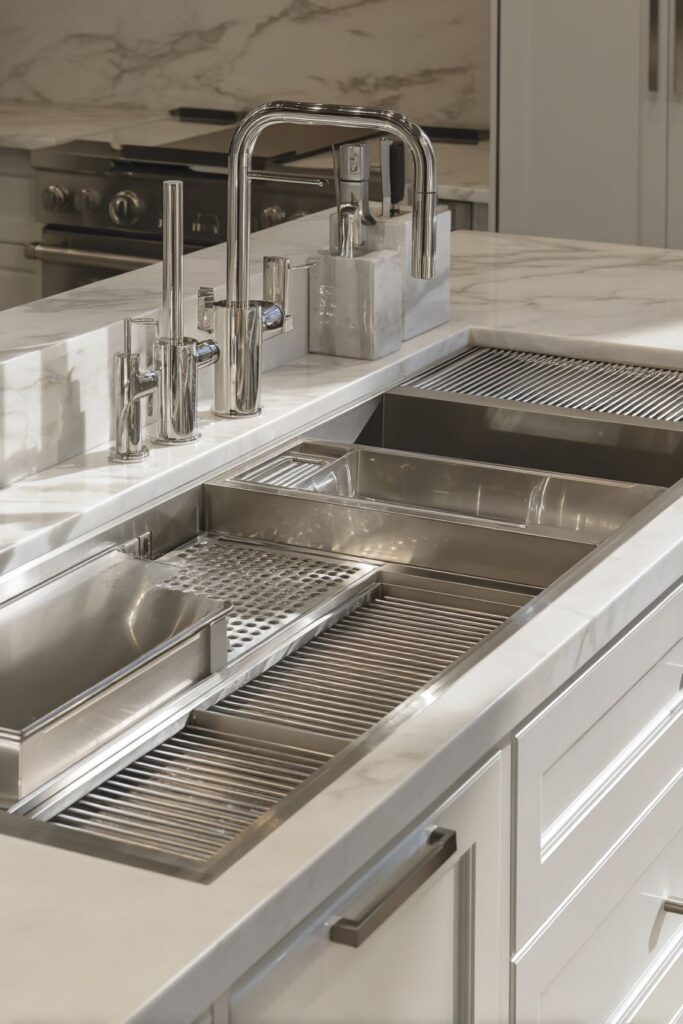
The sliding rail system allows accessories to be positioned exactly where needed while providing the option to clear the entire basin when washing large items or performing tasks that require maximum space. This adaptability ensures that the enhanced functionality doesn’t come at the expense of traditional sink versatility, creating a solution that serves multiple purposes without compromise.
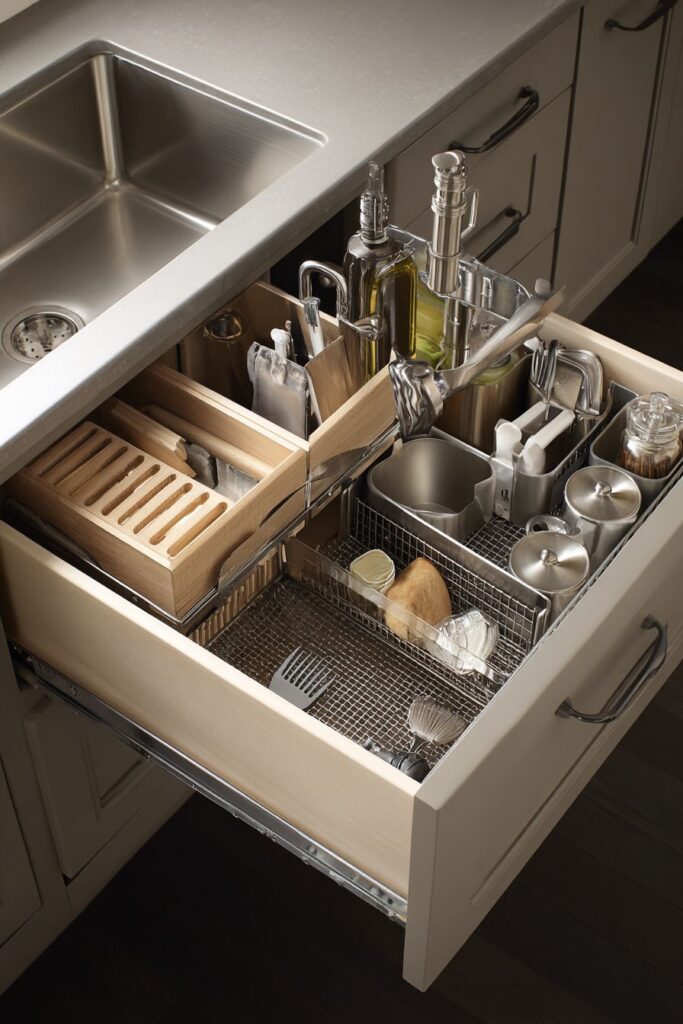
The large stainless steel basin provides the generous proportions needed to accommodate the integrated accessories while maintaining sufficient space for traditional washing activities. The professional-grade construction ensures durability under the increased demands of multi-functional use while the stainless steel material provides hygienic surfaces that can be easily sanitized between different food preparation activities.
The professional pull-out faucet with multiple spray functions complements the workspace concept by providing precisely the type of water delivery control that serious food preparation demands. The multiple spray patterns handle everything from gentle rinsing of delicate produce to high-pressure cleaning of stubborn cookware residue.
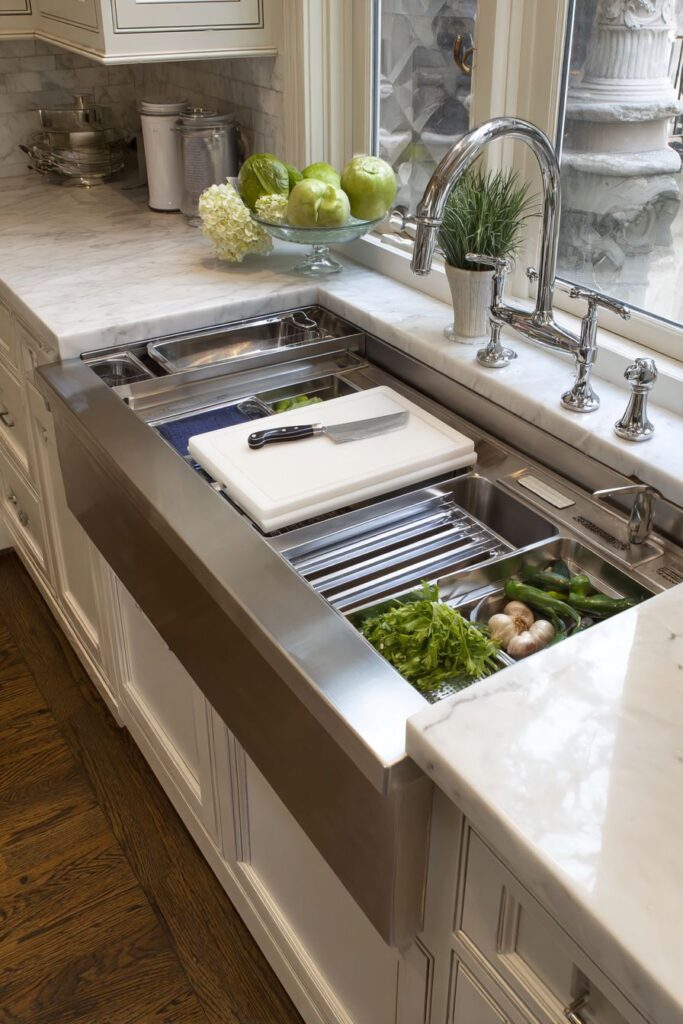
Key Design Tips:
- Choose versatile accessories that can be positioned as needed rather than fixed in place
- Ensure adequate basin size to accommodate accessories without compromising washing space
- Plan for easy sanitization between food prep and cleanup activities
- Select professional-grade faucets with spray options appropriate for varied tasks
- Consider workflow patterns when positioning slide rails and accessory storage
14. Japanese Zen Philosophy Expression
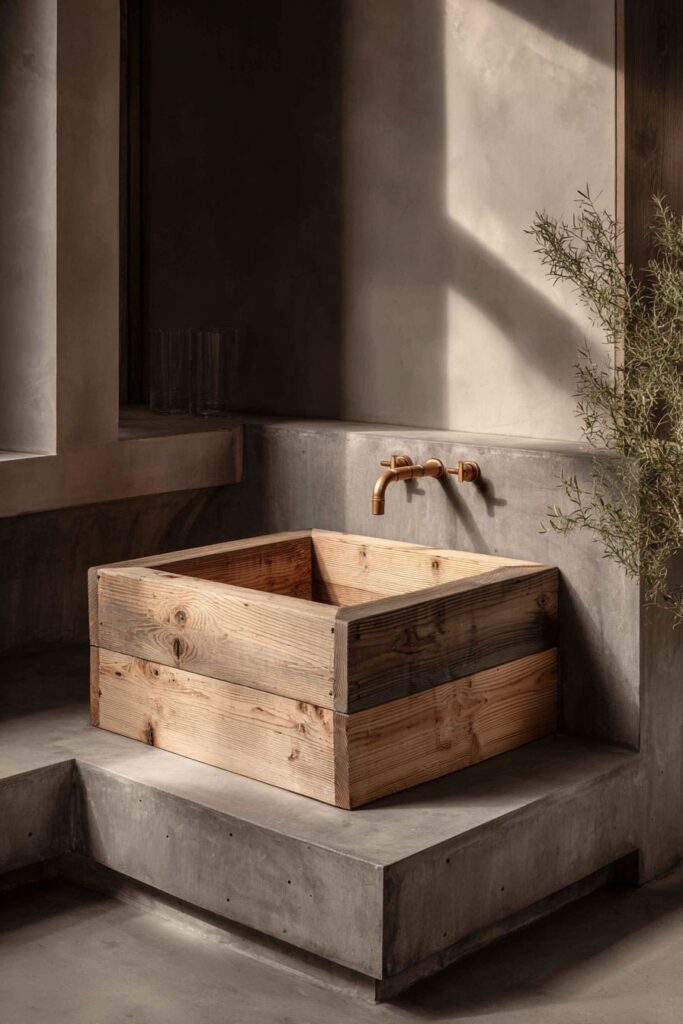
The peaceful principles of Japanese design philosophy find their ultimate expression through a deep wooden sink crafted from hinoki cypress, a material revered for its natural oils that provide water resistance while releasing a subtle, calming fragrance that transforms routine kitchen tasks into moments of mindfulness. This organic approach celebrates the inherent beauty of natural materials while acknowledging the spiritual dimension of daily activities that Japanese culture has long recognized and honored.
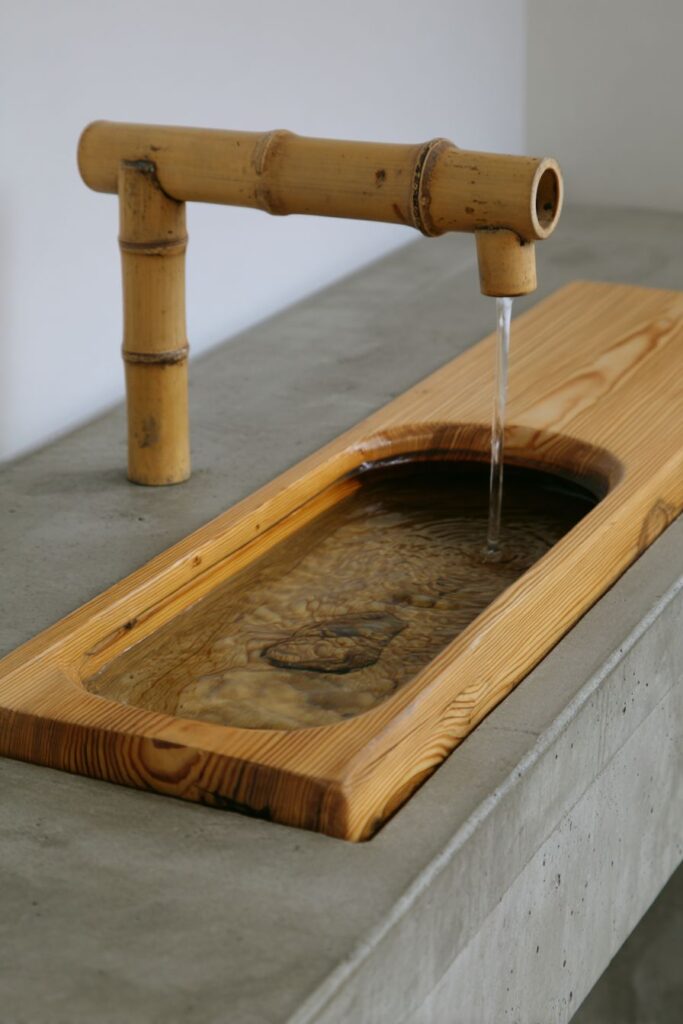
The rectangular form follows traditional Japanese proportions that create visual harmony through mathematical relationships that feel inherently pleasing without requiring conscious understanding of the underlying principles. The deep basin accommodates the Japanese approach to food preparation that often involves careful washing and preparation of ingredients as a meditative practice rather than a rushed necessity.
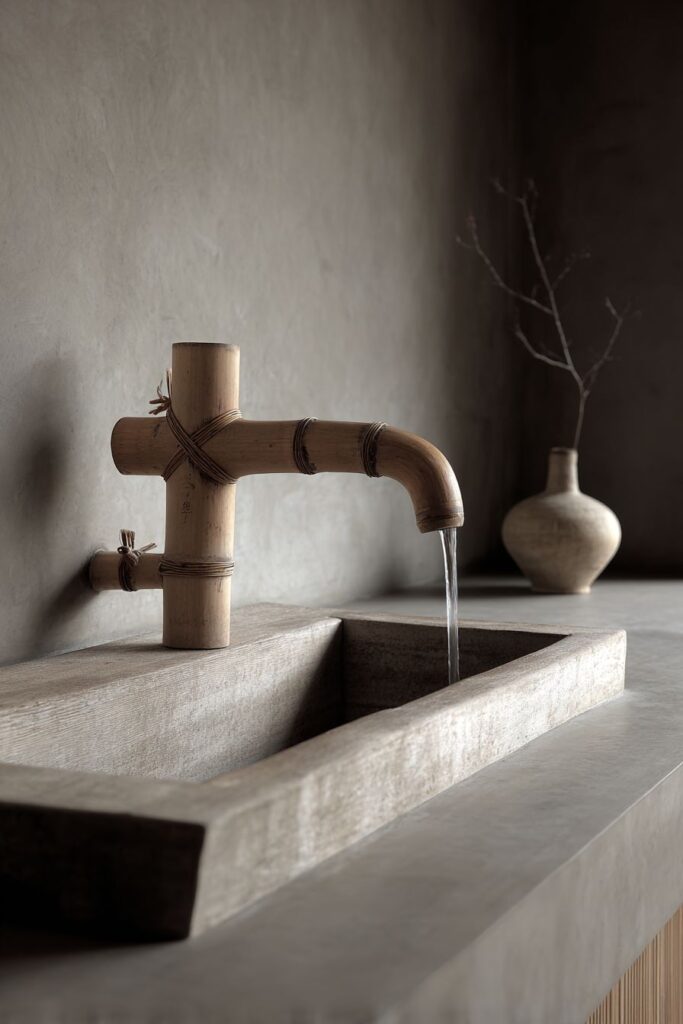
The minimalist concrete countertops provide a neutral backdrop that allows the natural beauty of the wood to take center stage while maintaining the clean, uncluttered aesthetic that characterizes authentic Japanese design. The concrete’s smooth, uniform surface creates a sense of calm that supports the meditative quality of the overall design approach while providing practical durability for daily use.
The simple bamboo faucet with traditional joinery maintains the commitment to natural materials while introducing construction techniques that reflect centuries of Japanese craftsmanship traditions. The bamboo’s natural antibacterial properties make it well-suited for kitchen use while its organic form creates visual harmony with the wooden sink.
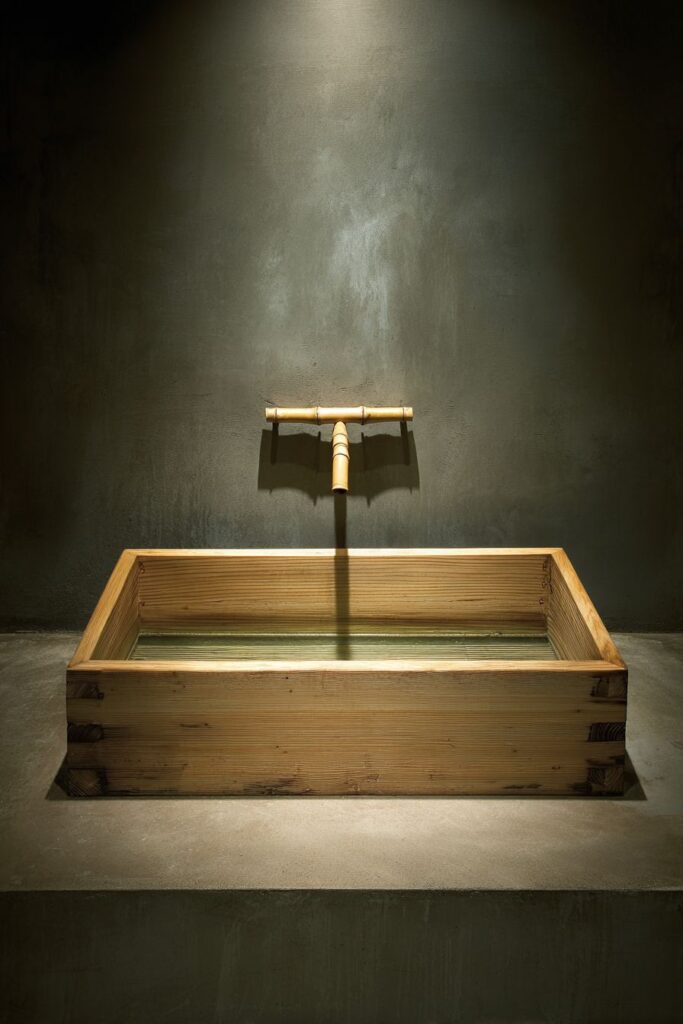
Key Design Tips:
- Choose materials with natural properties that enhance both function and sensory experience
- Embrace traditional proportions that create inherent visual harmony
- Maintain uncluttered surfaces to support meditative use of the space
- Celebrate craftsmanship details in joinery and construction techniques
- Consider aromatic properties of natural materials as part of the complete sensory experience
15. Butler’s Pantry Refined Elegance
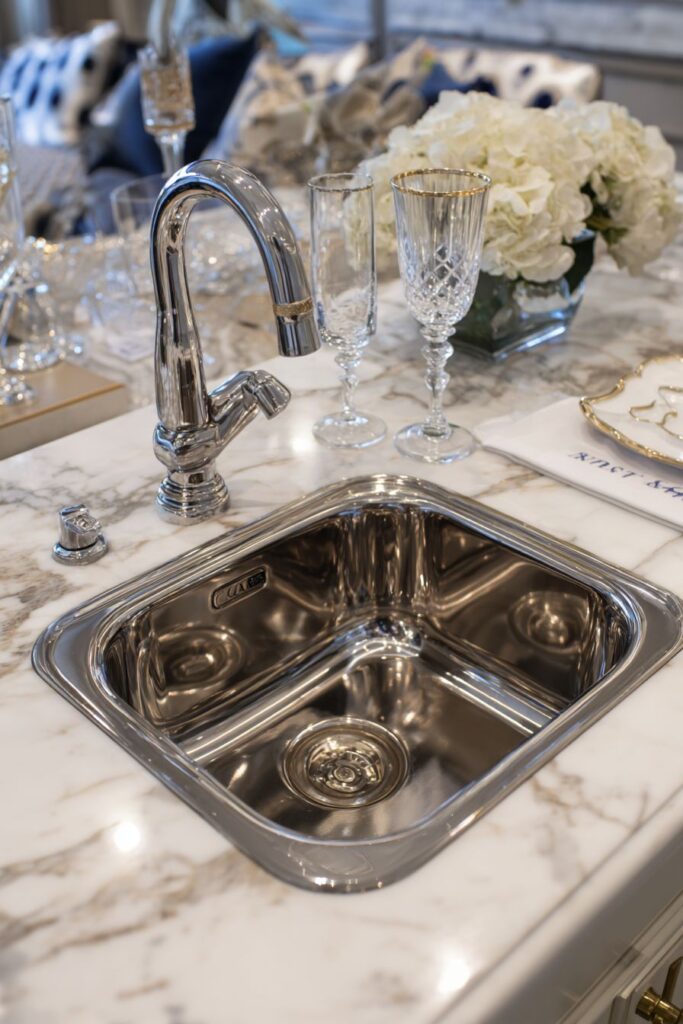
The sophisticated requirements of secondary kitchen spaces find their perfect expression through a smaller-scale prep sink in polished stainless steel that maintains professional functionality while accommodating the refined aesthetic expectations of butler’s pantry installations. This specialized application requires careful attention to proportional relationships that create visual harmony within more intimate spatial configurations while providing the specific functionality needed for beverage service and small-scale food preparation activities.
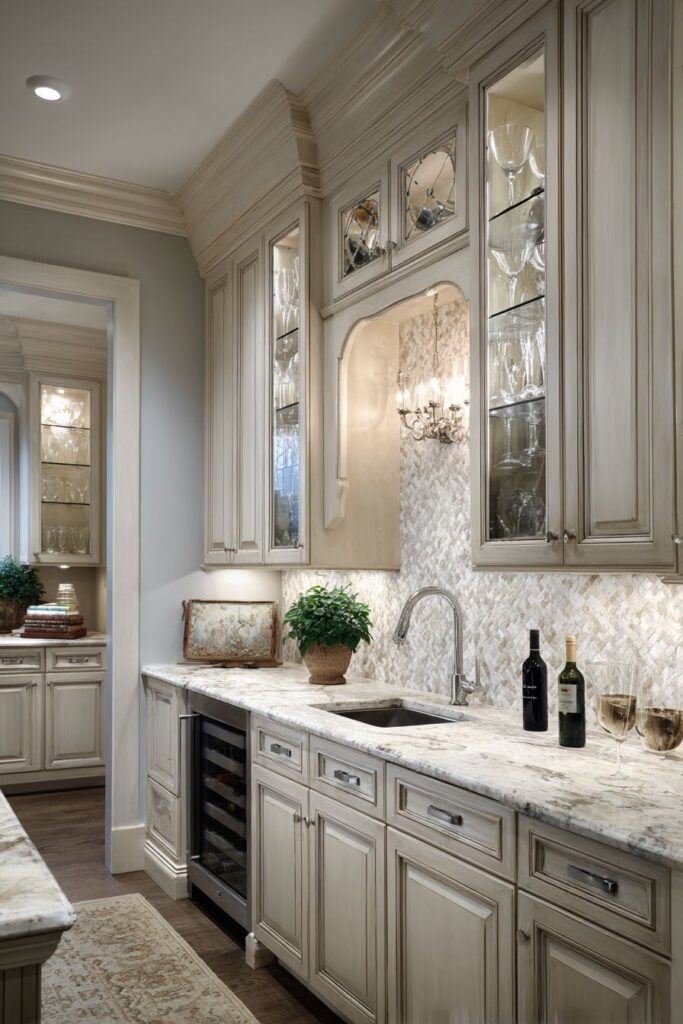
The compact dimensions make efficient use of limited counter space while providing adequate capacity for washing glassware, preparing garnishes, and other specialized tasks that support formal entertaining requirements. The polished stainless steel finish maintains a sophisticated appearance that coordinates with high-end appliances typically found in butler’s pantry installations while providing the durability needed for frequent use during social occasions.
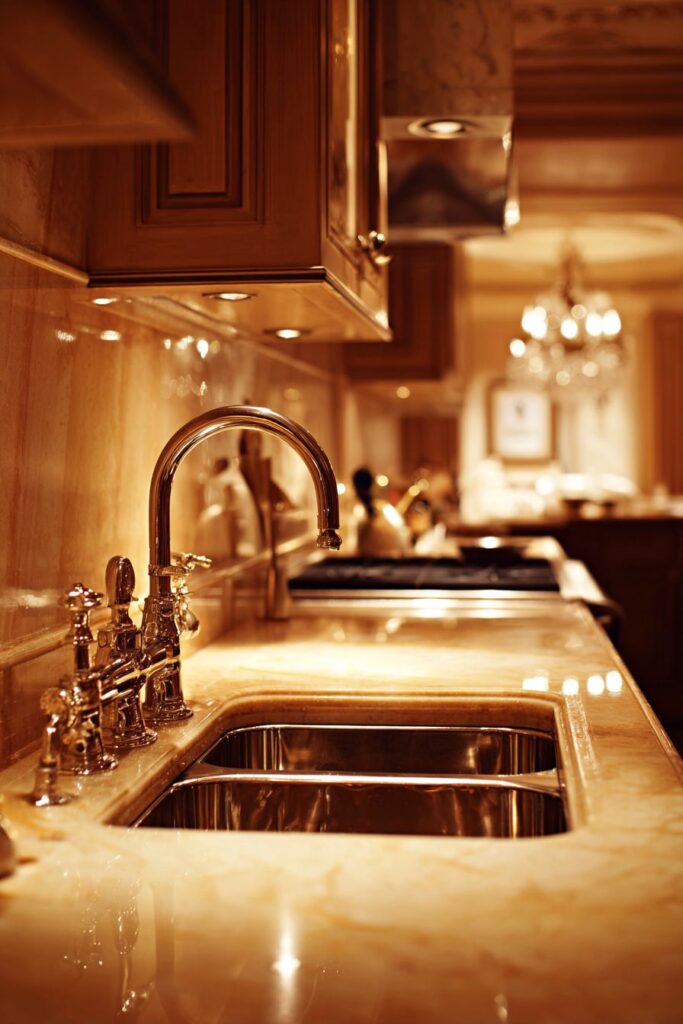
Integration into marble countertops with beveled edges creates an elegant detail that elevates the installation beyond purely functional considerations while maintaining the refined aesthetic appropriate for spaces that guests may observe during entertainment activities. The beveled edges add architectural interest while creating shadows that emphasize the quality of both the fabrication and installation work.
The petite faucet with high arc accommodates tall glassware while maintaining proportional relationships appropriate for the smaller scale installation. The high arc design provides clearance for champagne flutes and other tall serving pieces while the compact base maintains visual harmony within the smaller spatial configuration.
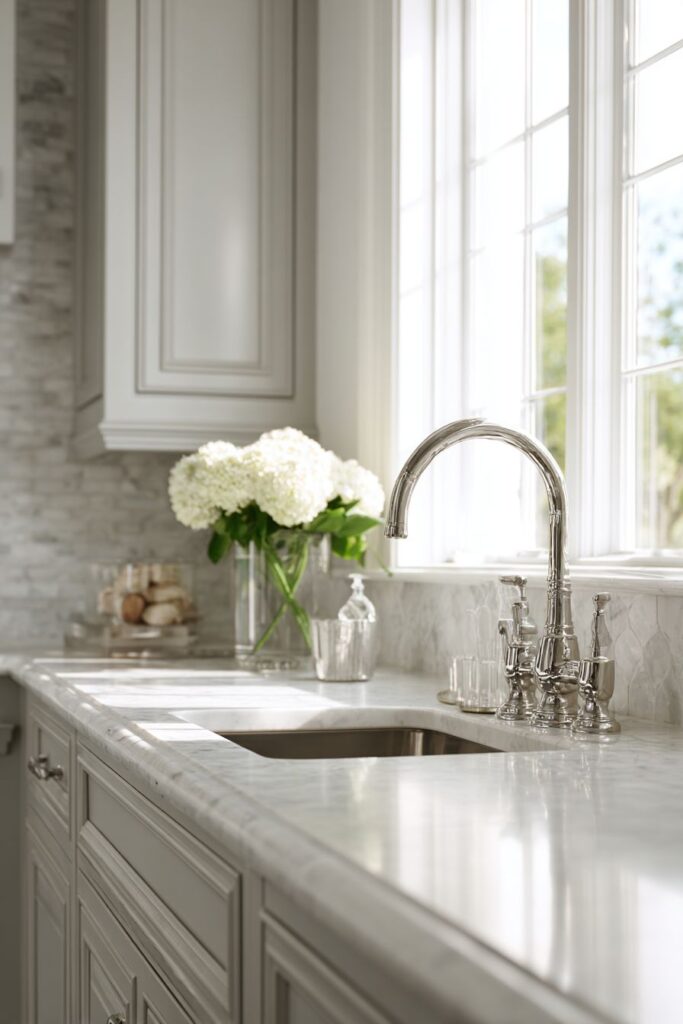
Key Design Tips:
- Scale appropriately for secondary kitchen functions without over-sizing for the space
- Maintain sophisticated finishes that coordinate with high-end appliance installations
- Add architectural details like beveled edges to elevate functional installations
- Plan for specialized tasks like glassware washing and beverage preparation
- Consider guest visibility when selecting finishes and installation details
16. Transitional Style Balance Mastery
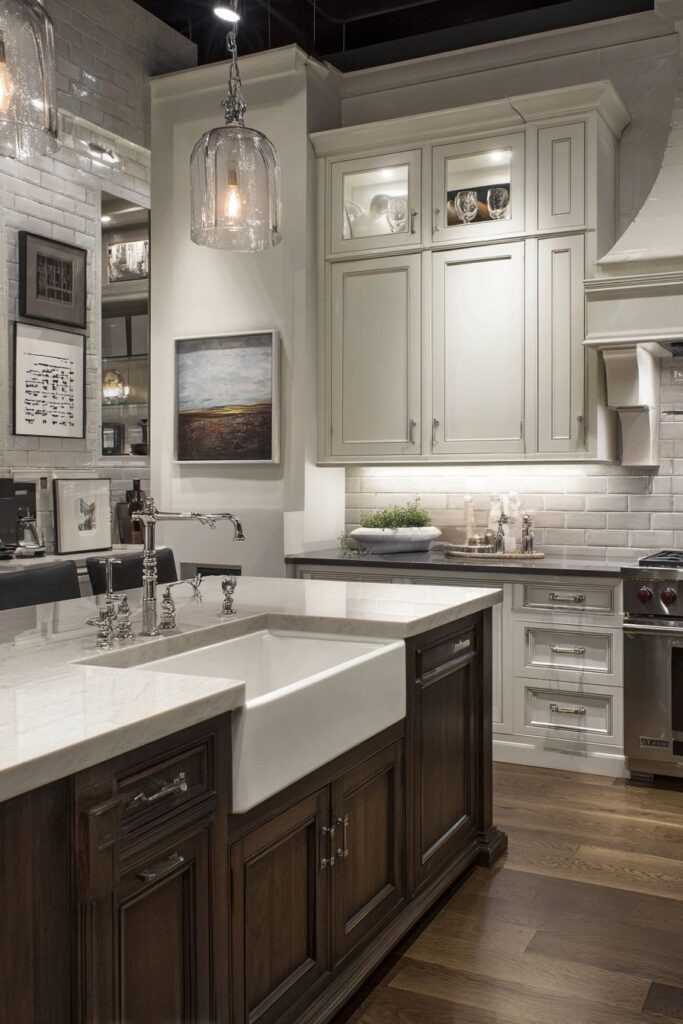
The artful balance between traditional charm and contemporary functionality finds perfect expression through a stainless steel farmhouse sink that combines classic apron-front styling with modern materials and proportions. This transitional approach acknowledges that homeowners often desire the warmth and character of traditional designs while requiring the practical benefits that modern materials and manufacturing techniques can provide.
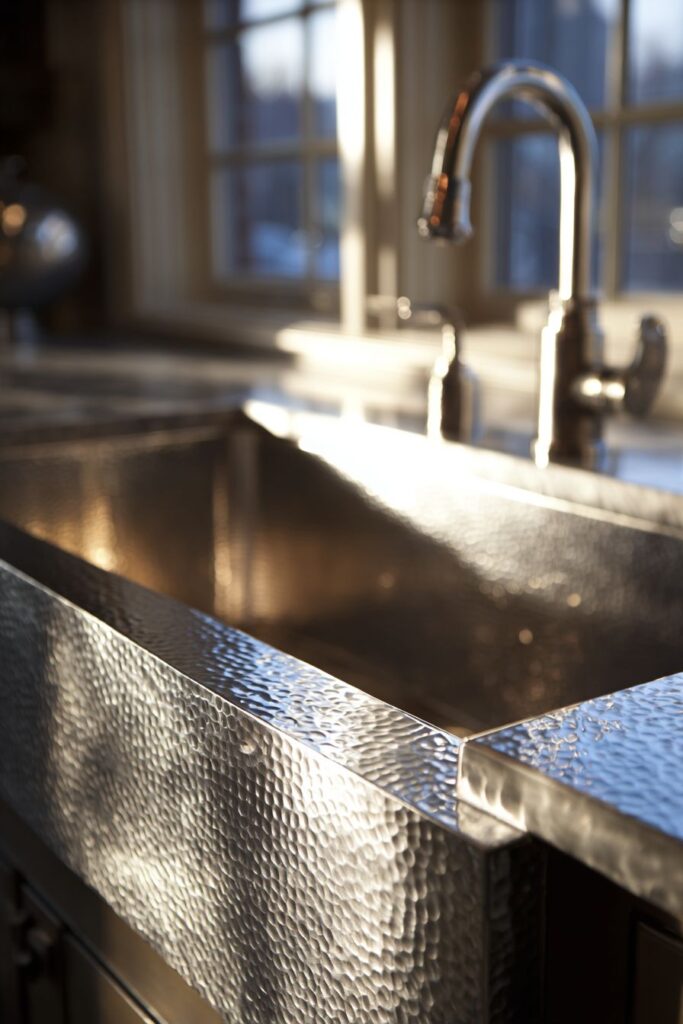
The stainless steel material provides superior durability and hygienic properties compared to traditional ceramic options while maintaining the substantial visual presence that makes farmhouse sinks such compelling focal points. The visible texture adds tactile interest that prevents the modern material from feeling cold or industrial while providing practical benefits through improved grip when handling wet items.
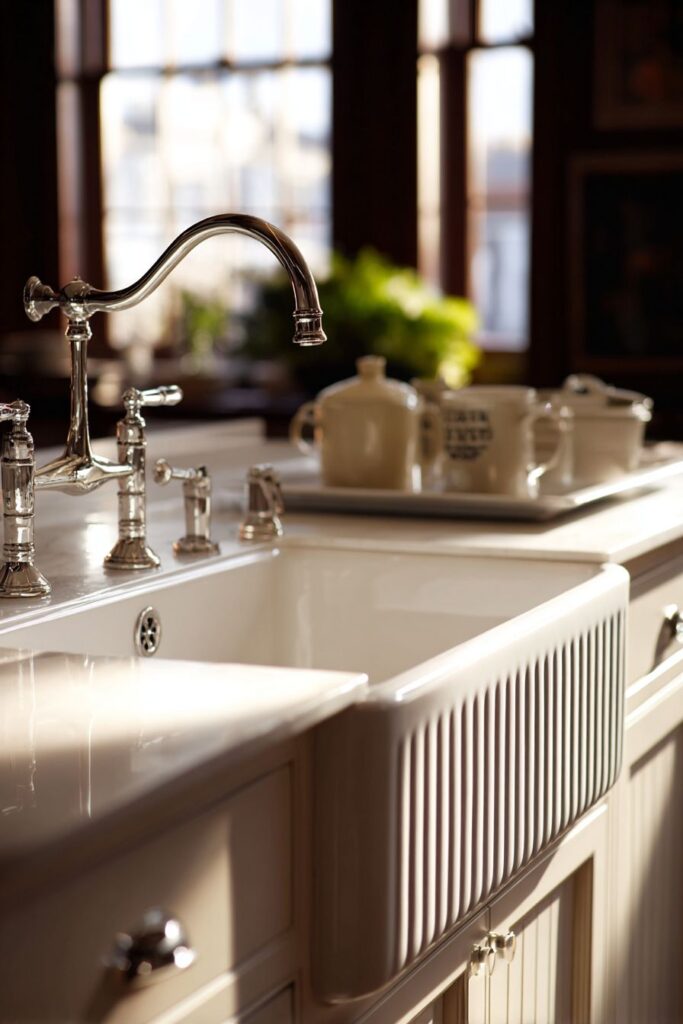
The modern proportions reflect contemporary lifestyle requirements that often involve larger cookware and more intensive food preparation activities than historical farmhouse kitchens typically accommodated. This scaling adjustment ensures that the traditional aesthetic doesn’t compromise practical functionality while maintaining the visual relationships that make farmhouse designs so appealing.
Integration within quartz countertops provides durability and low maintenance requirements that busy modern households appreciate while the neutral color palette allows the sink to function as the primary design focal point. The transitional faucet blends traditional curves with contemporary finishes, creating a bridge between design eras that feels both timeless and current.
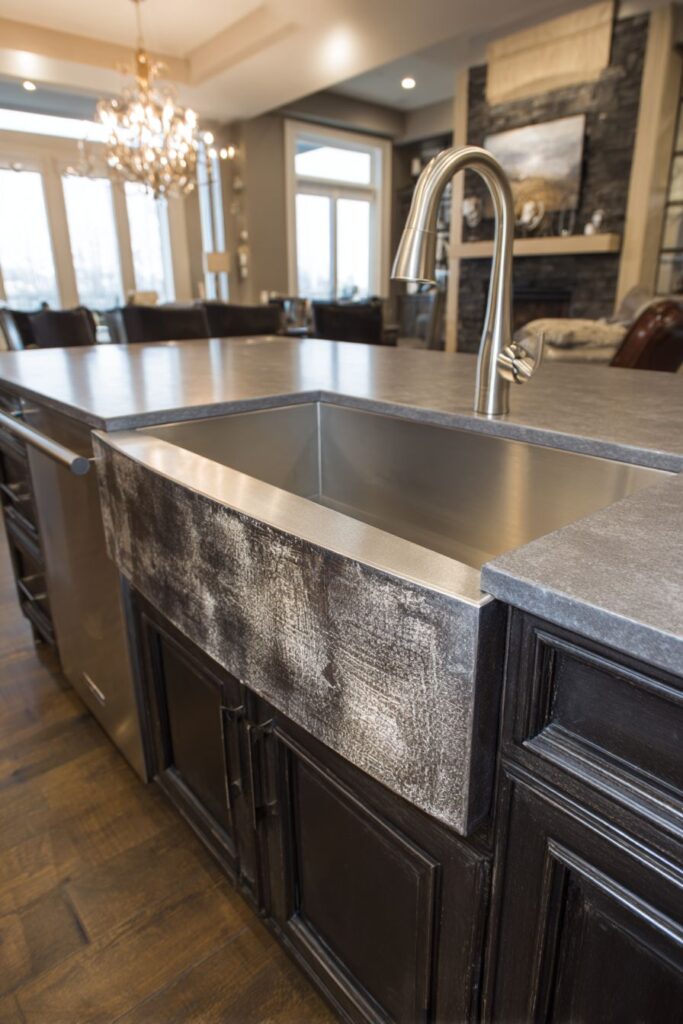
Key Design Tips:
- Blend material eras thoughtfully to combine the best aspects of both traditional and contemporary options
- Adjust proportions to meet modern functional requirements while maintaining traditional visual relationships
- Choose finishes that complement both traditional and contemporary elements in the overall design
- Create focal hierarchy that allows transitional elements to anchor the design composition
- Balance practicality with aesthetic appeal to serve contemporary lifestyle requirements
17. Bold Color Statement Expression
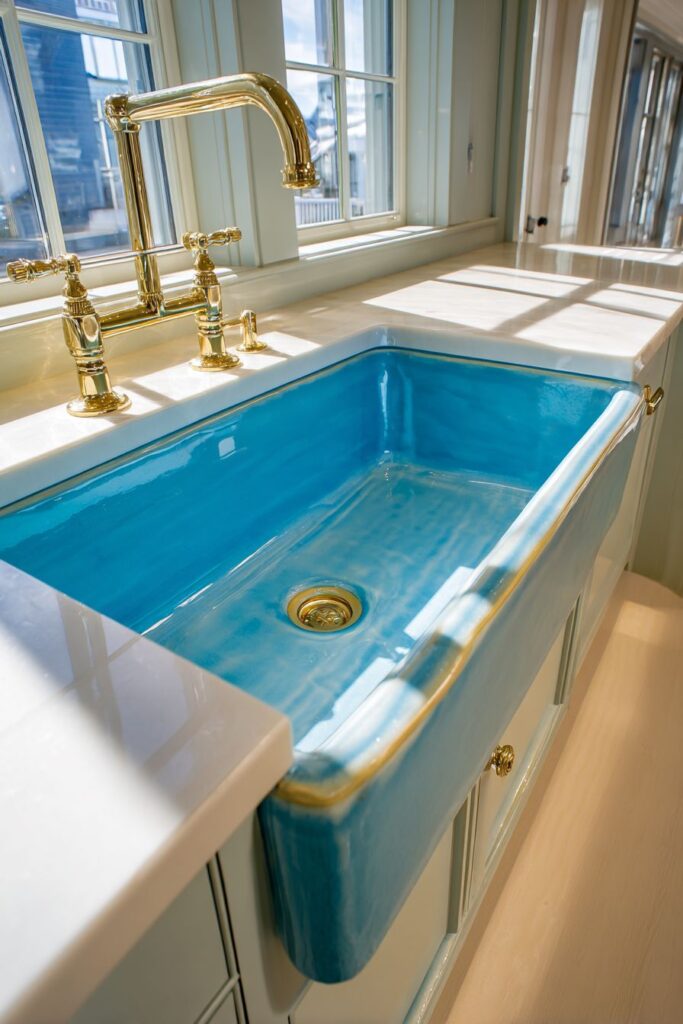
The confident use of color as a primary design element reaches its most dramatic expression through a vibrant turquoise ceramic sink with glossy finish that transforms from functional necessity into artistic focal point that energizes the entire kitchen environment. This bold choice demonstrates how color can be used strategically to create visual interest and express personality while maintaining sophisticated appeal that transcends temporary trends.
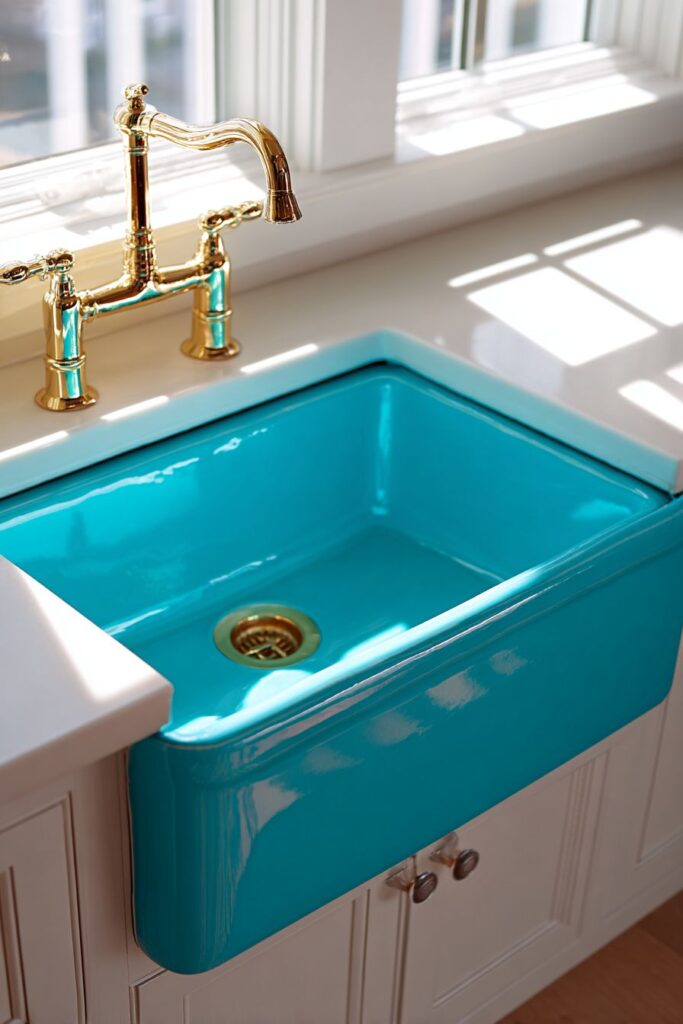
The turquoise selection draws inspiration from natural elements like tropical waters and precious stones, creating connections to natural beauty while providing an unexpected pop of color that transforms routine kitchen activities into more joyful experiences. The glossy finish enhances color saturation while creating reflective surfaces that interact dynamically with changing light conditions throughout the day.
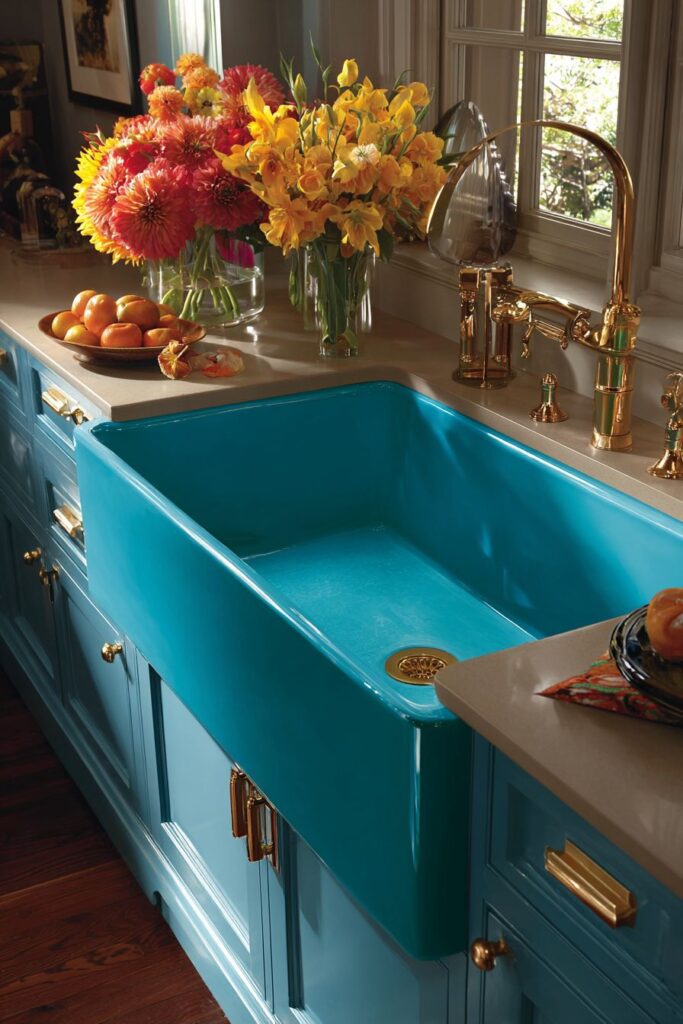
The decision to maintain neutral surroundings allows the colorful sink to function as intended focal point without creating visual competition that could overwhelm the space or create chaotic color relationships. This restrained approach to the surrounding palette demonstrates sophisticated color theory application that maximizes the impact of the bold choice while maintaining overall design harmony.
Brass fixtures complement the warm undertones present in the turquoise while introducing metallic elements that add luxury and sophistication to the bold color statement. The warm brass tones create harmonious relationships with the blue-green sink while providing traditional appeal that grounds the contemporary color choice in timeless material traditions.
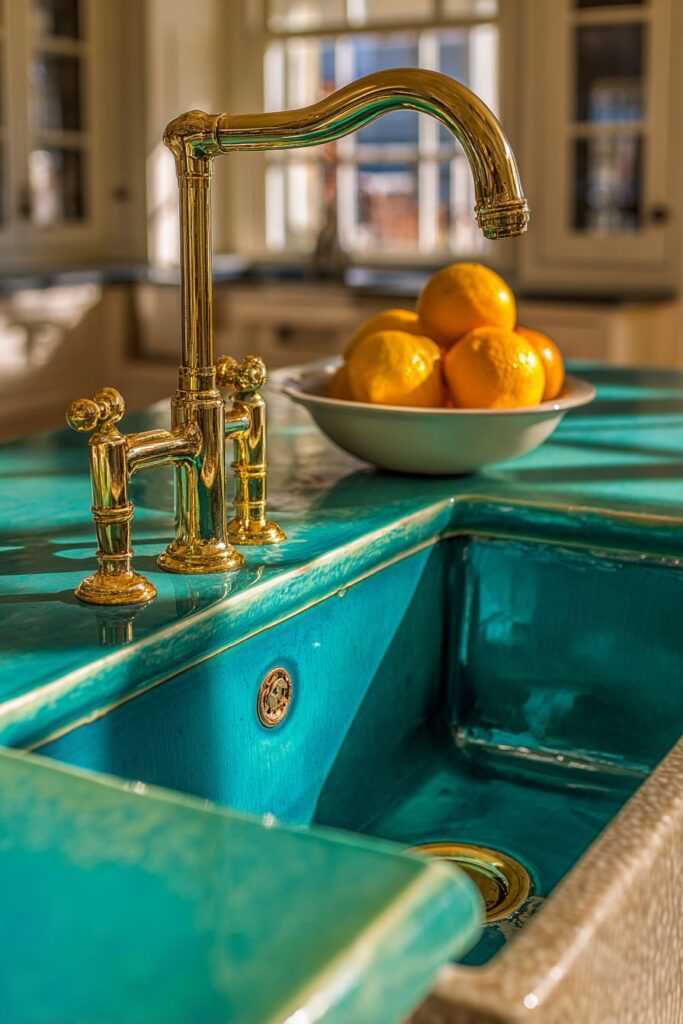
Key Design Tips:
- Choose colors with natural inspiration to ensure long-term appeal beyond temporary trends
- Maintain neutral backgrounds when using bold focal colors to prevent visual competition
- Consider light interaction with glossy finishes to maximize color impact throughout the day
- Coordinate warm metallics with cool colors to create sophisticated color temperature relationships
- Plan for color evolution as part of the overall design story that can accommodate future updates
18. Smart Technology Integration Future
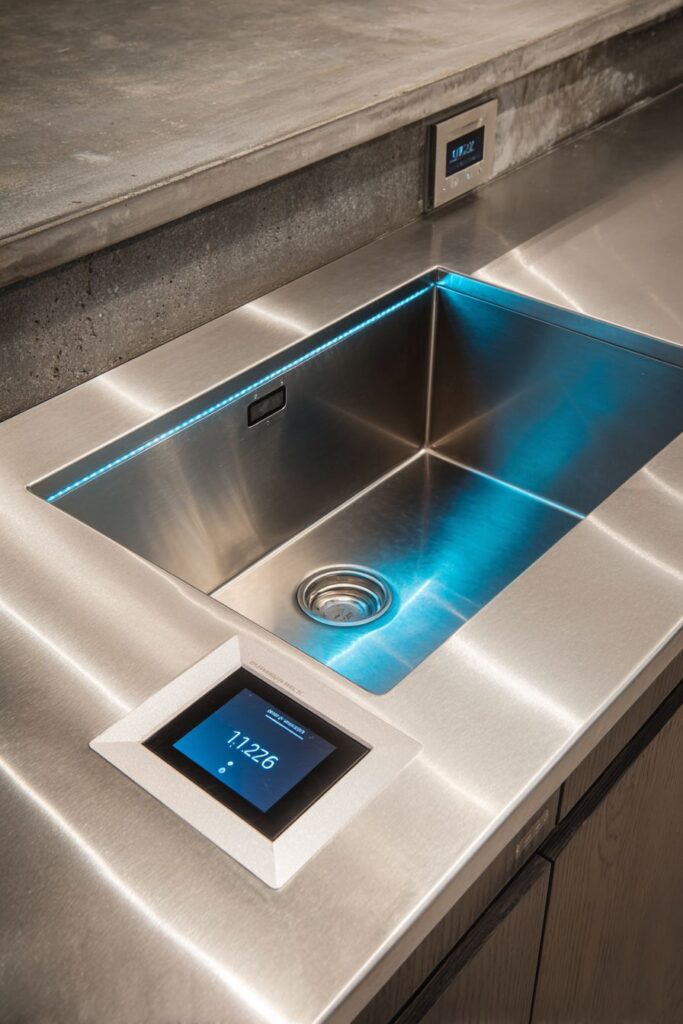
The intersection of technology and traditional kitchen functionality creates exciting possibilities through smart sink design incorporating touchless activation, built-in soap dispensers, and LED lighting around the basin rim that transform routine activities into more efficient and hygienic experiences. This technological approach addresses contemporary concerns about cleanliness while providing convenience features that enhance daily workflows without compromising aesthetic appeal.
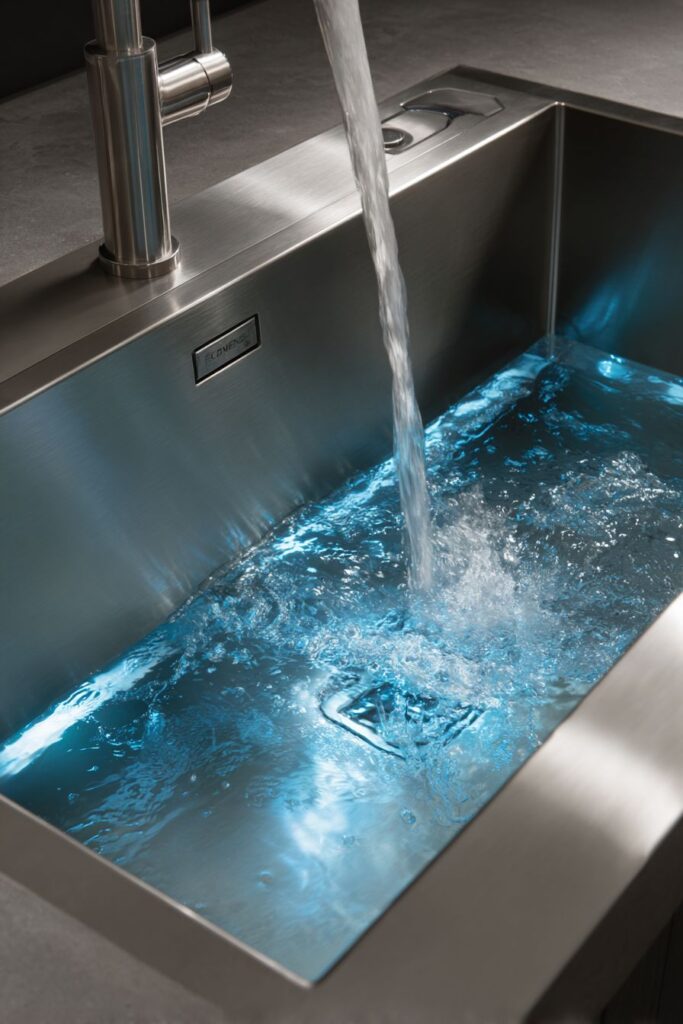
The touchless activation system eliminates cross-contamination concerns while providing precise flow control that can significantly reduce water waste through more intentional usage patterns. The sophisticated sensors distinguish between intentional activation and incidental movement, providing reliable operation that supports rather than disrupts normal kitchen workflows while maintaining the clean aesthetic lines that contemporary design demands.
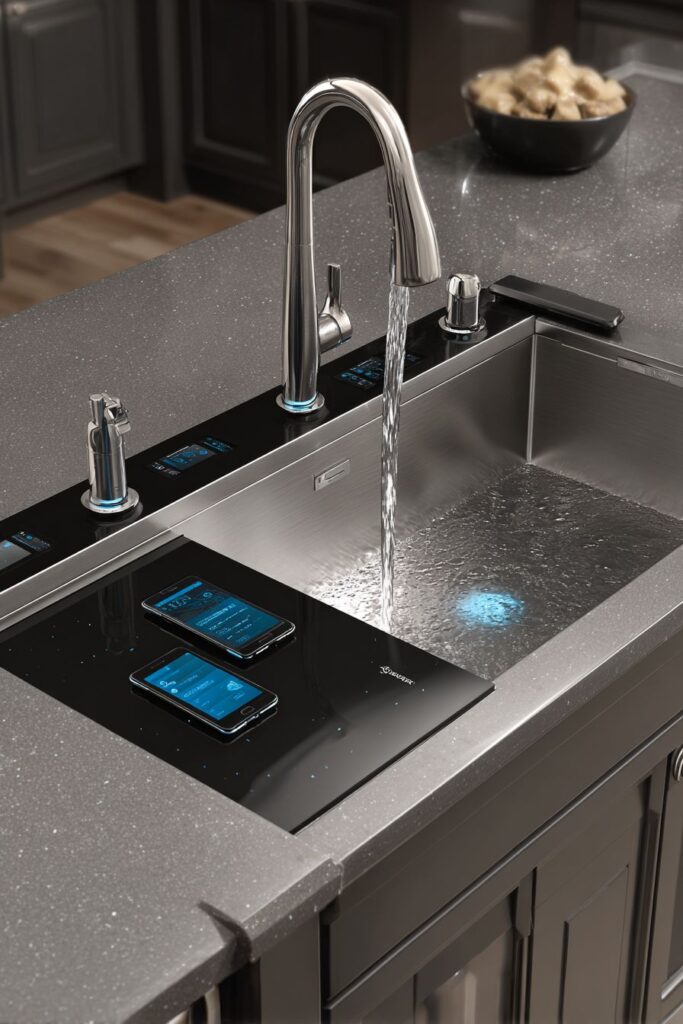
Digital displays showing water temperature and usage patterns provide information that supports both safety and conservation goals while appealing to users who appreciate data-driven insights into their household resource consumption. The temperature display prevents scalding accidents while the usage monitoring encourages more conscious water consumption that benefits both household budgets and environmental stewardship.
The LED lighting system serves both practical and aesthetic purposes, providing task illumination that eliminates shadows in the work area while creating dramatic visual effects that highlight the innovative nature of the installation. The lighting can be programmed for different intensities and even color temperatures to support various activities from detailed food preparation to ambient entertaining lighting.
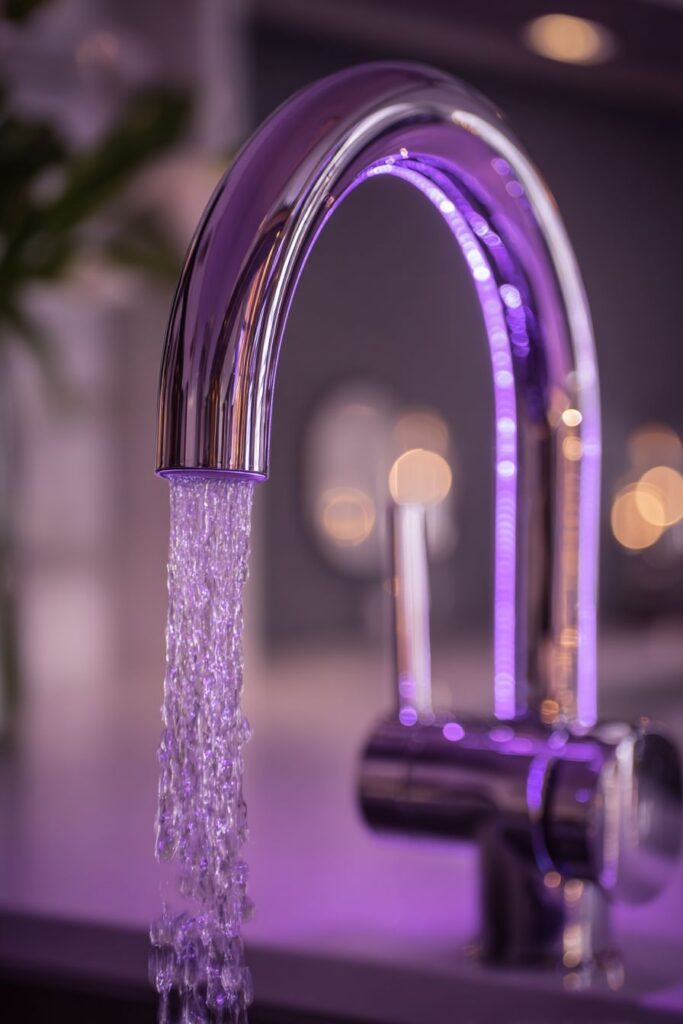
Key Design Tips:
- Integrate technology seamlessly into clean design aesthetics rather than adding obvious technological elements
- Choose features that enhance rather than complicate daily workflows and maintenance routines
- Plan for updates in rapidly evolving technology through modular design approaches
- Consider privacy implications of data collection features and provide appropriate user controls
- Maintain backup functionality for essential features in case of technological failures
19. Eco-Friendly Sustainable Innovation
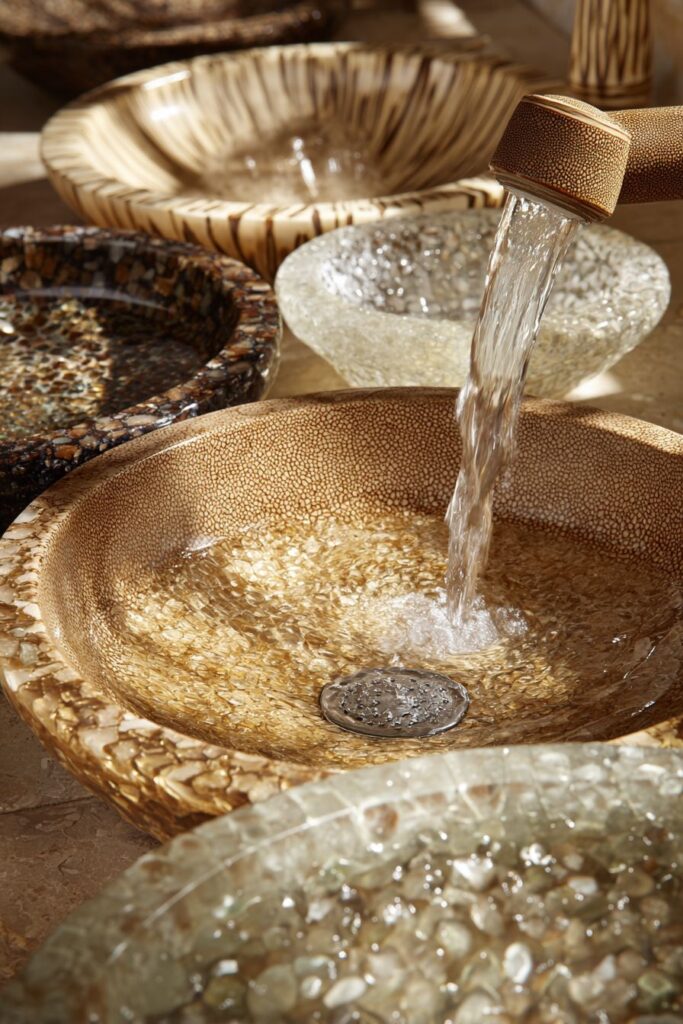
The growing commitment to environmental responsibility finds beautiful expression through recycled glass countertops with visible aggregate combined with bamboo fiber composite sink in natural earth tones that demonstrate how sustainable material choices can create unique aesthetic appeal while supporting ecological stewardship goals. This approach proves that environmental consciousness doesn’t require aesthetic compromise but rather opens new possibilities for distinctive design solutions.
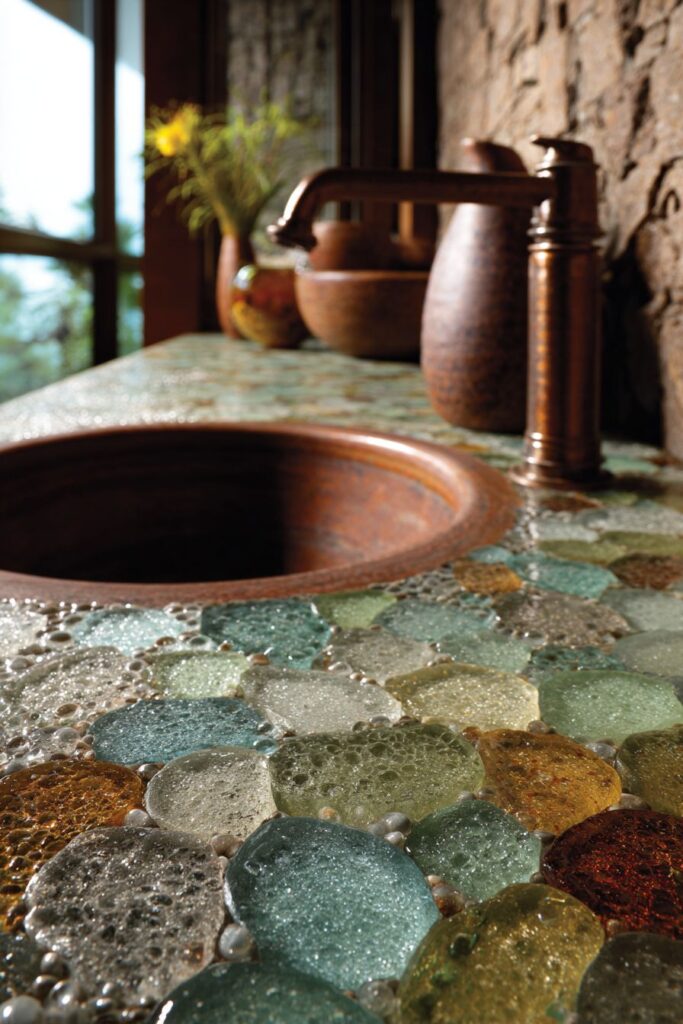
The recycled glass aggregate creates sparkle and visual interest that changes throughout the day as light conditions shift, transforming what could be a purely functional surface into dynamic artwork that celebrates the beauty found in reclaimed materials. Each piece of glass tells a story of previous use while contributing to a stunning new application that reduces waste while creating beauty.
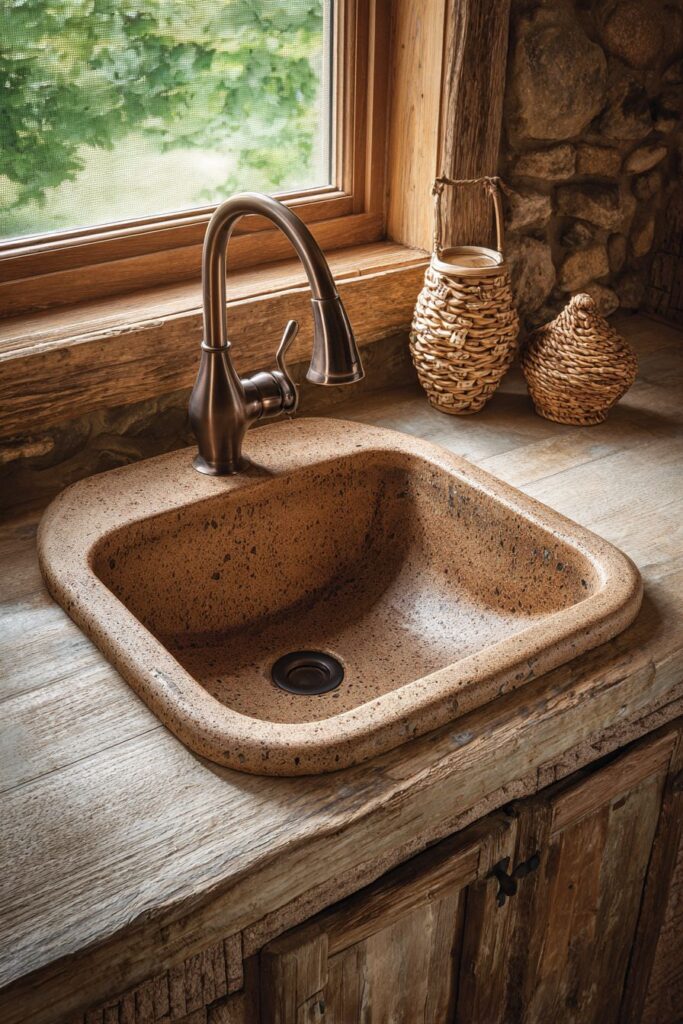
The bamboo fiber composite material provides natural antibacterial properties while offering superior durability compared to traditional ceramic options. Bamboo’s rapid growth rate makes it an exceptionally sustainable choice while its natural variations create organic textures that feel comfortable and inviting rather than manufactured. The earth tone coloration connects to natural environments while providing neutral backdrop that coordinates with a wide variety of design approaches.
The water-efficient faucet with aerator demonstrates how environmental consciousness can be integrated throughout the design while providing practical benefits through reduced utility costs and resource consumption. Modern aerator technology maintains satisfying water pressure while significantly reducing actual water usage, proving that efficiency and luxury can coexist successfully.
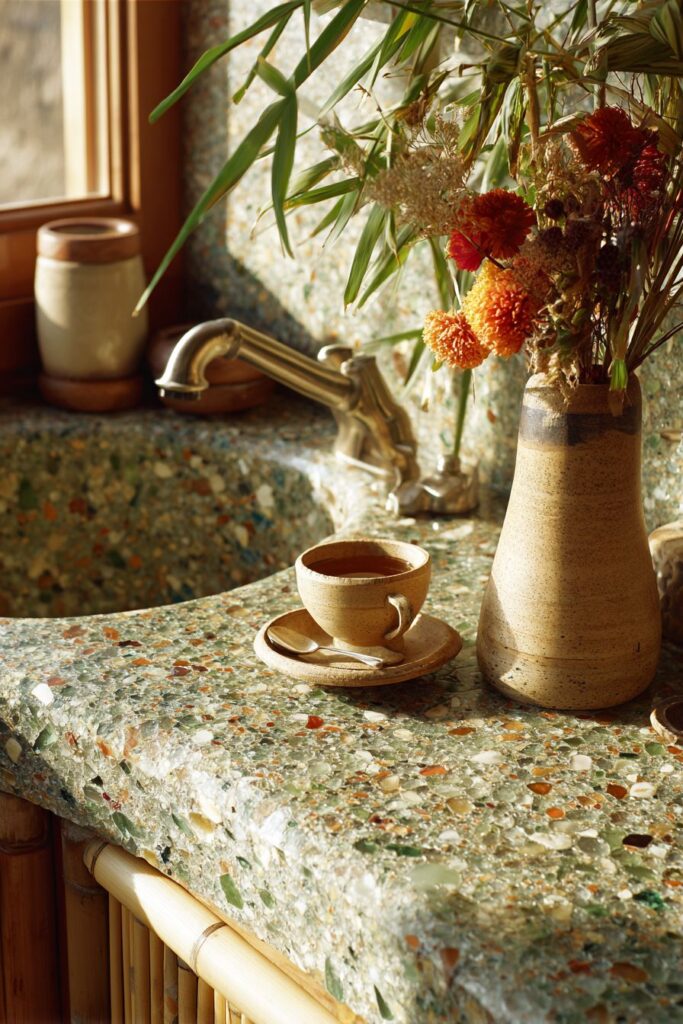
Key Design Tips:
- Celebrate recycled content as beautiful design elements rather than concealing sustainable choices
- Choose rapidly renewable materials like bamboo that minimize environmental impact
- Integrate efficiency features that provide practical benefits alongside environmental benefits
- Consider lifecycle impacts of material choices including manufacturing and disposal implications
- Educate users about sustainable features to maximize environmental benefits through proper use
20. Custom Artisanal Craftsmanship Excellence
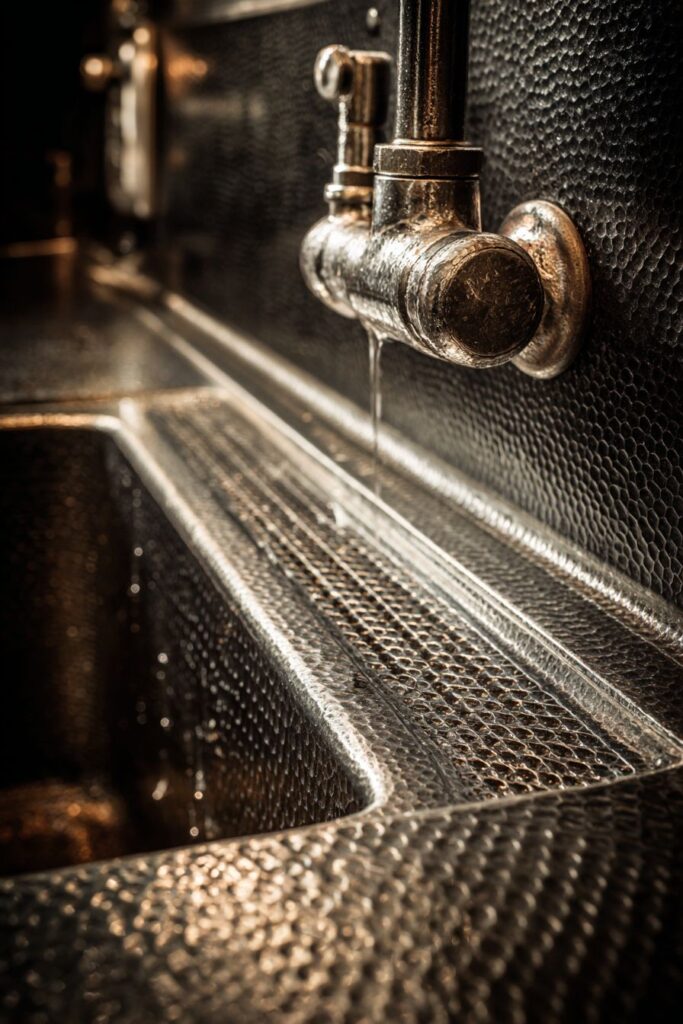
The pinnacle of personalized design achievement reveals itself through custom hand-forged stainless steel sink with hammered texture and integrated drainboard area featuring precisely sloped surfaces for optimal water management that demonstrates how skilled craftsmanship can transform functional requirements into artistic expression. Each hammer mark represents an individual moment in the creation process, resulting in a completely unique piece that cannot be replicated through mass production methods.
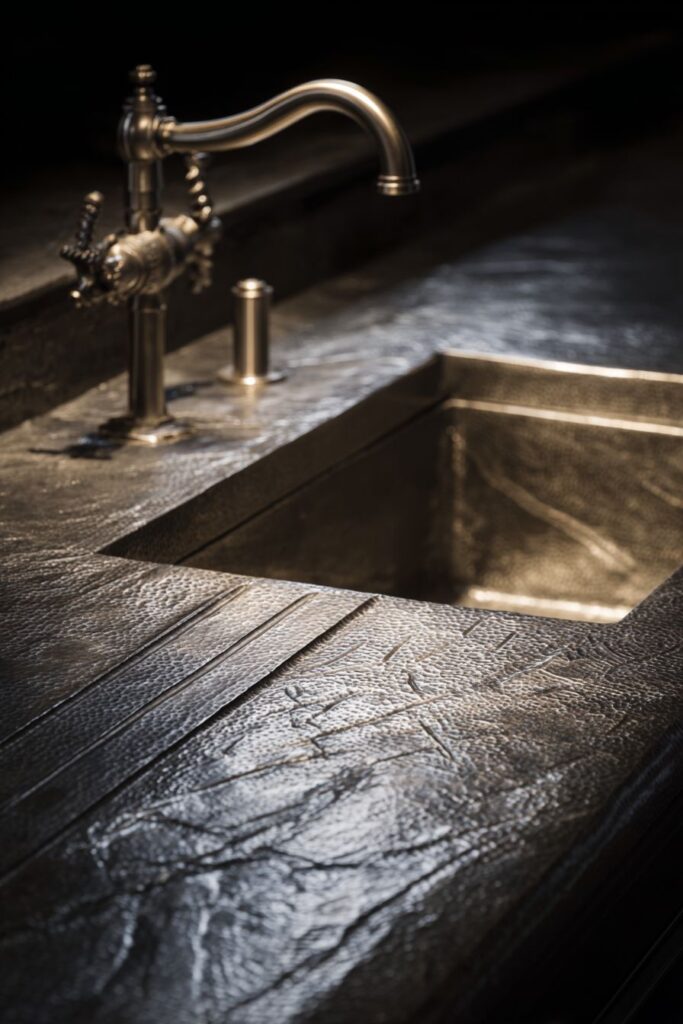
The artisanal approach allows for customization of every dimension and detail to perfectly serve specific workflow requirements and spatial constraints while creating a focal point that reflects the homeowner’s appreciation for authentic craftsmanship. The hand-forging process creates subtle variations in thickness and texture that add visual interest while providing practical benefits through improved durability and water flow characteristics.
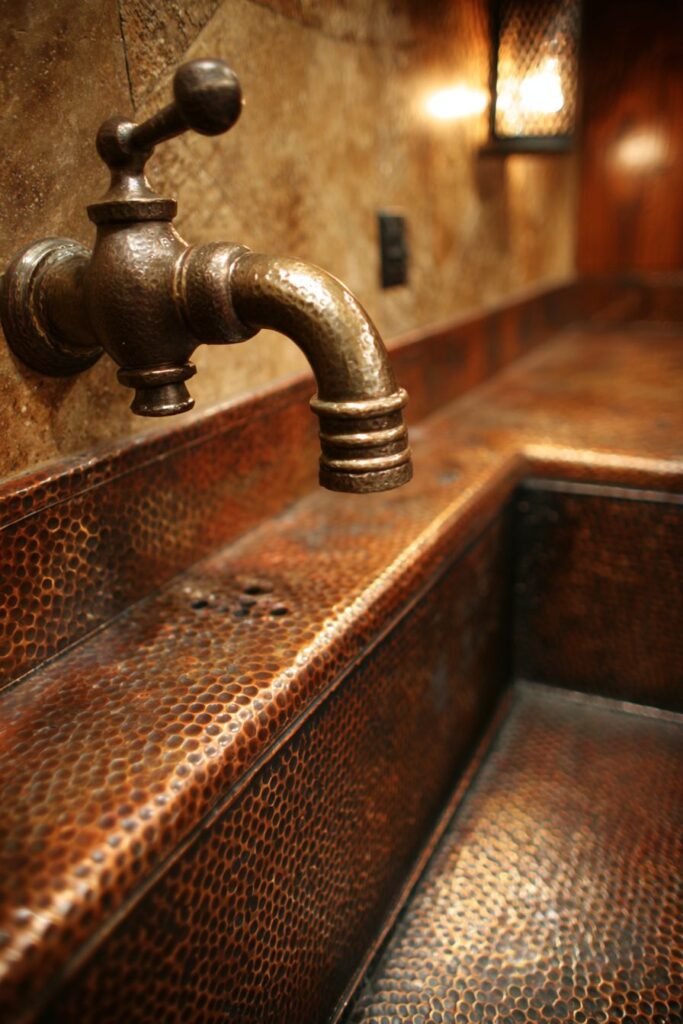
The integrated drainboard area demonstrates how custom fabrication can address specific functional requirements that standard products cannot accommodate. The precise slope calculations ensure efficient water management while the seamless integration eliminates joints where bacteria could harbor, creating both aesthetic and hygienic benefits that justify the investment in custom work.
The commercial-style faucet matches the professional aesthetic while providing the durability and functionality required to complement the substantial investment represented by the custom sink fabrication. The professional-grade construction ensures that every component of the installation meets the same high standards of quality and performance.
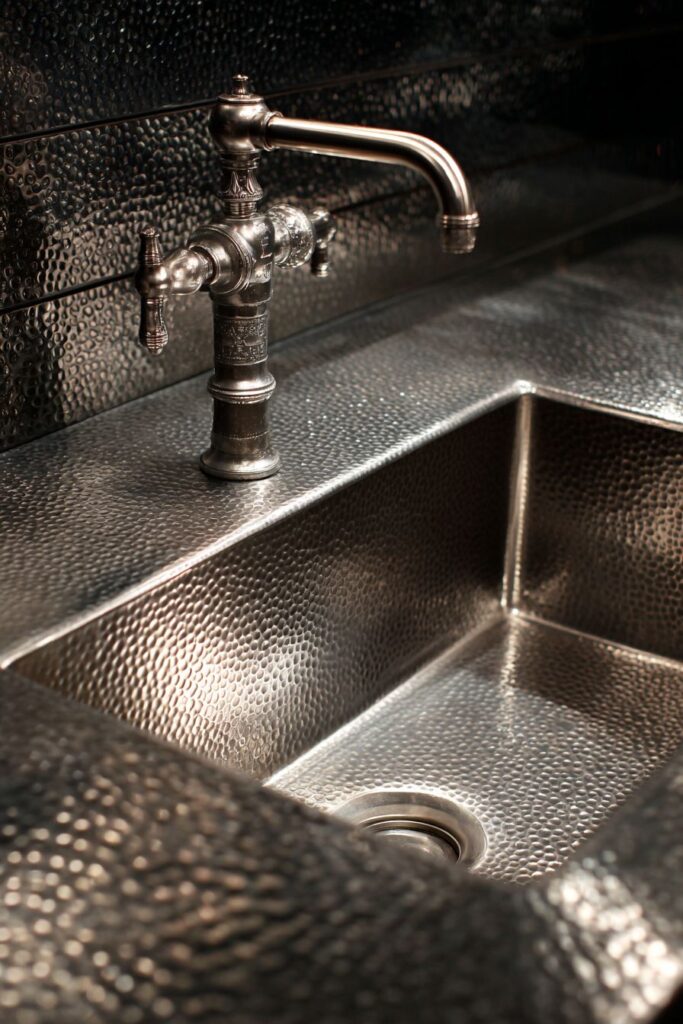
Key Design Tips:
- Invest in skilled artisans who can translate functional requirements into beautiful custom solutions
- Plan for unique dimensions that optimize workflow within specific spatial constraints
- Celebrate tool marks and other evidence of hand fabrication as design features rather than imperfections
- Integrate functional elements like drainboards seamlessly into the overall design composition
- Document the process to preserve the story of creation as part of the sink’s long-term value
Why These Kitchen Sink Designs Represent the Best Options
These twenty kitchen sink designs represent the finest examples of contemporary sink innovation because they successfully address the diverse needs of modern homeowners while showcasing the incredible range of materials, styles, and technologies available in today’s market. Each design approach offers unique advantages that make it the optimal choice for specific lifestyle requirements, spatial constraints, and aesthetic preferences.
The modern undermount stainless steel design excels as the best choice for contemporary homes because it provides unmatched durability, hygienic properties, and seamless integration with modern countertop materials. The curved bottom innovation addresses the primary complaint about traditional stainless sinks while the brushed finish minimizes maintenance requirements that busy households appreciate.
Farmhouse apron-front ceramic sinks remain the gold standard for traditional kitchen aesthetics because they provide authentic period character while offering generous capacity that accommodates large-scale cooking and entertaining requirements. The substantial visual presence creates focal points that anchor traditional design schemes while the ceramic material provides time-tested durability and easy maintenance.
Corner-mounted configurations represent breakthrough innovations in space optimization that transform previously unusable areas into highly functional workstations. These designs prove particularly valuable in urban environments where every square inch of kitchen space must serve multiple purposes efficiently.
Industrial commercial-grade installations offer unmatched durability and professional functionality that appeals to serious home cooks who demand restaurant-quality performance in residential settings. The honest expression of materials and construction methods creates authentic character that cannot be achieved through decorative approaches.
Luxury artisanal options like hand-hammered copper and custom stainless steel fabrication provide unique aesthetic appeal and superior craftsmanship that justifies premium investment through exceptional longevity and timeless beauty. These designs appreciate in value while providing daily satisfaction through their superior functional performance.
Scandinavian minimalist designs excel in creating peaceful, uncluttered environments that support mindful living while providing all necessary functionality through thoughtfully edited design approaches. The emphasis on natural materials and abundant light creates spaces that feel larger and more serene than their actual dimensions might suggest.
Mediterranean and colorful ceramic options provide opportunities for artistic expression and cultural connection that transform routine kitchen activities into more joyful experiences. These designs prove that functionality and beauty can coexist while expressing individual personality and cultural appreciation.
Smart technology integration addresses contemporary concerns about hygiene, efficiency, and resource conservation while providing convenience features that enhance daily life. These forward-thinking designs anticipate future needs while providing immediate benefits through improved functionality.
Sustainable material choices like recycled glass and bamboo composites demonstrate environmental responsibility while creating unique aesthetic opportunities that distinguish conscious homeowners’ spaces from conventional installations. These designs prove that ecological stewardship and design excellence complement rather than compromise each other.
Custom fabrication options provide the ultimate personalization opportunities that address specific functional requirements while creating completely unique installations that reflect individual taste and lifestyle needs. The investment in custom work provides long-term satisfaction through perfect fit and superior performance.
Each of these design approaches represents the best option within its category because it successfully balances aesthetic appeal, functional performance, material durability, and cost-effectiveness while providing distinctive character that enhances the overall kitchen environment. The diversity of options ensures that every homeowner can find the perfect solution that reflects their personal style while meeting their specific functional requirements and budget constraints.
Conclusion
The kitchen sink has evolved far beyond its humble origins as a simple washing basin to become a sophisticated design element that can dramatically transform both the functionality and aesthetic appeal of your culinary space. These twenty inspiring design concepts demonstrate the incredible diversity of options available to contemporary homeowners, from cutting-edge smart technology integration to timeless artisanal craftsmanship that celebrates traditional manufacturing techniques.
Whether you’re drawn to the clean sophistication of modern undermount installations, the warm charm of farmhouse apron-front designs, or the bold statement potential of colorful ceramic options, the perfect sink design exists to complement your lifestyle, spatial requirements, and aesthetic preferences. The key lies in understanding how different materials, configurations, and style approaches can work together to create spaces that serve your practical needs while expressing your personal design sensibilities.
As you consider implementing these ideas in your own kitchen renovation or new construction project, remember that the best sink design is one that seamlessly integrates functional excellence with visual appeal while reflecting your individual lifestyle and entertaining patterns. Take time to evaluate your specific needs, explore material options that appeal to your aesthetic preferences, and consider how your sink choice will interact with other design elements throughout your kitchen space.
The investment in a thoughtfully chosen kitchen sink design pays dividends daily through improved functionality, enhanced visual appeal, and the satisfaction that comes from working in a space that truly reflects your personal style and supports your culinary aspirations. These inspiring examples provide the foundation for creating your own perfect kitchen sink solution that will serve your household beautifully for years to come.
